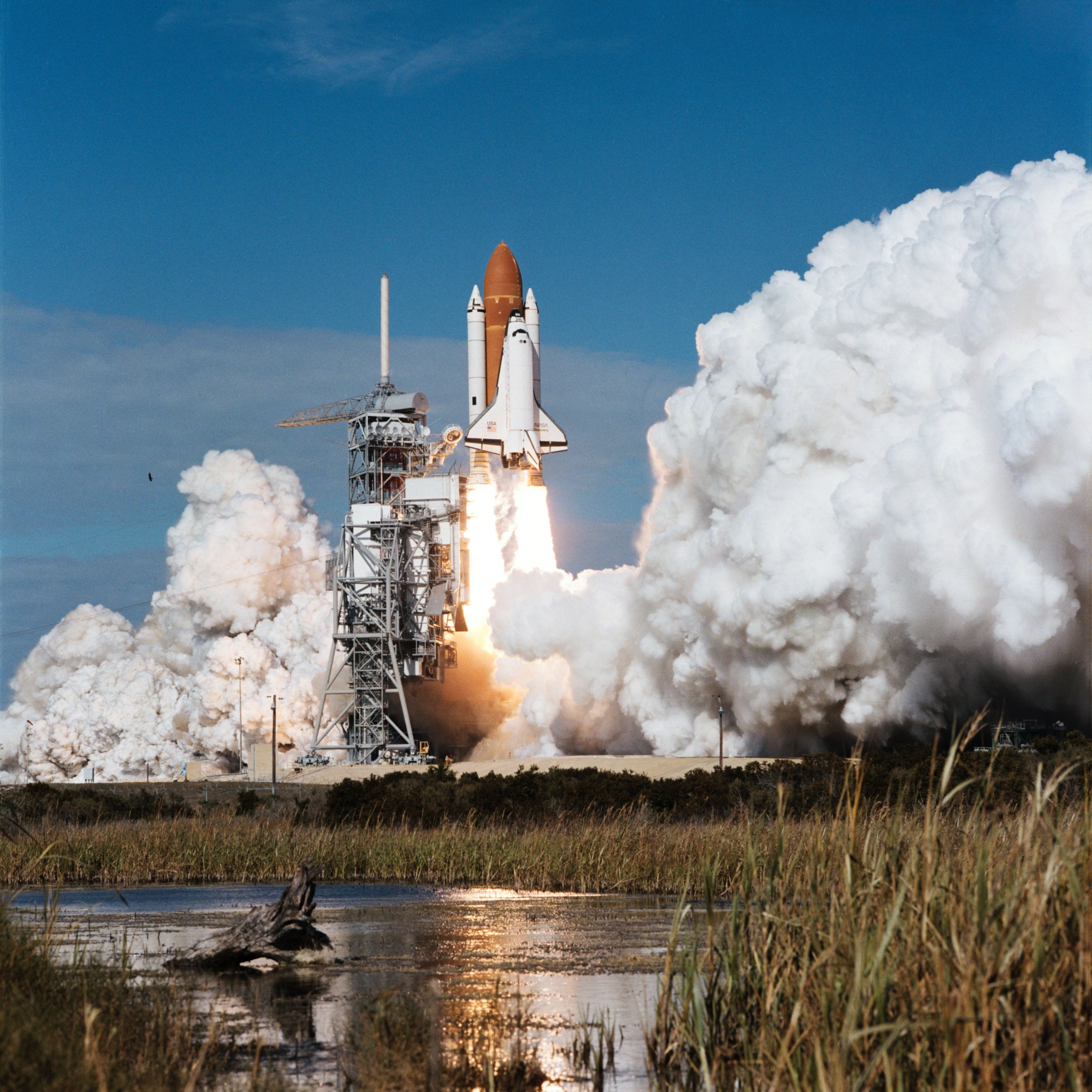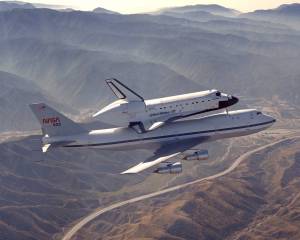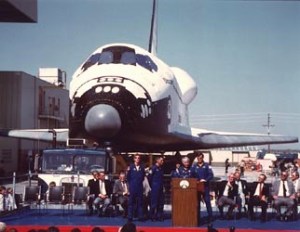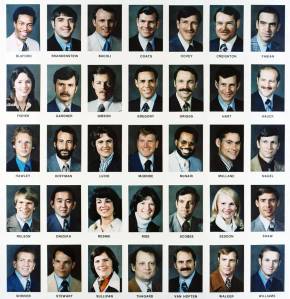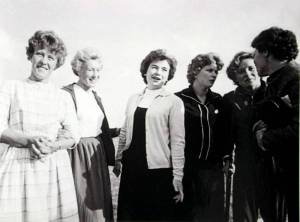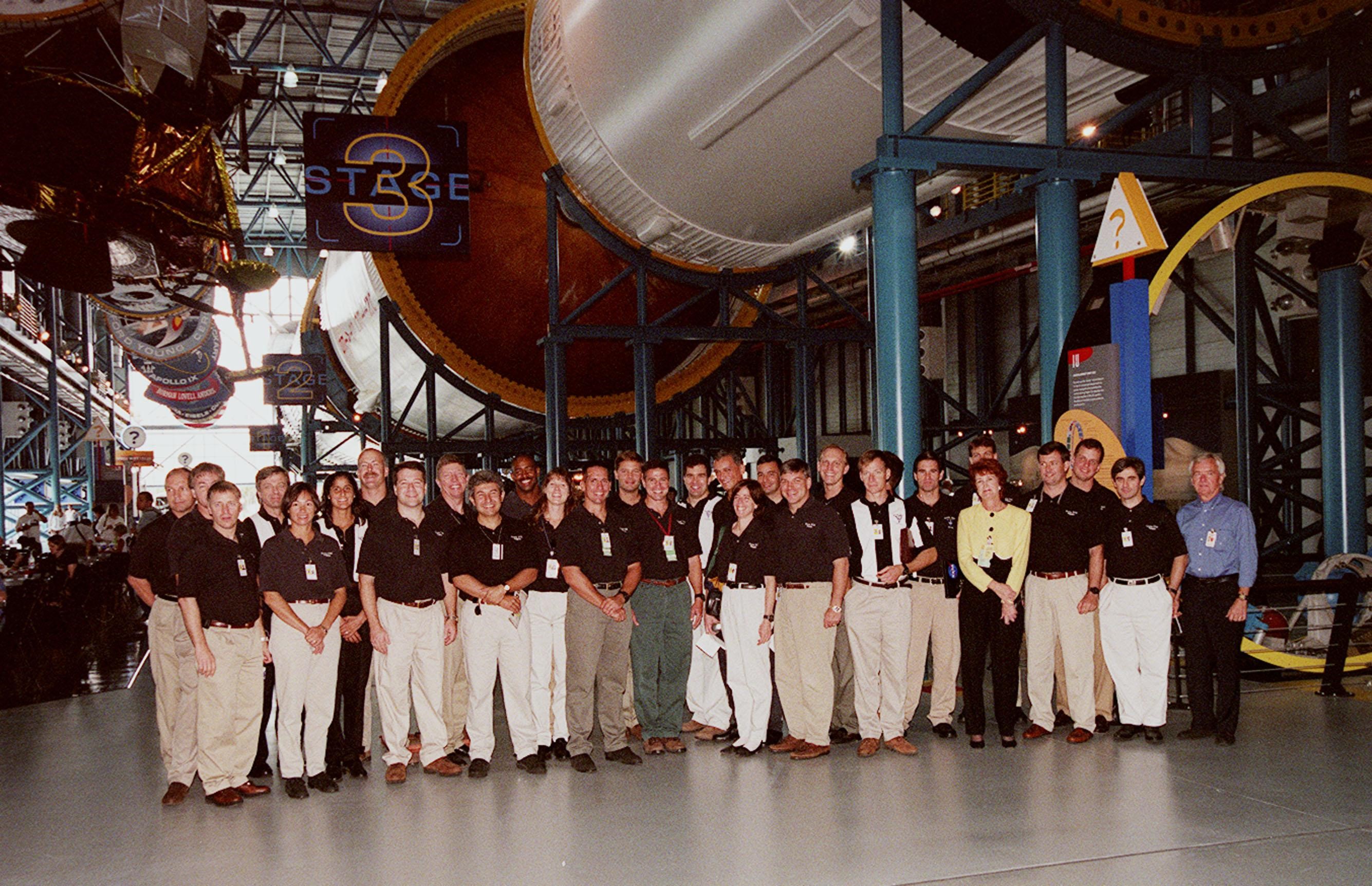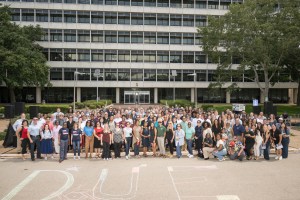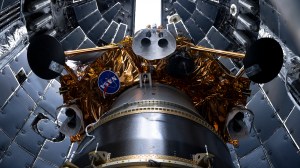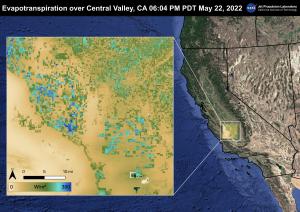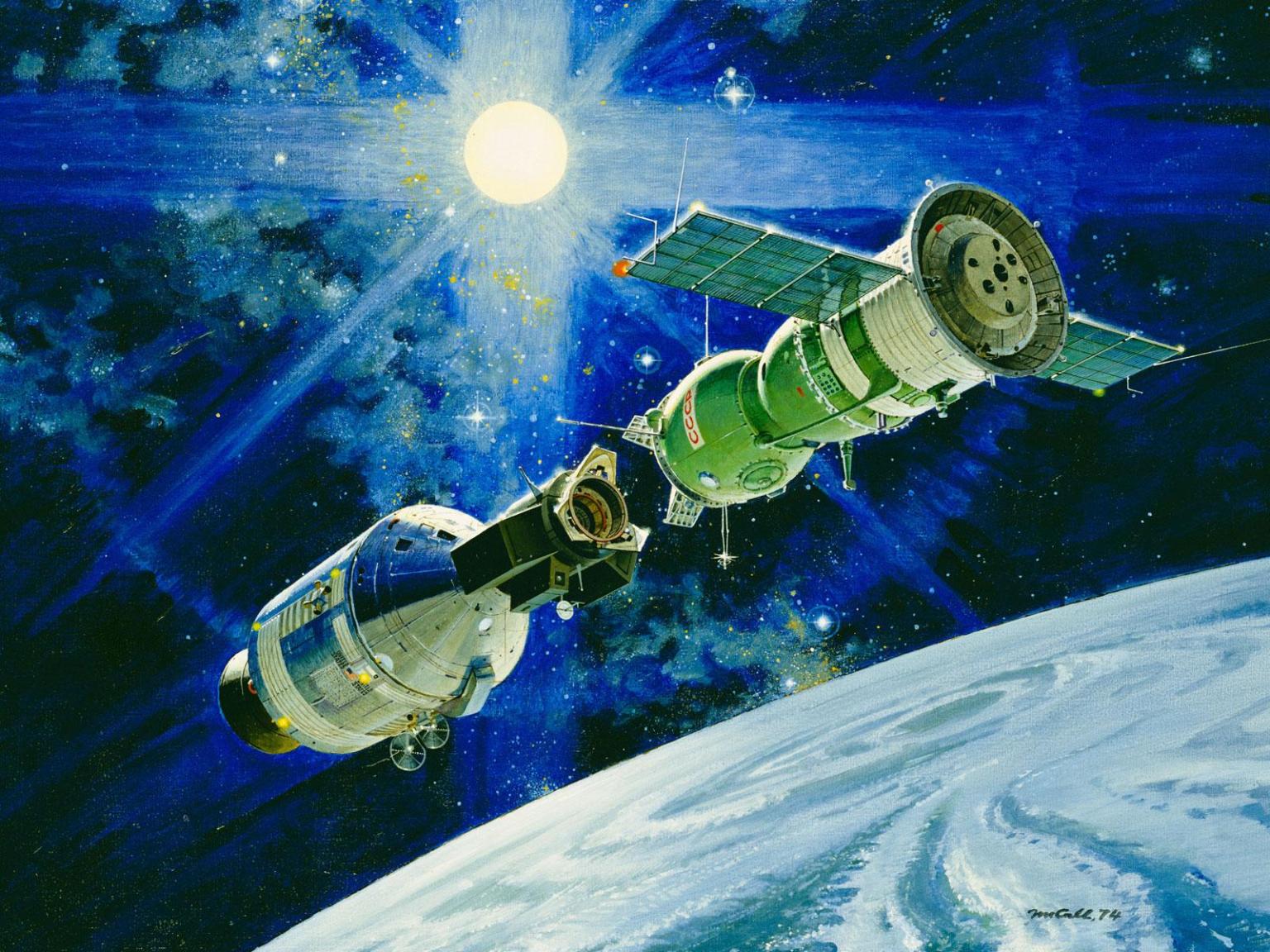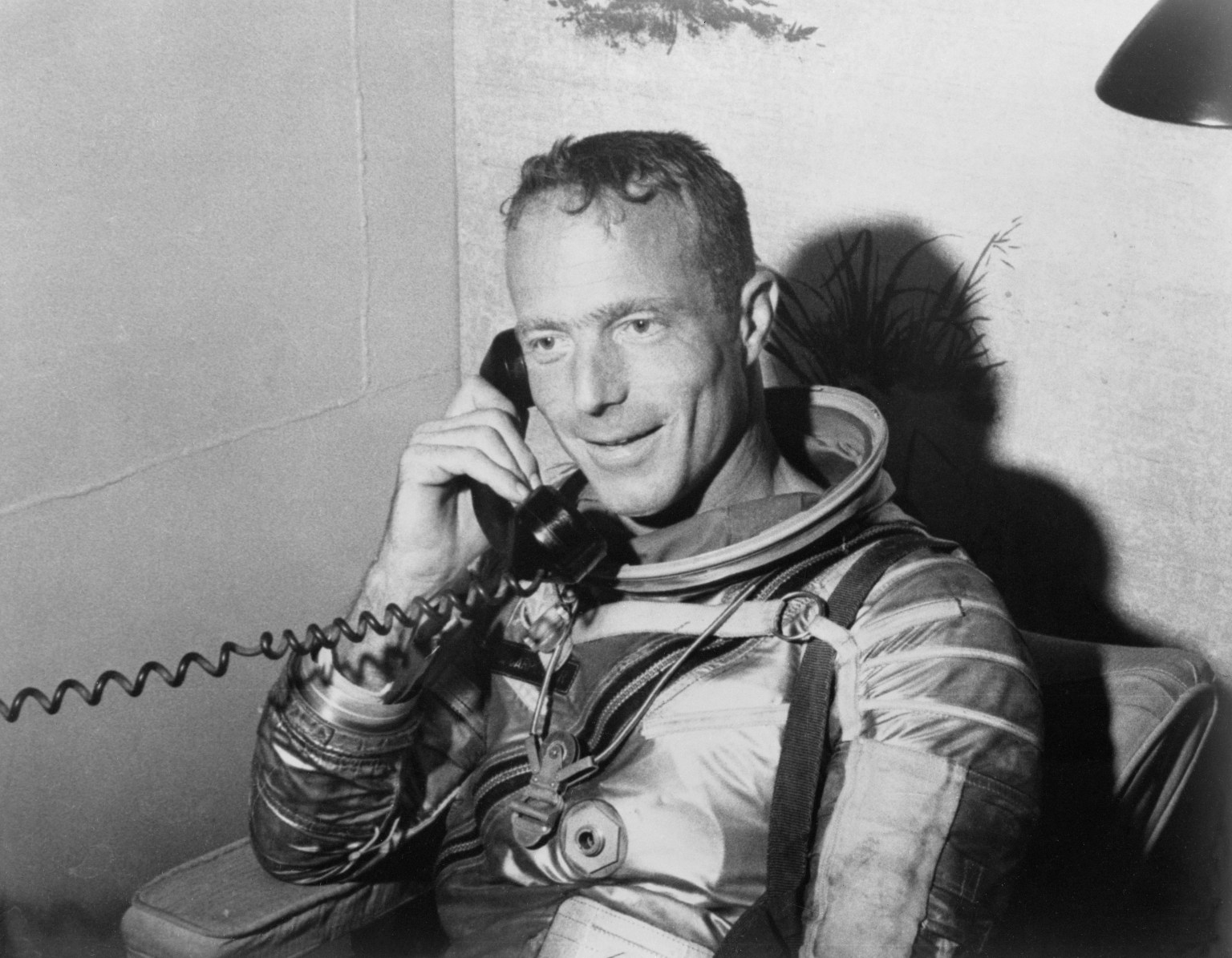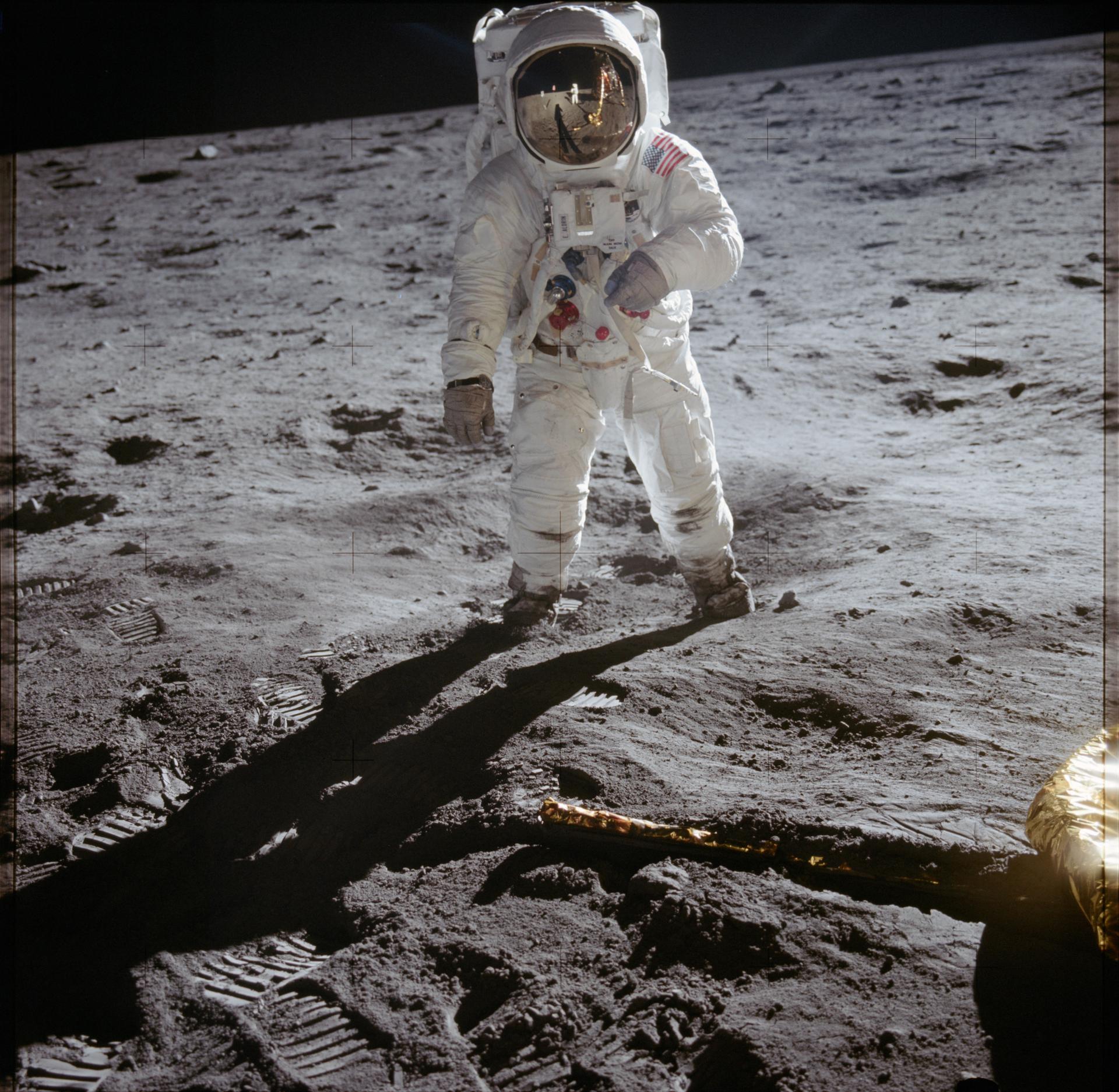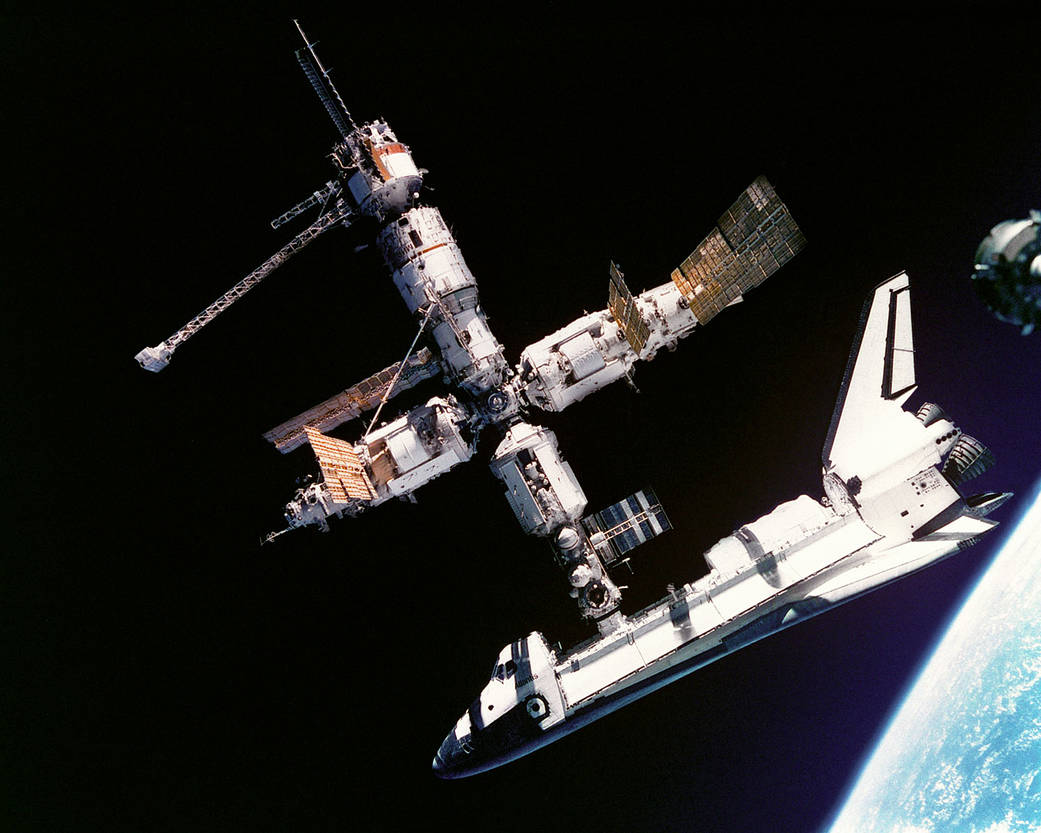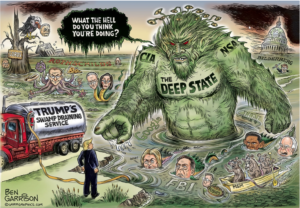Reading view
Helen Hays, Who Helped Bring Terns Back to Long Island Sound, Dies at 94
Super Bowl gives our military heroes a chance to mark 250 years of service
As America turns its attention to Super Bowl LIX in New Orleans, We the Veterans and Military Families will proudly be on hand to launch Military250, a unifying national campaign marking the 250th anniversaries of the U.S. Army, Navy and Marine Corps. This initiative celebrates military history and the enduring values that make America great: service, sacrifice and civic pride.
Before American patriots proclaimed our independence in 1776, the Founders mustered an Army, Navy and Marine Corps that fought and sacrificed to earn our freedom. So, before the celebration of America’s 250th anniversary in 2026, for which President Donald Trump recently formed a White House task force to coordinate plans, we want to honor the service of those who were instrumental in achieving our independence, setting us on a course to be the nation we are today.
The Military250 campaign will spotlight key moments in American history, by formally recognizing 250 veteran and military family service organizations, 250 leaders continuing their service and 250 acts of service, demonstrating how actions from everyday people are the backbone that strengthens America.
SENATE CONFIRMS DOUG COLLINS TO LEAD THE DEPARTMENT OF VETERANS AFFAIRS
The journey toward these historic milestones over the next 18 months is an opportunity to pause and reflect on our nation’s past, honor the contributions of all Americans and look ahead toward the future we want to create for the next generation and beyond. Through these moments, and many more, Military250 reminds us that patriotism is more than a concept. It’s a practice rooted in our daily actions.
As the U.S. Army announces record recruitment numbers, Military250 is a challenge to every American: How will you carry forward this legacy of service? For military families and veterans, this might mean taking on local civic leadership opportunities or mentoring others through a veteran service organization. For others, it could mean volunteering, voting, or even serving as a poll worker.
CLICK HERE FOR MORE FOX NEWS OPINION
At We the Veterans and Military Families, we’ve seen how everyday actions of patriotic participation can transform communities. They foster connection and remind us of the shared values that bind us together. Grounded in the universal values of service and sacrifice, this campaign brings together those from all corners – community organizations, athletes and sports executives, business leaders and everyday Americans who want to celebrate what’s best about our nation. To honor our past and chart a new course forward toward the next frontier.
We the Veterans is honored to be invited by the National Football League to be on media row at Super Bowl LIX. As we kick off Military250 on America’s biggest stage, take a moment to reflect on how you can give back to the country that has given us so much. Find ways to serve — whether through a local veterans’ organization, your neighborhood school or a national charity you care about.
This campaign is more than a commemoration, it’s a reminder that patriotism requires so much more than waving a flag on Independence Day. It’s about embodying the courage, service and unity that have defined our country for 250 years. As President Ronald Reagan reminded us, "freedom is a fragile thing and it's never more than one generation away from extinction."
If you’re looking for a way to celebrate America and the shared history that binds us together, join us in honoring our past and building a future that lives up to the sacrifices on the shoulders of the giants on which we all stand.
Together, we can ensure that America’s next 250 years are defined by the same spirit of resilience and service that built this nation, and that our nation remembers General Jimmy Doolittle’s words that "There's nothing stronger than the heart of a volunteer."
Ben Keiser is a Marine Corps veteran and a co-founder and executive chairman of We the Veterans and Military Families.
UK Open to Slavery Reparations Talks with Caribbean Nations: Report
The leftist Labour Party government is reportedly considering talks with Caribbean nations on the issue of reparations for the British Empire's role in the slave trade.
The post UK Open to Slavery Reparations Talks with Caribbean Nations: Report appeared first on Breitbart.
Long-lost van Gogh painting was sold at Minnesota garage sale for $50, according to report
Experts at a New York-based art data science firm believe a long-lost piece by Vincent van Gogh was sold at a garage sale in Minnesota and recently published a report about its investigation.
In a Jan. 28 news release, LMI Group International announced the publication of a 450-page report on a painting called "Elimar," which it believes is a van Gogh original.
The painting was bought at a Minnesota garage sale for $50 in 2016, and, according to The Wall Street Journal, it could be worth as much as $15 million.
Experts believe the painting was done while the artist was a patient of the Saint-Paul sanitarium in Saint-Rémy-de-Provence between May 1889 and May 1890. It was found with "E L I M A R" on the front of the canvas.
The report describes the piece, which measures 45.7 by 41.9 centimeters, as an "emotionally rich, profoundly personal work created during the final and tumultuous chapter of van Gogh's life."
"In this portrait, van Gogh reimagines himself as an older, wiser man depicted against the serene palette-knife-sculpted sky and smooth expanse of the water, evoking van Gogh’s lifelong personal interest with life at sea," the release stated.
The portrait shows a somber-looking man with a pipe in his mouth and a fur hat standing by the ocean. The painting has "the same three-quarter view of all four van Gogh self-portraits painted in 1889," according to the report.
"'Elimar' features stylistically distinct elements that appear throughout van Gogh’s oeuvre, including distinctive marks under the eyes, marks at the corner of the mouth, eyelashes, ‘whites of the eyes’ often in blue or green, a pronounced nasal-labial line, cursory shorthand describing the tragus and helix, and the color of cuff set off from the sleeve," the statement said.
ARCHAEOLOGISTS STUMPED BY STRANGE ALIEN-LIKE FIGURINE DATING BACK 7,000 YEARS: 'RAISES QUESTIONS'
Analysts also found that a strand of red hair was partially embedded in the corner of the painting, and scientists confirmed it belonged to a male. The painting also had a finish made of egg white, which van Gogh was known to have used.
Despite the stylistic similarities, the Van Gogh Museum has denied the painting's connection to the famed Dutch artist. In February 2019, LMI Group received this statement from the museum: "We have carefully examined the material you supplied to us and are of the opinion, based on stylistic features, that your work … cannot be attributed to Vincent van Gogh."
In a statement, LMI Group President Lawrence M. Shindell said his organization took a "data-based approach" to verifying the origin of the painting, and that it "represents a new standard of confidence for bringing to light unknown or forgotten works by important artists."
"By integrating science and technology with traditional tools of connoisseurship, historical context, formal analysis, and provenance research, we aim both to expand and tailor the resources available for art authentication based on the unique properties of the works under our care," Shindell said.
Fox News Digital reached out to the Van Gogh Museum for comment.
Fire Rips Through Bell Tower of Paris 12th Arrondissement Town Hall
The 12th district town hall was built in 1876 with a 36-meter (118-foot) high bell tower on top of its main entrance.
The post Fire Rips Through Bell Tower of Paris 12th Arrondissement Town Hall appeared first on Breitbart.
40 Years Ago: STS-51C, the First Dedicated Department of Defense Shuttle Mission
On Jan. 24, 1985, space shuttle Discovery took off from NASA’s Kennedy Space Center (KSC) in Florida on STS-51C, the first space shuttle mission entirely dedicated to the Department of Defense (DOD). As such, many of the details of the flight remain classified. Discovery’s crew of Commander Thomas “T.K.” Mattingly, Pilot Loren Shriver, Mission Specialists Ellison Onizuka and James Buchli, and Payload Specialist Gary Payton deployed a classified satellite that used an Inertial Upper Stage (IUS) to reach its final geostationary orbit. The three-day mission ended with a landing at KSC. Postflight inspection of the Solid Rocket Boosters (SRBs) revealed the most significant erosion of O-ring seals seen in the shuttle program up to that time, attributed to unusually cold weather before and during launch.

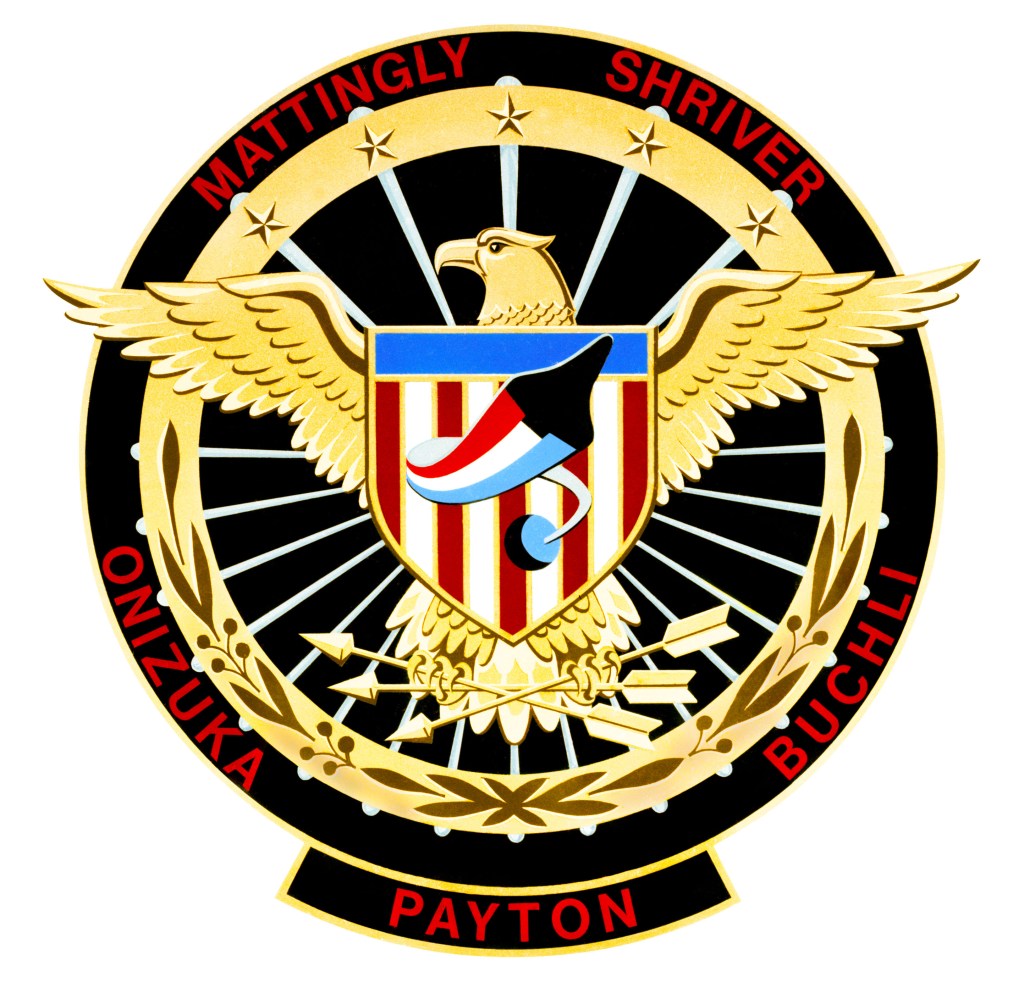
In October 1982, NASA assigned astronauts Mattingly, Shriver, Onizuka, and Buchli as the STS-10 crew for a dedicated DOD flight aboard Challenger then scheduled for September 1983. Payton joined the crew as a payload specialist in the summer of 1983 with Keith Wright assigned as his backup. The failure of the IUS on STS-6 in April 1983 delayed the STS-10 mission, that also used the IUS, until engineers could identify and fix the cause of the problem. By September 1983, NASA had remanifested the crew and the payload on STS-41F with a July 1984 launch, that changed to STS-41E by November 1983. Additional delays in fixing the IUS delayed the mission yet again, by June 1984 redesignated as STS-51C and slated for December 1984 aboard Challenger.
STS-51C marked the third spaceflight for Mattingly, selected in 1966 as part of NASA’s fifth group of astronauts. He served on the prime crew for Apollo 13 until exposure to German measles forced his last-minute replacement by his backup. He then flew on Apollo 16 and STS-4. For Shriver, Onizuka, and Buchli, all three selected as astronauts in the class of 1978, STS-51C marked their first trip into space. The U.S. Air Force selected Payton and Wright in August 1979 in its first class of Manned Spaceflight Engineers, and STS-51C marked Payton’s first and only space mission.
In November 1984, NASA decided to delay STS-51C from December 1984 to January 1985 and swap orbiters from Challenger to Discovery. Postflight inspections following Challenger’s STS-41G mission in October 1984 revealed degradation of the bonding materials holding thermal protection system tiles onto the orbiter, requiring the replacement of 4,000 tiles. The time required to complete the work precluded a December launch. Tests conducted on Discovery prior to its November STS-51A mission revealed the bonding material to be sound.
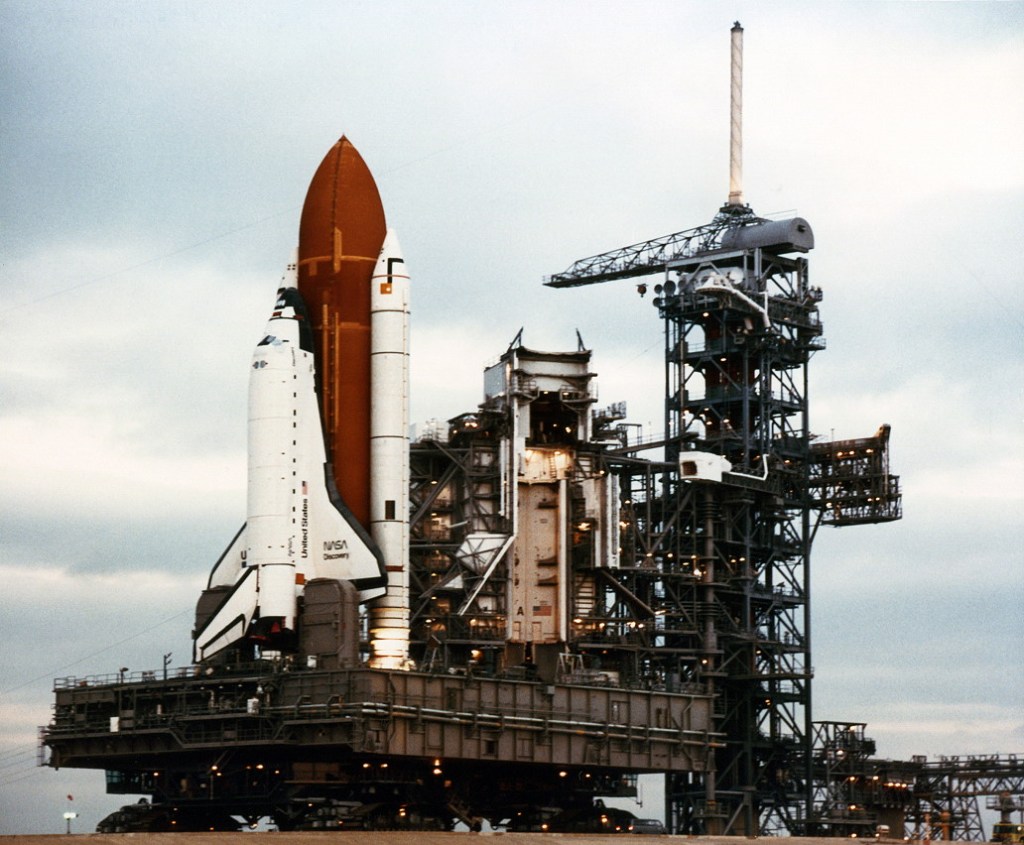
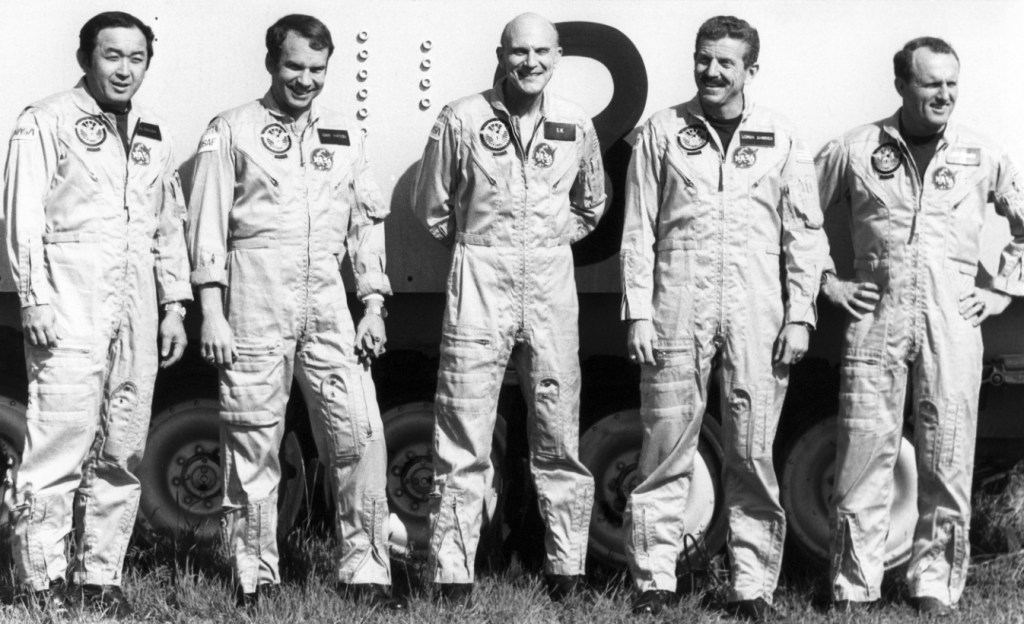
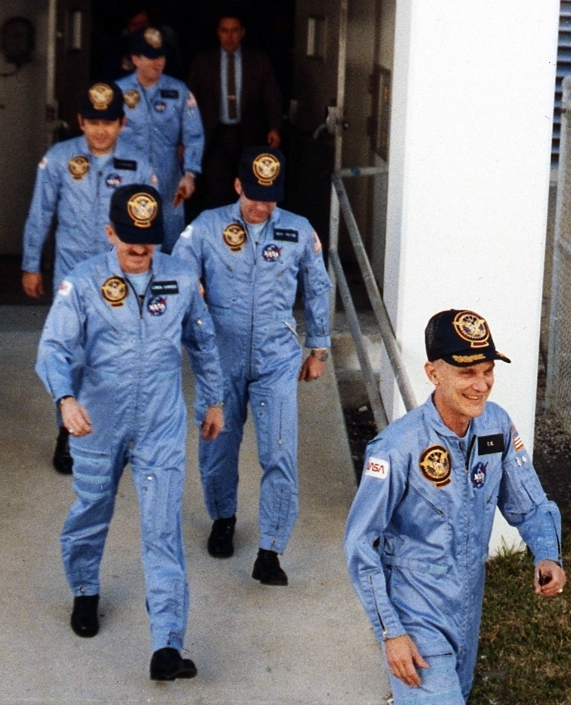
On Jan. 5, 1985, Discovery rolled out from KSC’s Vehicle Assembly Building, where workers mated it with its External Tank (ET) and SRBs, to Launch Pad 39A. There, engineers conducted the Terminal Countdown Demonstration Test, essentially a dress rehearsal for the actual countdown, on Jan. 6-7, with the crew participating in the final few hours much as they would on launch day. The astronauts returned to KSC on Jan. 20 to prepare for the planned launch on Jan. 23. The day before, NASA managers decided to delay the launch by one day due to unseasonably cold weather, with concern about sub-freezing temperatures causing ice to form on the ET and possibly coming loose during ascent and damaging the vehicle. The DOD had requested that NASA keep the actual launch time secret until T minus nine minutes, with most of the countdown taking place hidden from public view.
Liftoff of Discovery on its third mission, STS-51C, came at 2:50 p.m. EST on Jan. 24, beginning the 15th space shuttle flight. Eight and a half minutes later, Discovery and its five-man crew had reached orbit. And, at the DOD customer’s request, all public coverage of the mission ended. Although NASA could not reveal the spacecraft’s orbital parameters, trade publications calculated that Discovery first entered an elliptical orbit, circularized over the next few revolutions, prior to Onizuka deploying the IUS and payload combination on the seventh orbit. Neither NASA nor the DOD have released any imagery of the deployment or even of the payload bay, with only a limited number of in-cabin and Earth observation photographs made public.
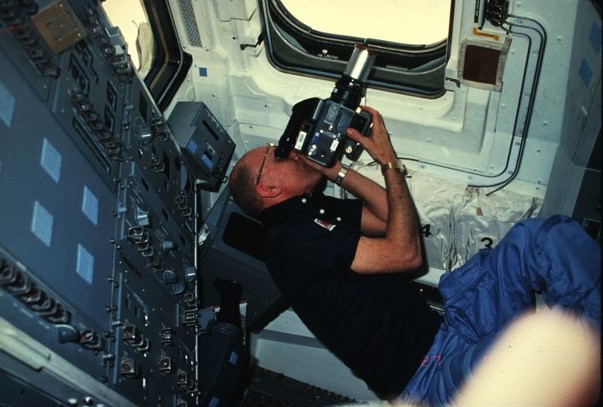
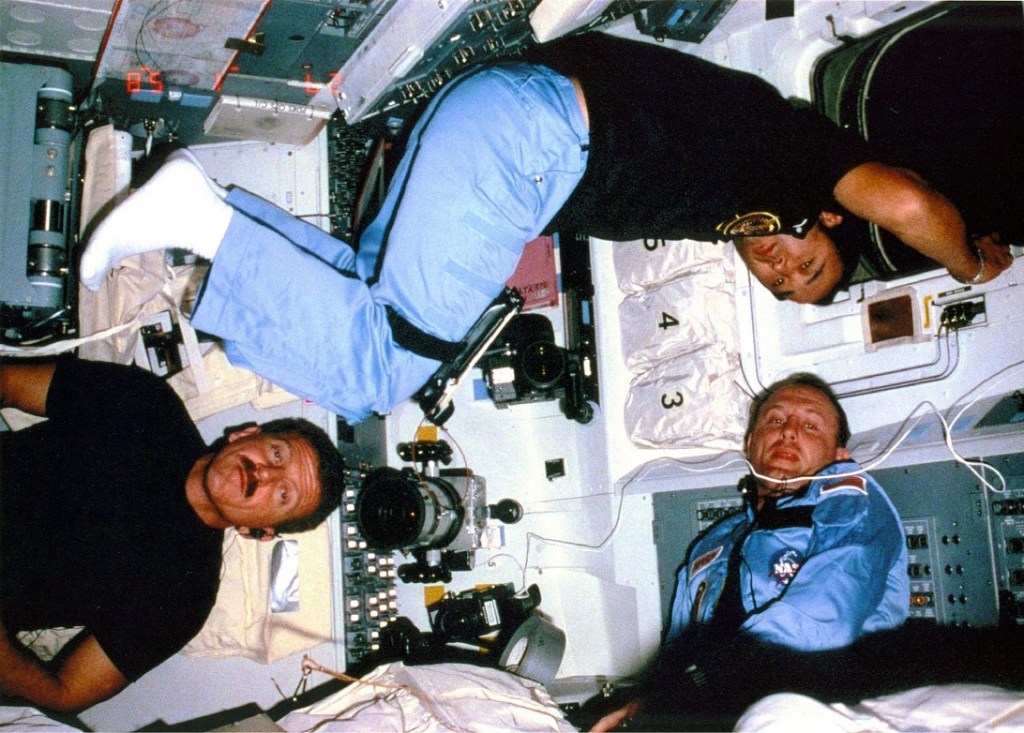
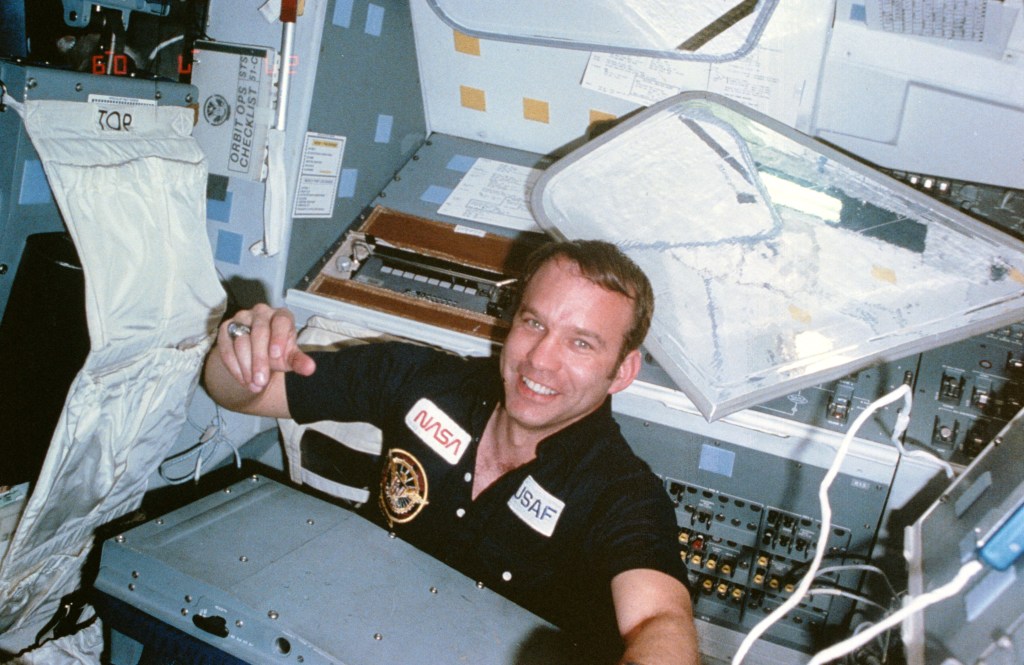
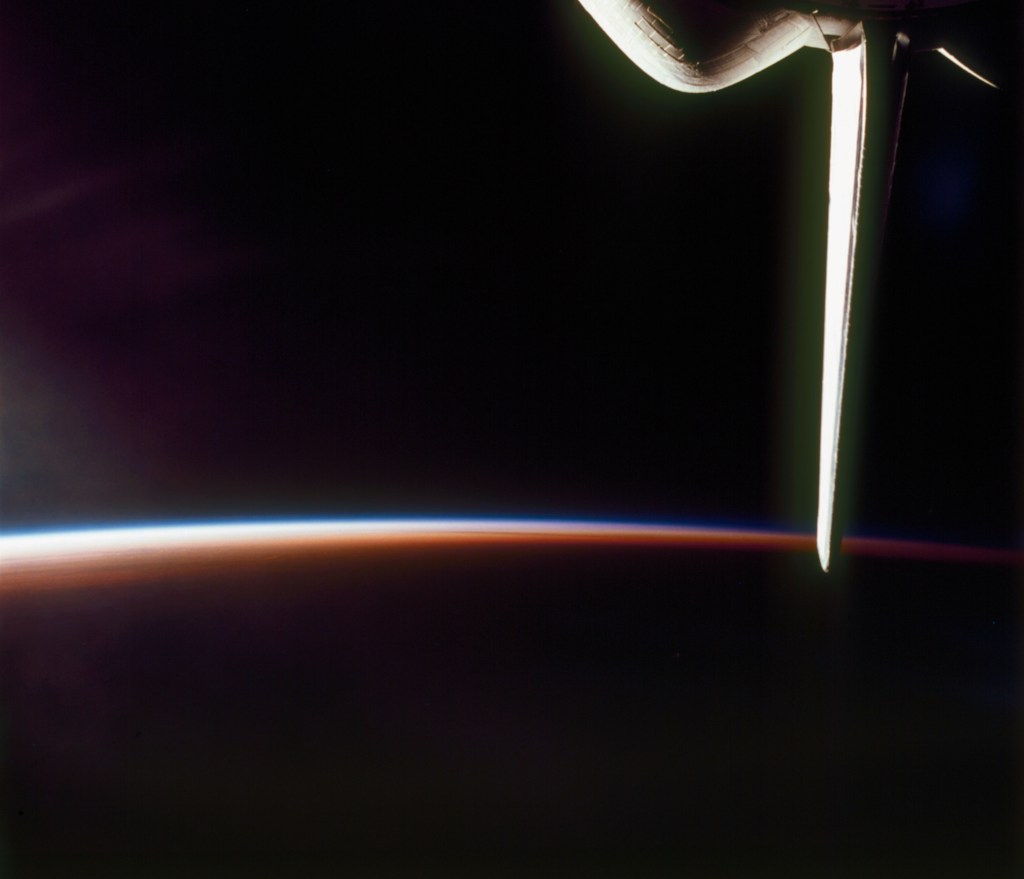
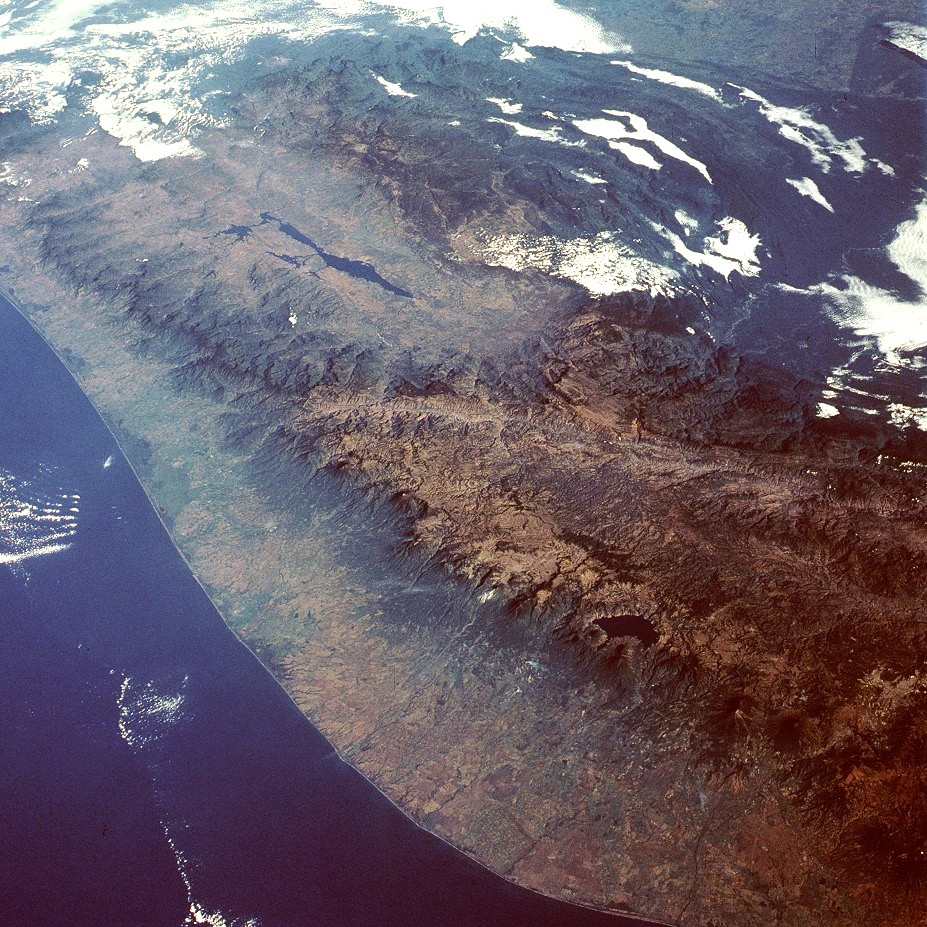
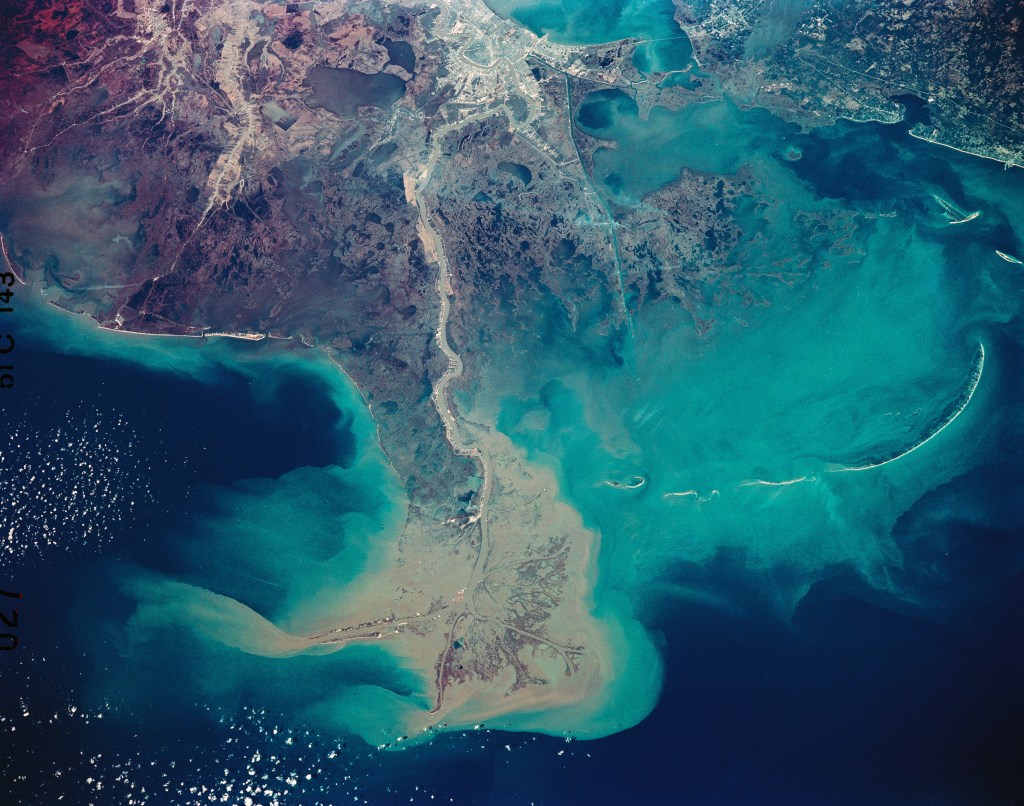
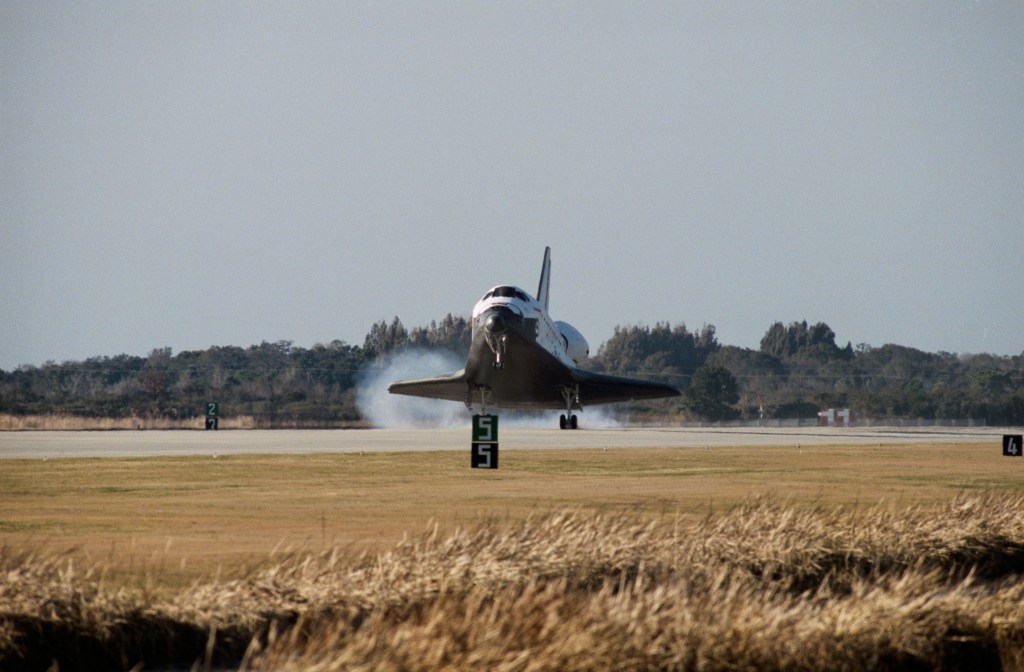
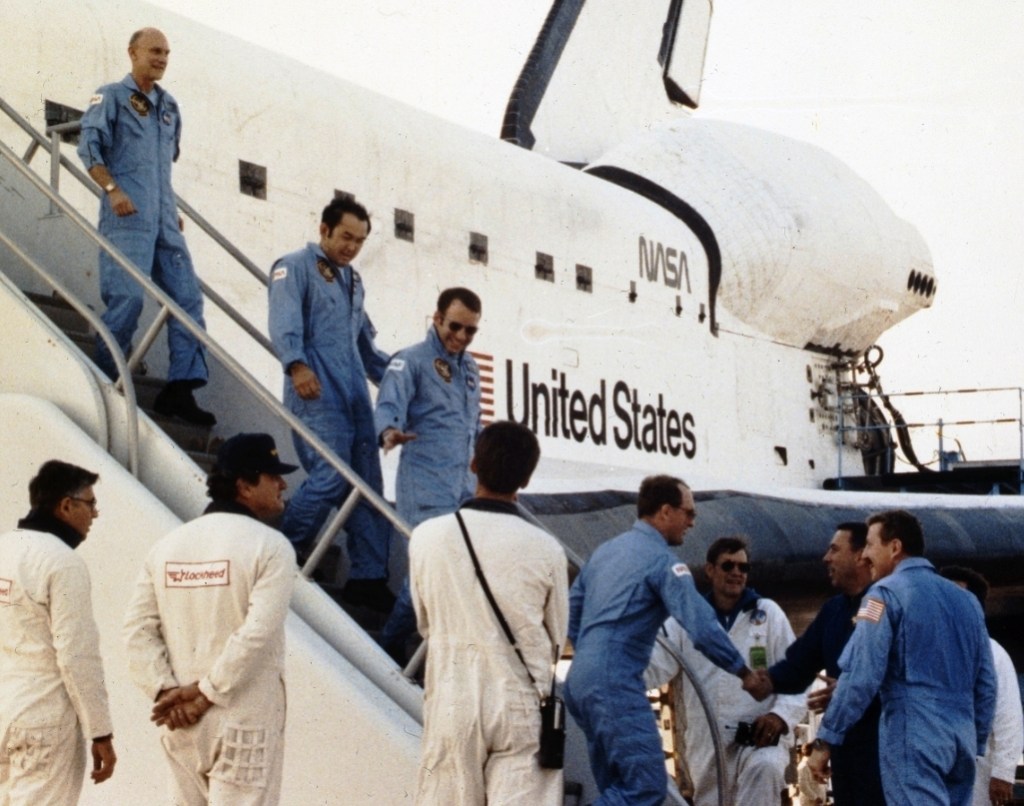
To maintain the mission’s secrecy, NASA could reveal the touchdown time only 16 hours prior to the event. On Jan. 27, Mattingly and Shriver brought Discovery to a smooth landing at KSC’s Shuttle Landing Facility after a flight of three days one hour 33 minutes, the shortest space shuttle mission except for the first two orbital test flights. The astronauts orbited the Earth 49 times. About an hour after touchdown, the astronaut crew exited Discovery and boarded the Astrovan for the ride back to crew quarters. Neither NASA management nor the astronauts held a post mission press conference. The U.S. Air Force announced only that the “IUS aboard STS-51C was deployed from the shuttle Discovery and successfully met its mission objectives.” Later in the day, ground crews towed Discovery to the Orbiter Processing Facility to begin preparing it for its next planned mission, STS-51D in March.
Postscript
Following the recovery of SRBs after each shuttle mission, engineers conducted detailed inspections before clearing them for reuse. After STS-51C, inspections of the critical O-ring seals that prevented hot gases from escaping from the SRB field joints revealed significant erosion and “blow-by” between the primary and secondary O-rings. Both left and right hand SRBs showed this erosion, the most significant of the program up to that time. Importantly, these O-rings experienced weather colder than any previous shuttle mission, with overnight ambient temperatures in the teens and twenties. Even at launch time, the O-rings had reached only 60 degrees. Engineers believed that these cold temperatures made the O-rings brittle and more susceptible to erosion. One year later, space shuttle Challenger launched after similarly cold overnight temperatures, with O-rings at 57 degrees at launch time. The Rogers Commission report laid the blame of the STS-51L accident on the failure of O-rings that allowed super-hot gases to escape from the SRB and impinge on the hydrogen tank in the ET, resulting in the explosion that destroyed the orbiter and claimed the lives of seven astronauts. The commission also faulted NASA’s safety culture for not adequately addressing the issue of O-ring erosion, a phenomenon first observed on STS-2 and to varying degrees on several subsequent missions.
Explore More
American Culture Quiz: Test yourself on groundbreaking gadgets, medical marvels and Southern staples
The American Culture Quiz is a weekly test of our unique national traits, trends, history and people, including current events and the sights and sounds of the United States.
This week's quiz features groundbreaking gadgets, Southern staples and much more.
Can you get all eight questions right?
For more Lifestyle articles, visit www.foxnews.com/lifestyle
To try your hand at more quizzes from Fox News Digital, click here.
Also, to take our latest News Quiz — published every Friday — click here.
35 Years Ago: NASA Selects its 13th Group of Astronauts
On Jan. 17, 1990, NASA announced the selection of its 13th group of astronaut candidates. The diverse group comprised 23 candidates – seven pilots and 16 mission specialists. The group included one African American, one Asian American, and five women including the first female pilot and the first Hispanic woman. Following one year of astronaut candidate training, all 23 became eligible for technical assignments within the astronaut office and for assignment to space shuttle crews. All members of the group completed at least one spaceflight, making significant contributions to the space shuttle program, the Shuttle Mir program, important science missions, and assembly and maintenance of the International Space Station. Several went on to serve in key NASA management positions.
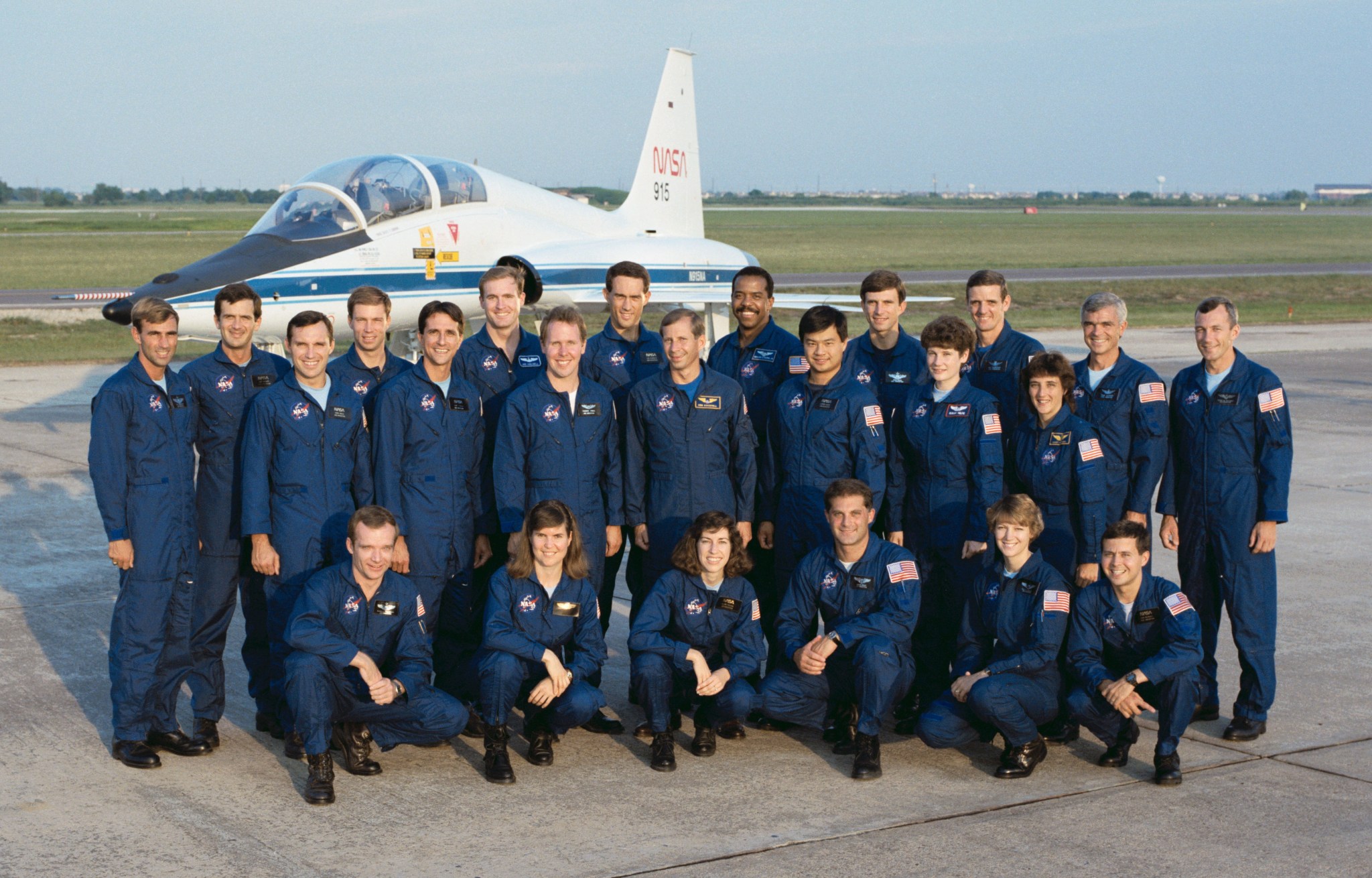
The newest class of NASA astronaut candidates included pilot candidates Kenneth Cockrell, Eileen Collins, William Gregory, James Halsell, Charles Precourt, Richard Searfoss, and Terrence Wilcutt and mission specialist candidates Daniel Bursch, Leroy Chiao, Rich Clifford, Bernard Harris, Susan Helms, Thomas Jones, William Mc Arthur, James Newman, Ellen Ochoa, Ronald Sega, Nancy Sherlock, Donald Thomas, Janice Voss, Carl Walz, Jeffrey Wisoff, and David Wolf. From the 1,945 qualified applicants, NASA invited 103 candidates for interviews and medical exams at NASA’s Johnson Space Center (JSC) in Houston between September and November 1989.

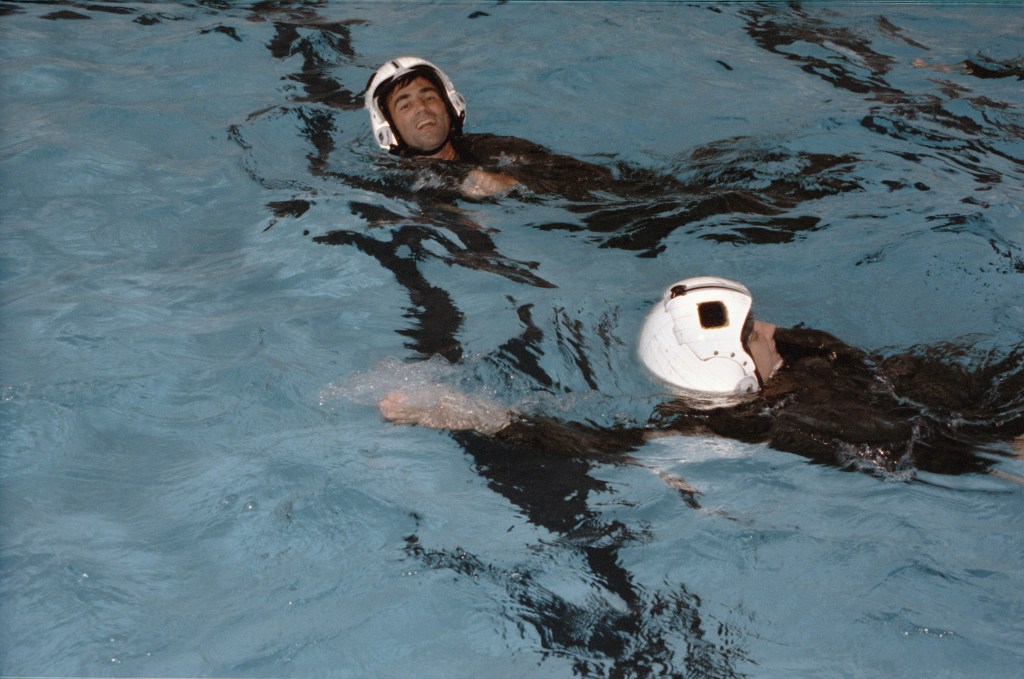

The 23 astronaut candidates reported to work at JSC on July 16, 1990, to begin their one-year training period. During the yearlong training, the candidates attended classes in applied sciences, space shuttle systems, space medicine, Earth and planetary sciences, and materials sciences. They visited each of the NASA centers to learn about their functions and received instruction in flying the T-38 Talon training aircraft, high-altitude and ground egress systems, survival skills, parasail flight, and scuba. They experienced short-duration weightlessness aboard NASA’s KC-135 aircraft dubbed the Vomit Comet. After completing the astronaut candidate training, they qualified for various technical assignments within the astronaut office leading to assignments to space shuttle crews.
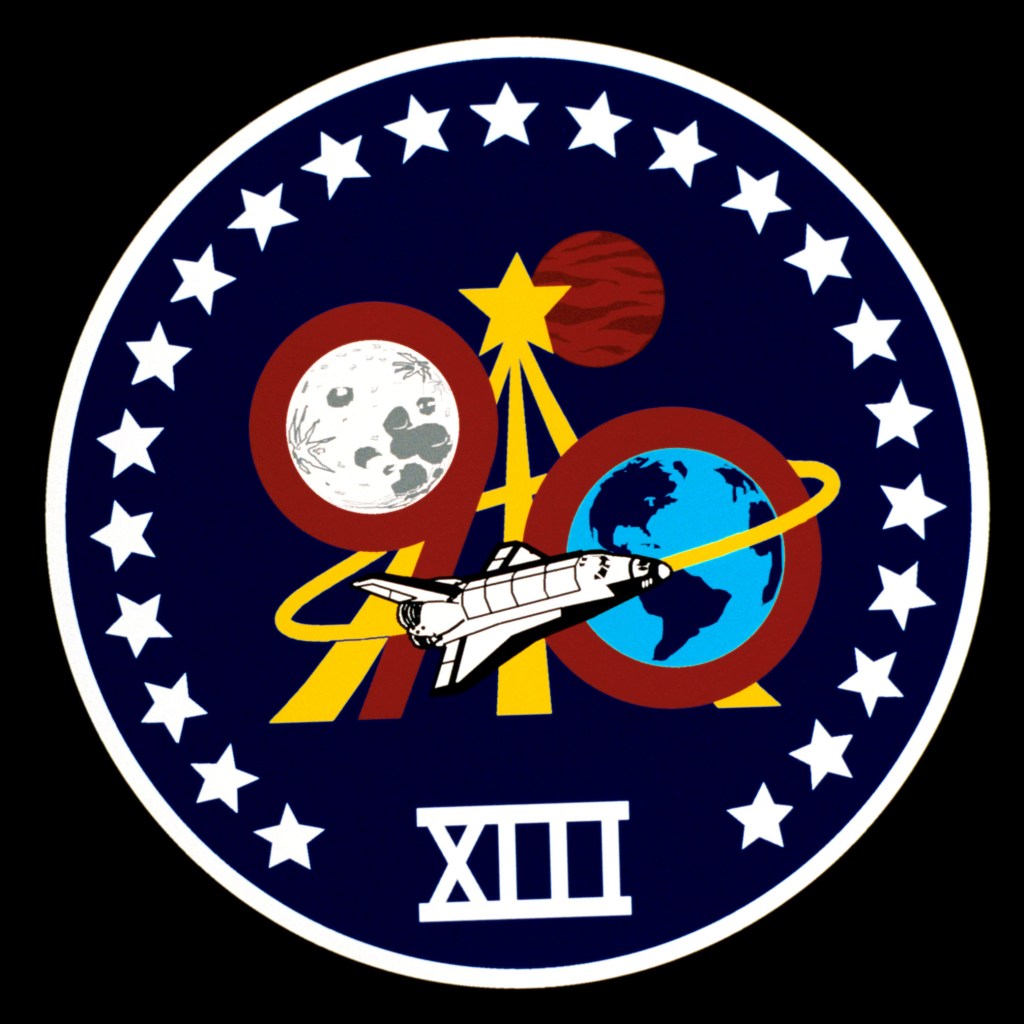
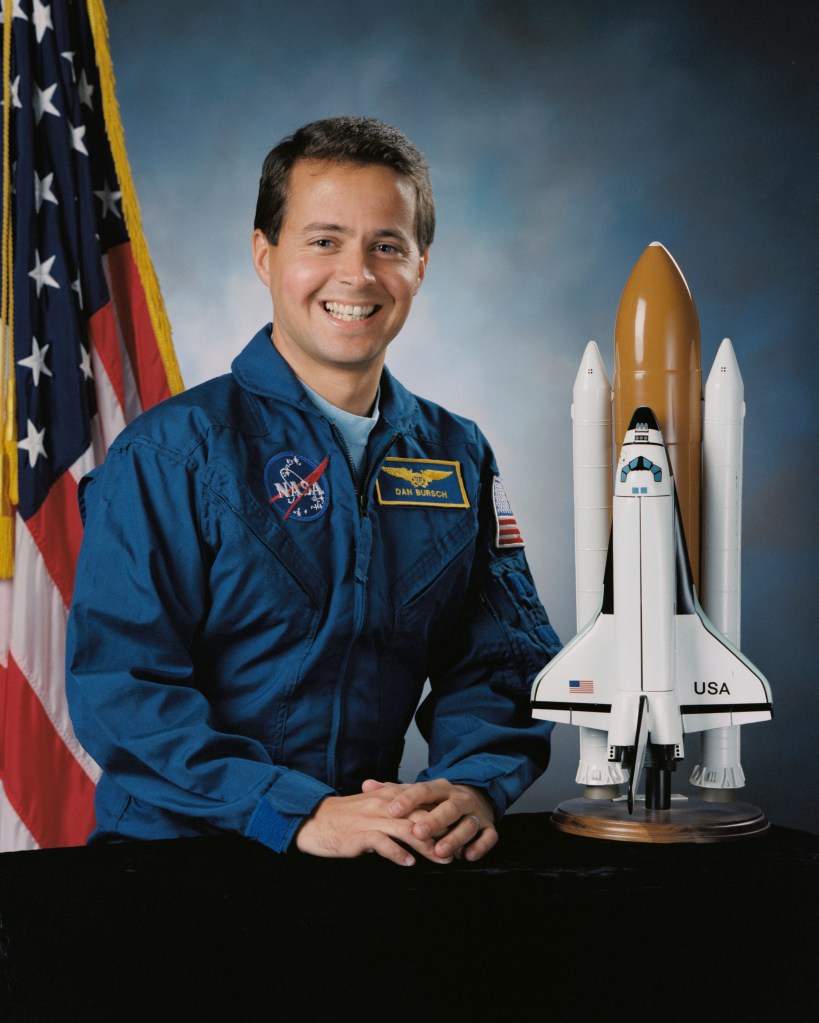

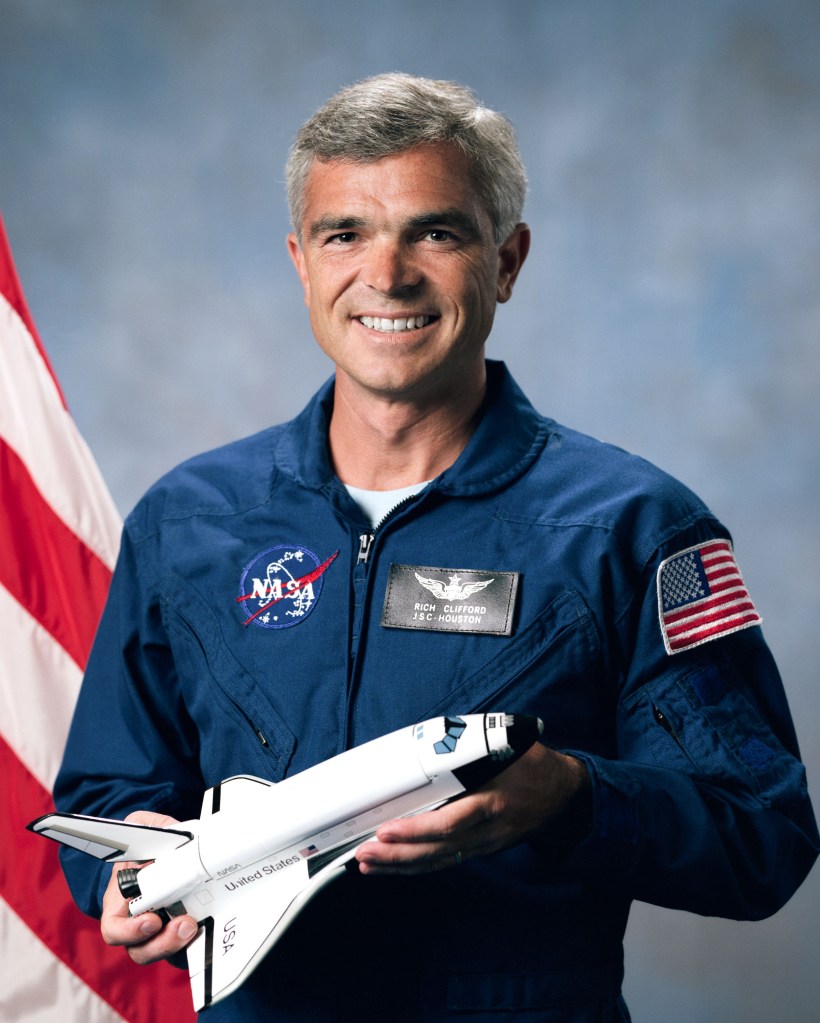
Per tradition, most astronaut classes have a nickname, often humorously given to them by the previous class of astronauts. In the case of the class of 1990, they chose their own nickname, The Hairballs. The origin stems from the class adopting a black cat as their mascot, in recognition of their class number 13. The nickname came about as hairballs are often associated with cats.
Daniel Bursch
Born in Pennsylvania, Bursch grew up in New York state and graduated from the U.S. Naval Academy. He served as a pilot in the U.S. Navy prior to his selection as an astronaut. He received his first flight assignment as a mission specialist on STS-51, flying with fellow Hairballs Newman and Walz on the 10-day flight aboard Discovery in 1993. On his second mission, the 10-day STS-68 flight aboard Endeavour in 1994, Bursch, accompanied by fellow classmates Jones, Wilcutt, and Wisoff, served as a mission specialist on the Space Radar Laboratory-2 (SRL-2) Earth observation mission. For his third trip into space, Bursch flew as a mission specialist aboard Endeavour for the 10-day STS-77 mission in 1996. For his fourth and final spaceflight, Bursch, along with fellow Hairball Walz, spent 196 days in space as an Expedition 4 flight engineer aboard the space station in 2001 and 2002, conducting two spacewalks totaling 11 hours 46 minutes. He launched on STS-108 and returned on STS-111. Across his four missions, Bursch accumulated 227 days in space.
Leroy Chiao
California native Chiao earned a doctorate in chemical engineering from the University of California, Santa Barbara, before NASA selected him as an astronaut. For his first flight, he flew as a mission specialist on STS-65, the International Microgravity Lab-2 (IML-2) mission aboard Columbia in 1994. Fellow Hairballs Halsell, Walz, and Thomas accompanied Chiao on the nearly 15-day flight, the longest shuttle mission up to that time. During his second spaceflight, the nine-day STS-72 flight of Endeavour in 1996, Chiao participated in two spacewalks totaling 13 hours 3 minutes to demonstrate future techniques. In 2000, Chiao, accompanied by fellow classmates McArthur and Wisoff, flew the 13-day STS-92 3A space station assembly mission aboard Discovery. He participated in two spacewalks with classmate McArthur totaling 13 hours 16 minutes. For his fourth and final mission, Chiao served as commander of Expedition 10 in 2004 and 2005, spending 193 days in space. During the mission, he conducted two spacewalks totaling 9 hours 58 minutes. During his four flights, Chiao logged 229 days in space and spent more than 36 hours outside on his six spacewalks.
Rich Clifford
Clifford, born in California, grew up in Ogden, Utah. He holds the distinction as one of the first three astronauts of his class assigned to a spaceflight, the seven-day STS-53 mission aboard Discovery in 1992 to deploy a large satellite for the Department of Defense. His second flight, the SRL-1 mission aboard Endeavour took place in 1994. Fellow Hairball Jones accompanied him on the STS-59 11-day Earth observation mission. For his third and final spaceflight, Clifford flew as a mission specialist on the STS-76 third Shuttle Mir docking mission. During the nine-day mission in 1996, accompanied by fellow classmate Sega, Clifford participated in a six-hour one-minute spacewalk. During his three spaceflights, he accumulated nearly 28 days in space.
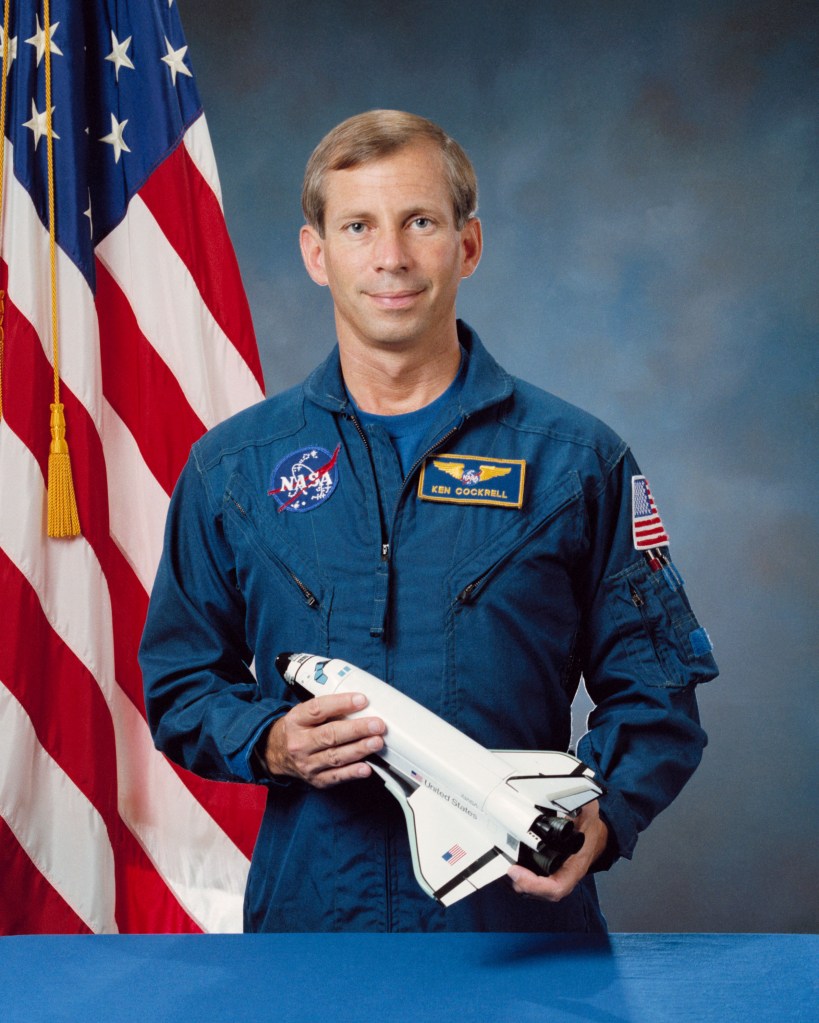


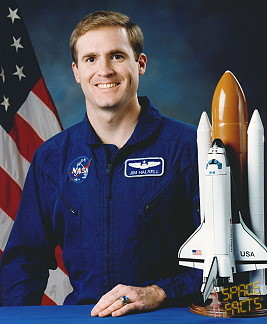
Kenneth Cockrell
Cockrell, a native Texan, served as naval aviator prior to his selection as an astronaut. On his first mission, STS-56, he served as a mission specialist for the nine-day ATLAS-2 Earth observation mission in 1993. Fellow classmate Ochoa accompanied him on the flight aboard Discovery. Cockrell served as pilot on his second mission, the 11-day STS-69 Endeavour flight in 1995 to deploy and retrieve the Wake Shield Facility. Classmate Voss accompanied him on this mission. Cockrell commanded his third spaceflight, STS-80 in 1996 aboard Columbia, accompanied by fellow Hairball Jones. At 17 days 15 hours 53 minutes days, it holds the distinction as the longest shuttle flight. He once again served as commander on his fourth mission, the STS-98 5A space station assembly flight in 2001. Accompanied by classmate Jones, the crew delivered the U.S. Laboratory Module Destiny during the 13-day mission. On his fifth and final spaceflight, Cockrell commanded the STS-111 space station UF-2 utilization mission in 2002. During the 14-day flight, the crew brought the Expedition 5 crew to the station and returned the Expedition 4 crew, including Hairballs Bursch and Walz. During his five missions, Cockrell accumulated 64.5 days in space. He served as Chief of the Astronaut Office from October 1997 to October 1998.
Eileen Collins
Hailing from New York state, Collins has the distinction as the first female selected by NASA as a shuttle pilot. She received her first flight assignment as pilot of STS-63, the eight-day Shuttle-Mir rendezvous mission in 1995. Fellow classmates Harris and Voss accompanied her aboard Discovery. Collins once again served as pilot on STS-84, the sixth Shuttle-Mir docking mission commanded by fellow Hairball Precourt. The nine-day flight aboard Atlantis took place in 1997. On her third flight, Collins served as the first female commander of a space mission, the five-day STS-93 flight of Columbia in 1999 to deploy the Chandra X-ray Observatory. She commanded her fourth and final mission, the STS-114 return to flight mission following the Columbia accident. The 14-day flight aboard Discovery took place in 2005. During her four missions, Collins logged 36 days in space.
William Gregory
New York native Gregory served as a U.S. Air Force pilot when NASA selected him as an astronaut. He flew his single mission as pilot of STS-67, the 17-day Astro-2 mission aboard Endeavour in 1995. The mission set a record for the longest shuttle flight up to that time.
James Halsell
Halsell, a native of Louisiana, served as a U.S. Air Force pilot when NASA selected him as an astronaut. On his first spaceflight, he served as pilot on STS-65, the IML-2 mission aboard Columbia in 1994. Fellow Hairballs Chiao, Walz, and Thomas accompanied Halsell on the nearly 15-day flight, the longest shuttle mission up to that time. Halsell once again served as pilot on his second flight, STS-74, the second Shuttle-Mir docking mission that delivered the Docking Module to Mir. Classmate McArthur joined Halsell on the eight-day Atlantis flight in 1995. He commanded his third spaceflight, STS-83 aboard Columbia, the Microgravity Sciences Lab in 1997. Because managers cut the flight short after four days due to a fuel cell failure, NASA decided to refly the mission, with the same crew, later in the year as STS-94, and it stayed in space for nearly 16 days. Classmates Voss and Thomas accompanied Halsell on both missions. Halsell also commanded his fifth and final spaceflight, the STS-101 2A.2a space station logistics mission in 2000. Classmate Helms accompanied Halsell on the 10-day mission aboard Atlantis. During his five missions, Halsell accumulated more than 52 days of spaceflight time.
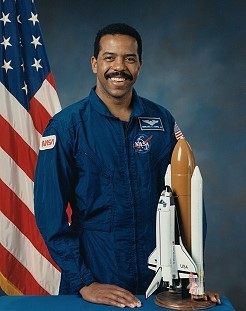
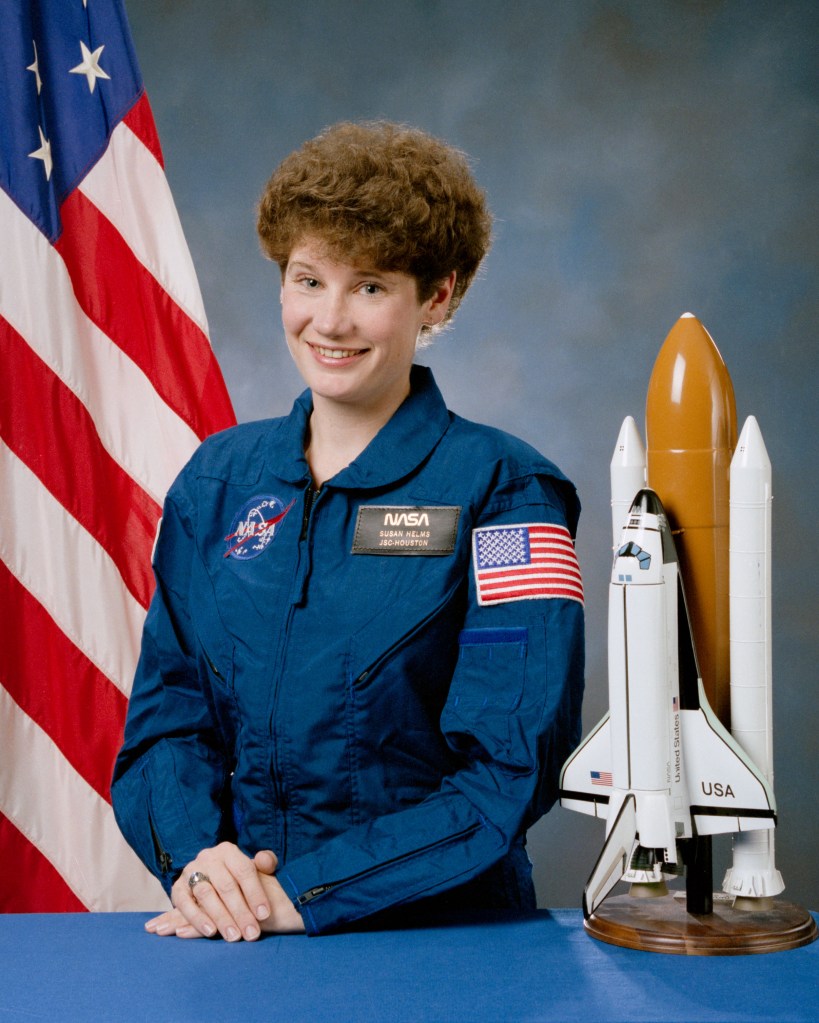
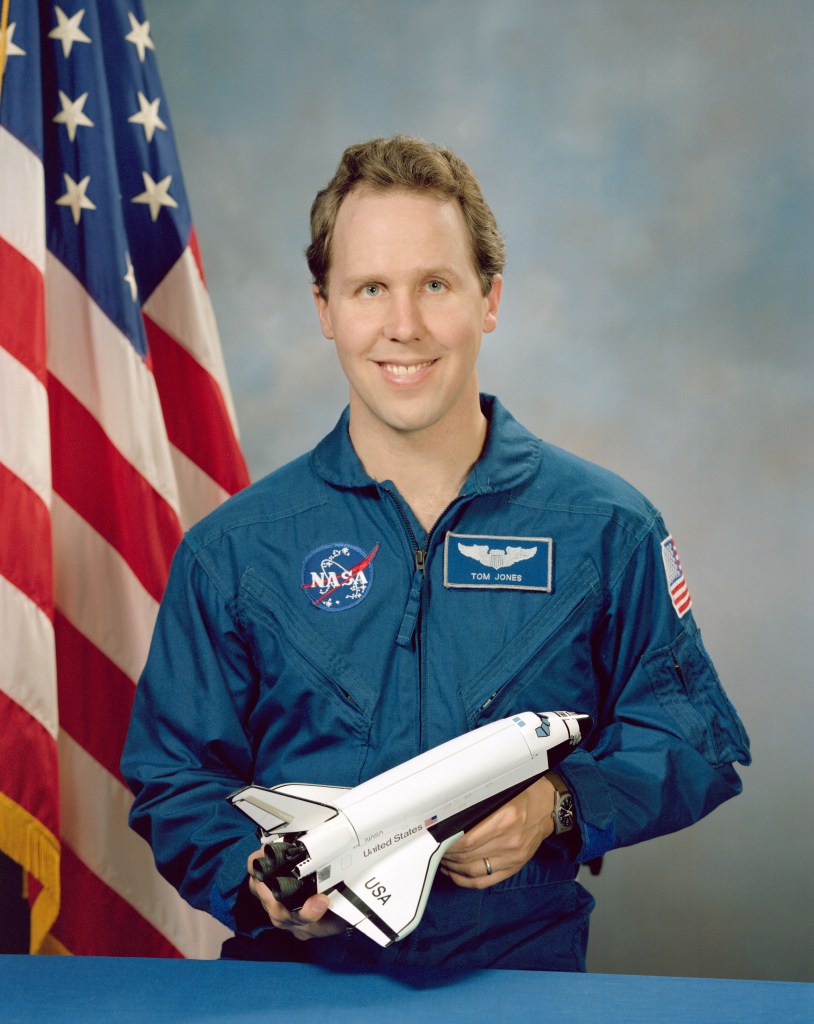
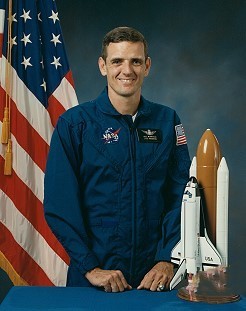
Bernard Harris
Texas native Harris served as a NASA flight surgeon when the agency selected him as an astronaut. He holds the distinction as one of the first three astronauts of his class assigned to a spaceflight. He served as a mission specialist on the STS-55 joint U.S.-German Spacelab D2 mission in 1993. Fellow Hairball Precourt accompanied him on the 10-day flight aboard Columbia. Harris flew as payload commander on his second and final spaceflight, the STS-63 Mir rendezvous mission in 1995, accompanied by classmates Collins and Voss. During the flight, Harris conducted a 4-hour 49-minute spacewalk, earning the distinction as the first African American to do so. Across his two missions, Harris logged 18 days in space.
Susan Helms
Helms, a native of Portland, Oregon, graduated from the U.S. Air Force Academy in the first class that included women. Shortly after her selection as an astronaut, NASA assigned her to her first spaceflight, and she holds the distinction as one of the first three astronauts of her class assigned to a mission. She flew as a mission specialist on STS-54, a six-day flight aboard Endeavour in 1993 that deployed the sixth Tracking and Data Relay Satellite. On her second mission, Helms flew aboard STS-64, an 11-day flight aboard Discovery in 1994. She served as the payload commander on STS-78, the Life and Microgravity Sciences Spacelab mission aboard Columbia in 1996. The flight set a then-record of 16 days 22 hours for the longest space shuttle mission. On her fourth mission, she served as a mission specialist on STS-101, the 2A.2a space station logistics mission in 2000 commanded by classmate Halsell. The Atlantis mission lasted 10 days. For her fifth and final spaceflight, she served as a flight engineer during Expedition 2, the first woman to fly a long-duration mission on the International Space Station. She conducted one spacewalk lasting 8 hours 56 minutes, a record not broken until 2024. During her five spaceflights she logged 211 days in space.
Thomas Jones
Jones, a native of Baltimore, graduated from the U.S. Air Force Academy and served as a B-52 pilot when NASA selected him as an astronaut. For his first spaceflight, he served as a mission specialist on STS-59, the 11-day SRL-1 Earth observation mission on Endeavour in 1994, along with classmate Clifford. Later that same year, with just 163 days between the two missions – the second shortest turnaround time in history – Jones served as payload commander on STS-68, the 11-day SRL-2 mission also on Endeavour. Fellow Hairballs Wilcutt, Wisoff, and Bursch accompanied him on the mission. In 1996, Jones flew as a mission specialist on STS-80, commanded by classmate Cockrell. During the nearly 18-day flight – the longest shuttle flight in history – Jones had planned to participate in two spacewalks, but a stuck bolt prevented the opening of Columbia’s airlock hatch, forcing the cancelation of the excursions. Jones flew his fourth and final mission in 2001, the STS-98 5A space station assembly flight, commanded by classmate Cockrell. During the 13-day mission of Atlantis, the crew installed the U.S. Laboratory Module Destiny and Jones participated in three spacewalks totaling nearly 20 hours. During his four spaceflights, Jones logged 53 days in space.
William McArthur
Hailing from North Carolina, West Point graduate McArthur worked as a space shuttle vehicle integration test engineer at JSC when NASA selected him as an astronaut. He received his first spaceflight assignment as a mission specialist on the STS-58 Spacelab Life Sciences-2 (SLS-2) mission in 1993. Classmates Searfoss and Wolf accompanied him on the 14-day Columbia mission, at the time the longest space shuttle flight. In 1995, he flew as a mission specialist on STS-74, the second Shuttle Mir docking mission that brought the Docking Module to Mir. Classmate Halsell served as pilot on the eight-day flight of Atlantis. McArthur next flew on STS-92, the 3A space station assembly mission in 2000, accompanied by classmates Chiao and Wisoff. McArthur completed two spacewalks with Chiao totaling 13 hours 16 minutes during the 13-day Atlantis mission. For his fourth and final spaceflight, McArthur served as commander of the 190-day Expedition 12 in 2005-2006, conducting two spacewalks totaling 11 hours 5 minutes. During his four missions, McArthur logged 225 days in space and spent more than 24 hours on four spacewalks. He served as the director of the JSC Safety and Mission Assurance Directorate from 2011 to 2017.
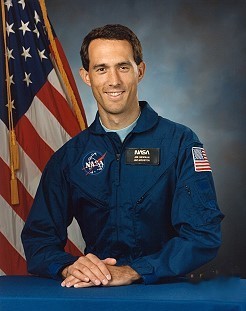
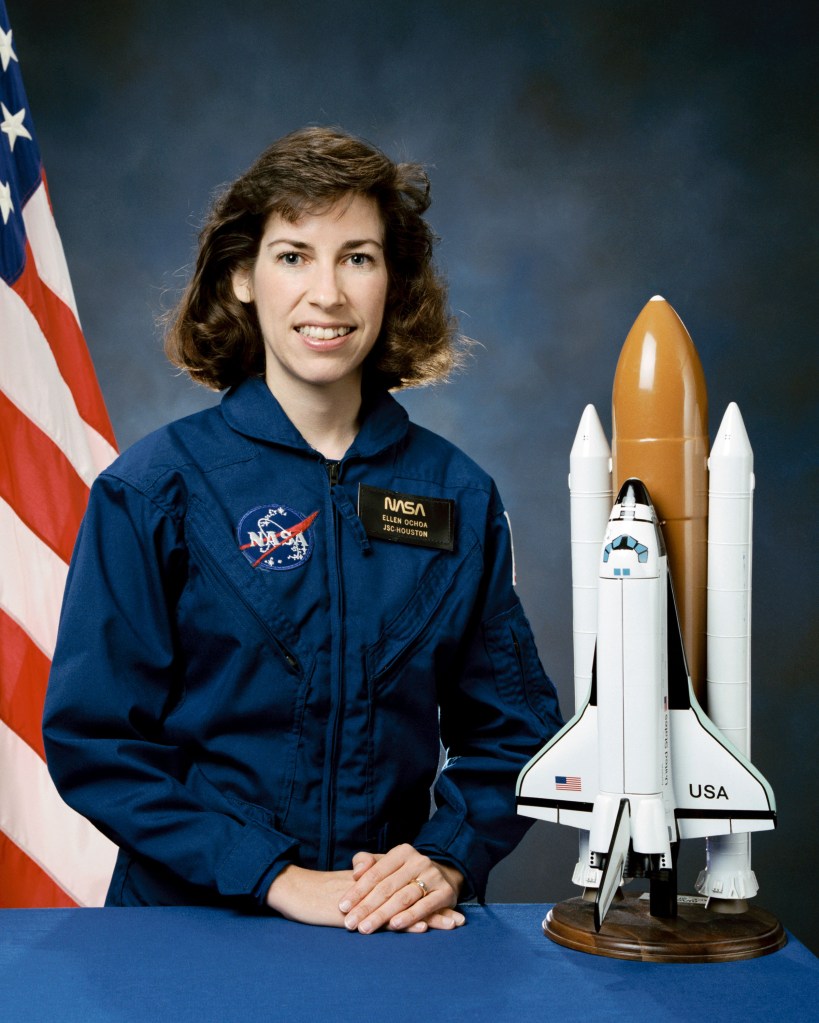


James Newman
Born in Micronesia, Newman grew up in San Diego and earned a doctorate in physics from Rice University. He worked at JSC as a crew and flight controller trainer when NASA selected him as an astronaut. For his first spaceflight assignment, Newman flew as a mission specialist on STS-51 in 1993 with fellow Hairballs Bursch and Walz. During the 10-day mission aboard Discovery, Newman conducted a 7-hour 5-minute spacewalk with Walz to demonstrate future spacewalking techniques. His second flight took place in 1995, the 11-day STS-69 mission of Endeavour, with classmate Halsell serving as pilot. On his third mission, Newman flew as a mission specialist on STS-88, the first space station assembly flight in 1998. Classmate Sherlock, now using her married name Currie, accompanied him on the 12-day Atlantis mission. Newman participated in three spacewalks totaling 21 hours 22 minutes. For his fourth and final spaceflight in 2002, Newman flew on STS-109, the fourth servicing mission to the Hubble Space Telescope, accompanied once again by classmate Currie. During the 11-day Columbia mission, Newman conducted two spacewalks totaling 14 hours 46 minutes. During his career four spaceflights, Newman logged more than 43 days in space and spent nearly 50 hours on six spacewalks.
Ellen Ochoa
Born in Los Angeles, Ochoa received her doctorate in electrical engineering from Stanford University and worked at NASA’s Ames Research Center in California’s Silicon Valley when NASA selected her as an astronaut. Her first flight assignment came in 1993 when she flew as a mission specialist on STS-56, the nine-day ATLAS-2 Earth observation mission. Classmate Cockrell accompanied her on the Discovery mission. On her second spaceflight, she served as payload commander on the STS-66 ATLAS-3 mission, an 11-day flight of Atlantis in 1994. For her third flight, she flew on Discovery’s STS-96, the 10-day 2A.1 space station assembly and logistics mission in 1999. In 2002, on her fourth and final mission, STS-110, she served as a mission specialist on the 8A space station assembly flight that brought the S0 truss to the facility. The flight on Atlantis lasted nearly 11 days. Over her four missions, Ochoa accumulated nearly 41 days in space. Following her spaceflights, Ochoa served in management positions with increasing scope and responsibilities, as director of the Flight Crew Operations Directorate, JSC deputy director, and JSC director.
Charles Precourt
Massachusetts native Precourt graduated from the U.S. Air Force Academy and served as a U.S. Air Force pilot when NASA selected him as an astronaut. On his first spaceflight in 1993, he served as a mission specialist on STS-55, the joint U.S.-German Spacelab D2 mission. Fellow Hairball Harris accompanied him on the 10-day Columbia mission. On his next spaceflight, Precourt served as pilot on STS-71, the first Shuttle-Mir docking mission in 1995. The 10-day Atlantis mission included the first shuttle-based crew rotation. Precourt commanded his third spaceflight, STS-84 in 1987, the sixth Shuttle-Mir docking mission. Classmate Collins served as pilot on the nine-day Atlantis mission. He commanded his fourth and final space mission, STS-91, the ninth and final Shuttle-Mir docking flight, earning him the honor as the only American astronaut to visit Mir three times. The 10-day mission aboard Discovery took place in 1998. Across his four spaceflights, Precourt logged nearly 39 days in space. He served as chief of the Astronaut Office from October 1998 to November 2002.
Richard Searfoss
Born in Michigan, Searfoss graduated from the U.S. Air Force Academy and served as an instructor at the U.S. Air Force Test Pilot School when NASA selected him as an astronaut. On his first spaceflight, Searfoss served as pilot on STS-58, the SLS-2 mission in 1993. Classmates McArthur and Wolf joined him on the flight aboard Columbia, at 14 days then the longest space shuttle mission. In 1996, he once again served as pilot on STS-76, the third Shuttle-Mir docking mission. Classmates Clifford and Sega joined him on the nine-day flight aboard Atlantis. Searfoss commanded his third and final spaceflight, the 16-day STS-90 Neurolab mission aboard Columbia in 1998. Across his three missions, Searfoss logged 39 days in space.
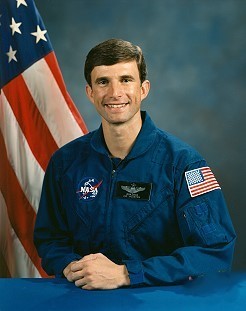
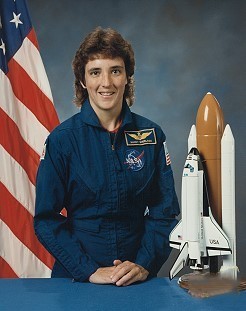

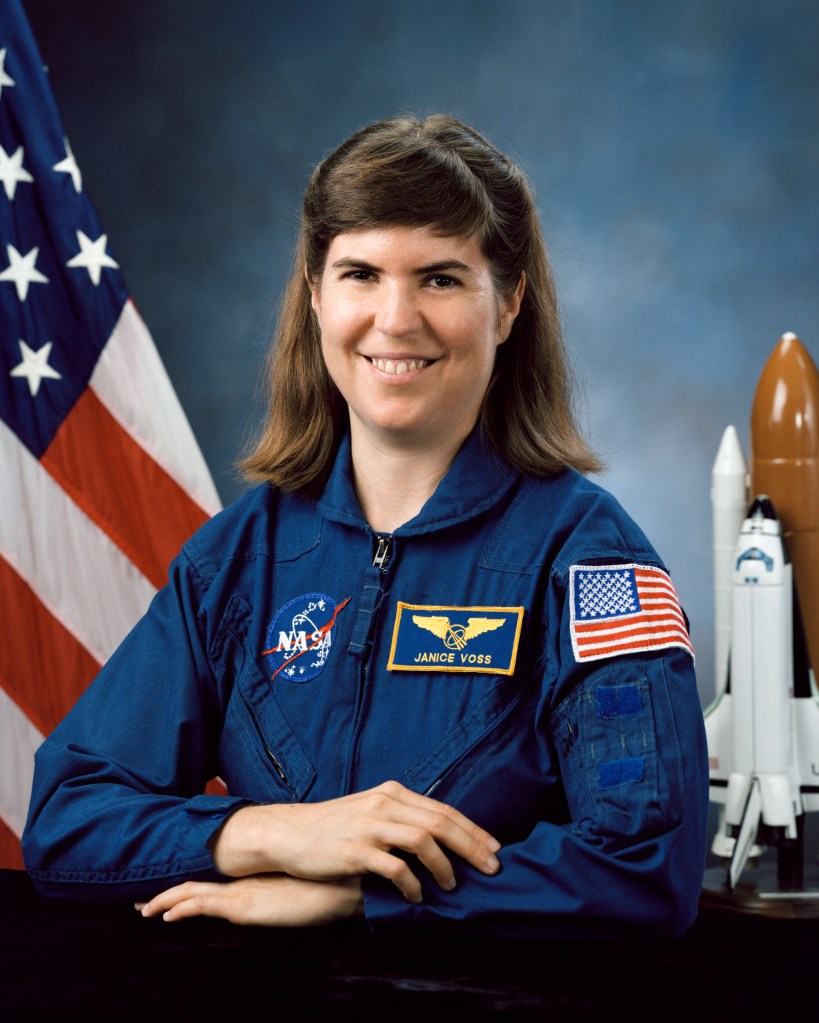
Ronald Sega
Ohio native Sega graduated from the U.S. Air Force Academy and worked as a research associate professor of physics at the University of Houston when NASA selected him as an astronaut. On his first spaceflight, he served as a mission specialist aboard STS-60, the first Shuttle-Mir mission. The eight-day mission aboard Discovery took place in 1994. For his second and final spaceflight in 1996, Sega served as a mission specialist on STS-76, the third Shuttle-Mir docking mission. Fellow Hairballs Searfoss and Clifford also flew on the nine-day Atlantis mission. Across his two spaceflights, Sega logged 17.5 days in space.
Nancy Sherlock Currie
Born in Delaware, Sherlock grew up in Ohio and worked as a flight simulation engineer at JSC when NASA selected her as an astronaut. On her debut spaceflight, Sherlock flew as a mission specialist on STS-57, the first flight of the Spacehab module in 1993. Fellow classmates Voss and Wisoff joined her on the 10-day mission aboard Endeavour. On her subsequent missions, she flew under her married name of Currie. Her second trip into space took place in 1995, the nine-day STS-70 mission aboard Discovery. Classmate Thomas joined her on this mission to deploy the seventh TDRS satellite. On her third mission, Currie flew as a mission specialist on STS-88, the first space station assembly mission in 1998. Classmate Newman accompanied her on the 12-day Atlantis mission. For her fourth and final spaceflight in 2002, Currie flew on STS-109, the fourth Hubble Space Telescope servicing mission. Classmate Newman once again accompanied her on the 11-day Columbia mission. Across her four spaceflights, Currie logged nearly 42 days in space.
Donald Thomas
Ohio native Thomas earned a doctorate in materials science from Cornell University and worked as a materials science engineer at JSC when NASA selected him as an astronaut. For his first flight, he flew as a mission specialist on STS-65, the IML-2 mission aboard Columbia in 1994. Fellow Hairballs Halsell, Chiao, and Walz accompanied Thomas on the nearly 15-day flight, the longest shuttle mission up to that time. His second trip into space took place in 1995, the nine-day STS-70 mission aboard Discovery. Classmate Currie joined him on this mission to deploy the seventh TDRS satellite. Thomas flew his third spaceflight on STS-83 aboard Columbia, the MSL mission in 1997. Because managers cut the flight short after four days due to a fuel cell failure, NASA decided to fly the mission again, with the same crew, later in the year as STS-94, for the full 16-day mission duration. Classmates Halsell and Voss accompanied Thomas on both missions. Across his four missions, Thomas logged 43 days in space.
Janice Voss
Ohio native Voss earned a doctorate in aeronautics and astronautics from the Massachusetts Institute of Technology and worked as an integration manager at Orbital Science Corporation in Houston when NASA selected her as an astronaut. On her first spaceflight, Voss flew as a mission specialist on STS-57, the first flight of the Spacehab module in 1993. Fellow classmates Sherlock and Wisoff joined her on the 10-day mission aboard Endeavour. Voss flew as a mission specialist on her second spaceflight, the STS-63 Mir rendezvous mission in 1995, accompanied by classmates Collins and Harris. Voss flew as payload commander on her third spaceflight on STS-83 aboard Columbia, the MSL mission in 1997. Because managers cut the flight short after four days due to a fuel cell failure, NASA decided to refly the mission, with the same crew, later in the year as STS-94, for the full 16-day mission duration. Classmates Halsell and Thomas accompanied Voss on both missions. On her fifth and final spaceflight, Voss once again served as payload commander on STS-99, the Shuttle Radar Topography Mission. The 11-day mission aboard Endeavour took place in 2000. Over her five missions, Voss accumulated 49 days of spaceflight time.
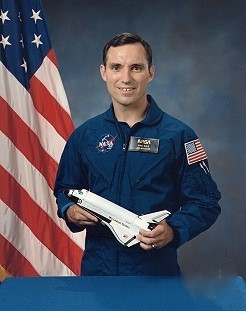

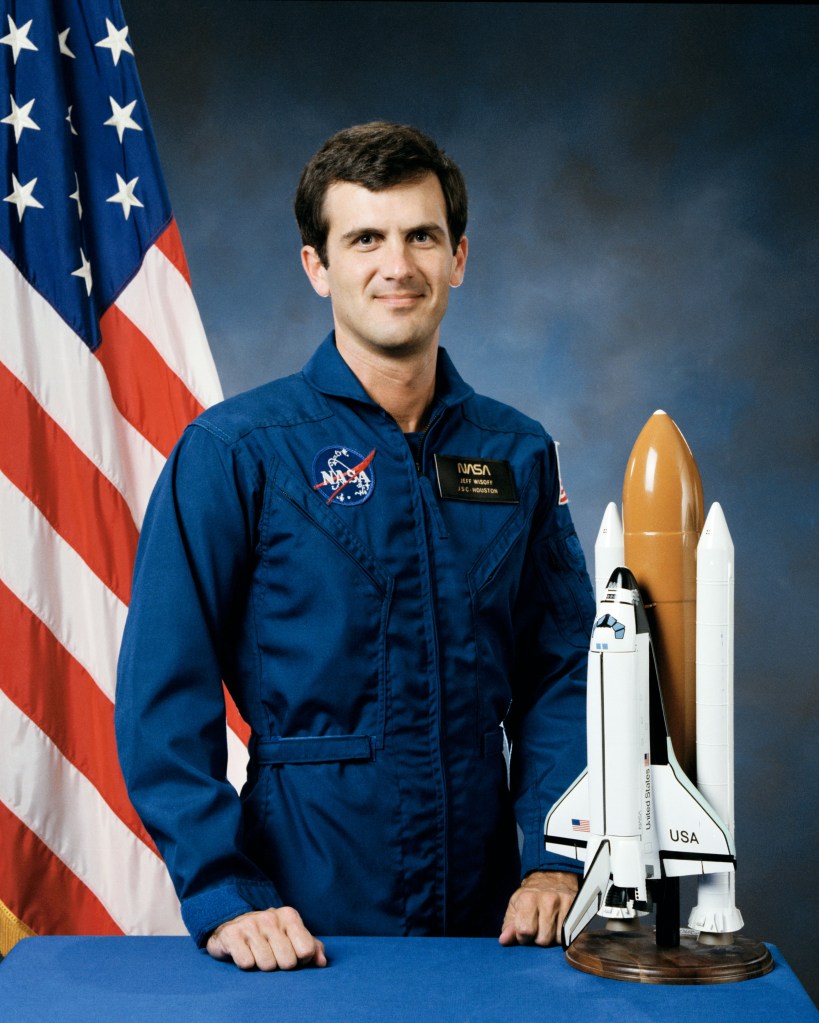
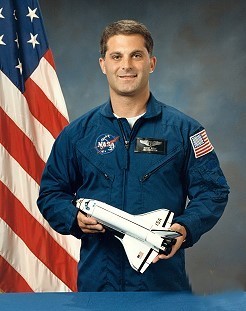
Carl Walz
A native of Ohio, Walz worked as a flight test manager at the U.S. Air Force Flight Test Center in Nevada when NASA selected him as an astronaut. He received his first flight assignment as a mission specialist on STS-51, flying with fellow Hairballs Bursch and Newman on the 10-day flight aboard Discovery in 1993. Walz conducted a 7-hour 5-minute spacewalk with Newman to demonstrate future spacewalking techniques. For his second flight, he flew as a mission specialist on STS-65, the IML-2 mission aboard Columbia in 1994. Fellow Hairballs Halsell, Chiao, and Thomas accompanied Walz on the nearly 15-day flight, the longest shuttle mission up to that time. On his third trip into space, he served as a mission specialist on STS-79, the fourth Shuttle-Mir docking mission in 1996. Classmate Wilcutt served as pilot on the 10-day Atlantis mission. For his fourth and final spaceflight, Walz, along with fellow Hairball Bursch, spent 196 days in space as an Expedition 4 flight engineer aboard the space station in 2001 and 2002, conducting two spacewalks totaling 11 hours 50 minutes. He launched on STS-108 and returned on STS-111. Across his four missions, Walz logged more than 230 days in space and spent nearly 19 hours on three spacewalks.
Terrance Wilcutt
A native of Kentucky, Wilcutt served in the U.S. Marine Corps and worked as a test pilot at Naval Air Station Patuxent River when NASA selected him as an astronaut. Wilcutt served as pilot on his first spaceflight, STS-68, the 10-day SRL-2 Earth observation mission aboard Endeavour in 1994. Classmates Bursch, Jones, and Wisoff accompanied Wilcutt on the flight. He served as pilot on his second spaceflight, the STS-79 fourth Shuttle-Mir docking mission in 1996. Fellow Hairball Walz accompanied him on the 10-day Atlantis mission. Wilcutt commanded his third mission, STS-89, the eighth Shuttle-Mir docking mission. The nine-day flight aboard Endeavour took place in 1998. He commanded his fourth and final spaceflight in 2000, the STS-106 2A.2b space station assembly and logistics mission. The 12-day mission flew on Atlantis. Across his four missions, Wilcutt logged 42 days in space. He served as the NASA chief of Safety and Mission Assurance from 2011 to 2020.
Jeff Wisoff
Virginia native Wisoff earned a doctorate in applied physics from Stanford University and worked as an assistant professor at Rice University when NASA selected him as an astronaut. On his first spaceflight, Wisoff flew as a mission specialist on STS-57, the first flight of the Spacehab module in 1993. Fellow classmates Sherlock and Voss joined him on the 10-day mission aboard Endeavour. He participated in a 5-hour 50-minute spacewalk to demonstrate future spacewalking techniques. Wisoff served as a mission specialist on his second spaceflight, STS-68, the 10-day SRL-2 Earth observation mission aboard Endeavour in 1994. Classmates Bursch, Jones, and Wilcutt accompanied him on the flight. He served as a mission specialist on his third flight, STS-81, the fifth Shuttle-Mir docking mission in 1997. The 10-day flight took place aboard Atlantis. He flew his fourth and final mission on STS-92, the 3A space station assembly mission in 2000 that brought the Z1 truss to the facility. Wisoff participated in two spacewalks totaling 14 hours 3 minutes during the 13-day Discovery mission. Across his four spaceflights, Wisoff logged 44 days in space and spent nearly 20 hours on three spacewalks.
David Wolf
A native of Indiana, Wolf earned a medical degree from Indiana University and worked as an aerospace medical officer at JSC when NASA selected him as an astronaut. He received his first spaceflight assignment as a mission specialist on the STS-58 SLS-2 mission in 1993. Classmates Searfoss and McArthur accompanied him on the 14-day Columbia mission, at the time the longest space shuttle flight. For his second trip into space, he completed the 128-day NASA-6 long-duration mission as part of the Shuttle-Mir program in 1997 and 1998, launching aboard STS-86 and returning aboard STS-89. He participated in a 3-hour 52-minute spacewalk. He flew his third spaceflight as a mission specialist on the STS-112 9A space station assembly mission in 2002 that delivered the S1 truss to the orbiting lab. During the 11-day Atlantis mission, Wolf participated in three spacewalks totaling 19 hours 41 minutes. He completed his fourth mission on STS-127 in 2009, earning him the distinction as the last Hairball to make a spaceflight. During the 16-day Endeavour mission that delivered the Japanese module’s exposed pallet to the space station, Wolf participated in three spacewalks totaling 18 hours 24 minutes. Across his four spaceflights, Wolf logged more than 168 days in space and spent 42 hours on seven spacewalks.
Summary
The NASA Group 13 astronauts made significant contributions to spaceflight. As a group, they completed 85 flights spending 1,960 days, or more than five years, in space, including one long-duration flight aboard Mir and five aboard the International Space Station. One Hairball made a single trip into space, three made two trips, one made three, 15 made four, and three went five times. Twenty-one members of the group contributed their talents on Spacelab or other research missions and three performed work with the great observatories Hubble and Chandra. Thirteen participated in the Shuttle Mir program, with 11 visiting the orbiting facility, one of them twice, another three times, and one completing a long-duration mission. Fifteen visited the International Space Station, five twice, participating in its assembly, research, maintenance, and logistics, with five completing long-duration missions aboard the facility. Eleven of the 23 performed 37 spacewalks spending 242 hours, or more than 10 days, outside their spacecraft.
Related Terms
50 Years Ago: Preparing the Final Saturn Rocket for Flight
With the historic first international space docking mission only six months away, preparations on the ground for the Apollo-Soyuz Test Project (ASTP) intensified. At NASA’s Kennedy Space Center (KSC) in Florida, workers in the Vehicle Assembly Building (VAB) stacked the rocket for the mission, the final Saturn rocket assembled for flight. In the nearby Manned Spacecraft Operations Building (MSOB), the Apollo prime crew of Commander Thomas Stafford, Command Module Pilot Vance Brand, and Docking Module Pilot Donald “Deke” Slayton, and their backups Alan Bean, Ronald Evans, and Jack Lousma conducted vacuum chamber tests of the Command Module (CM), the final Apollo spacecraft prepared for flight.
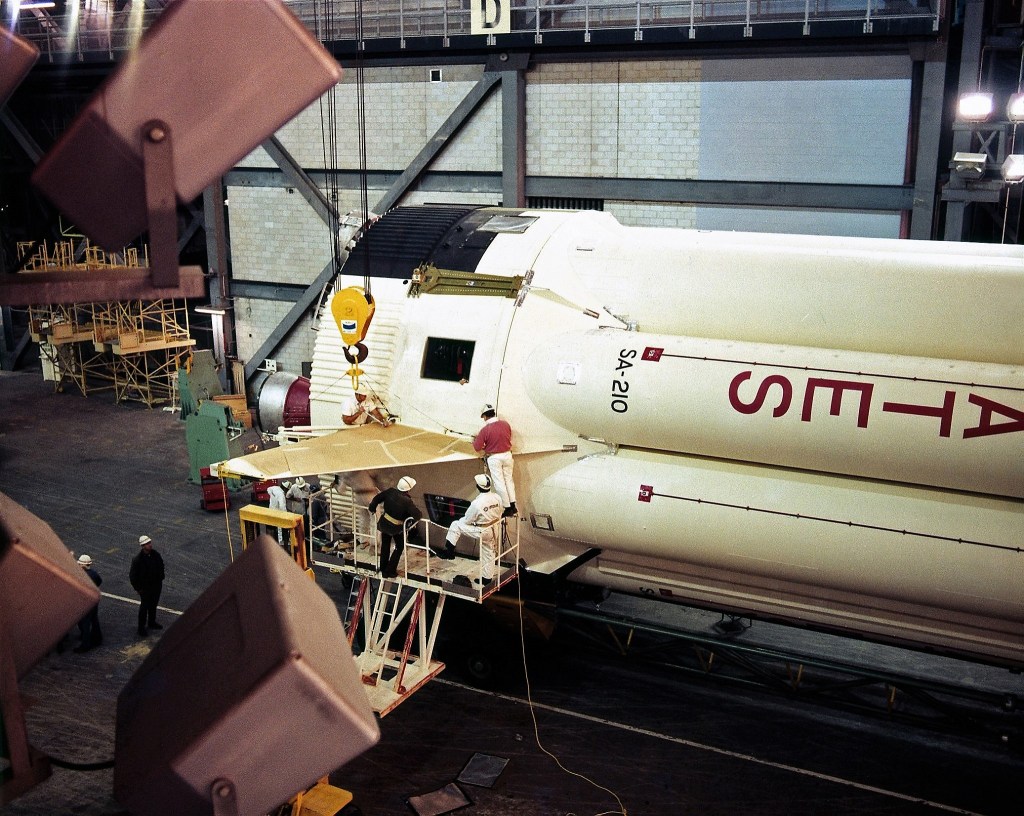
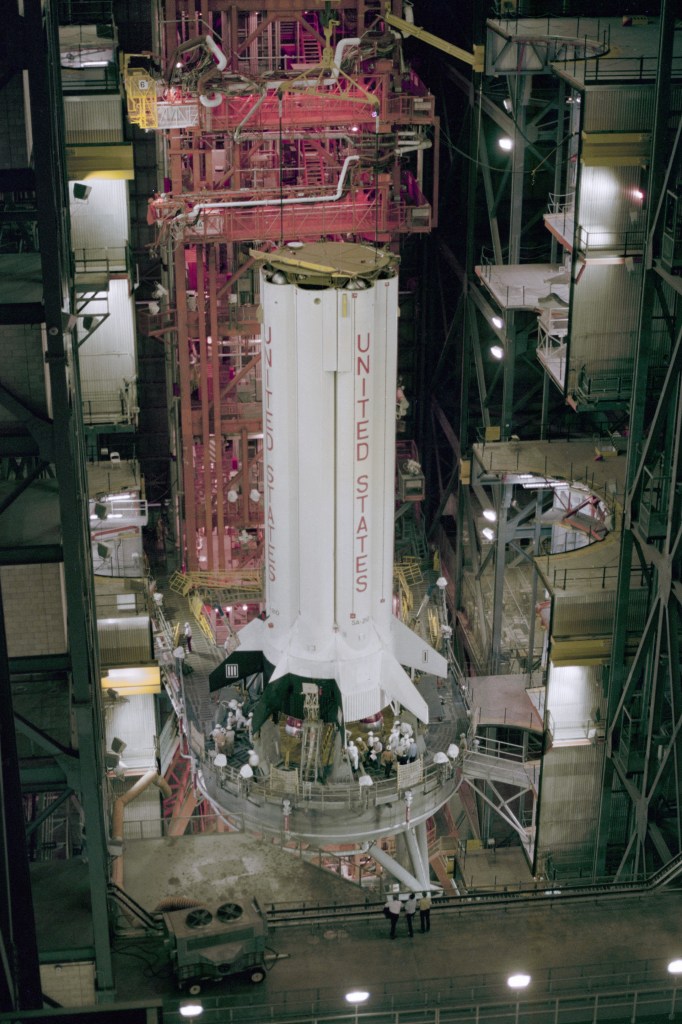
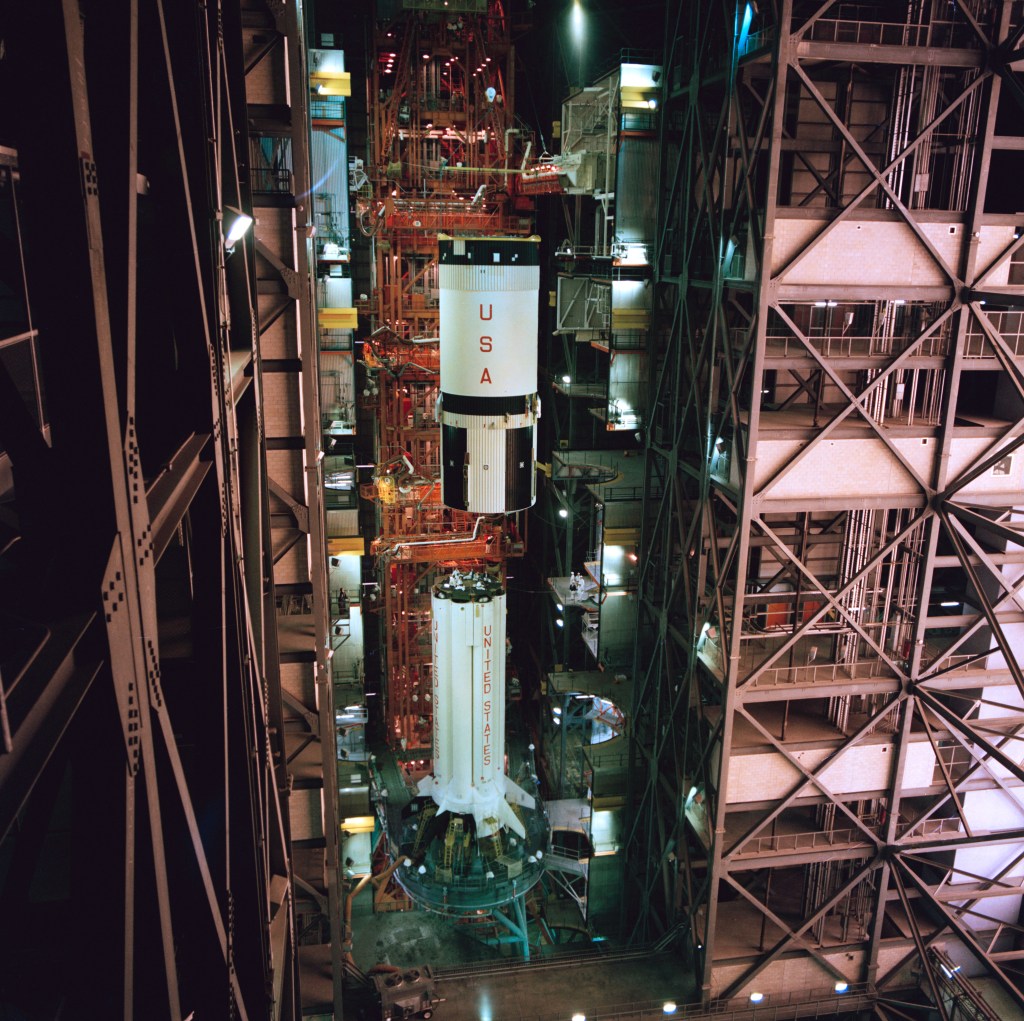
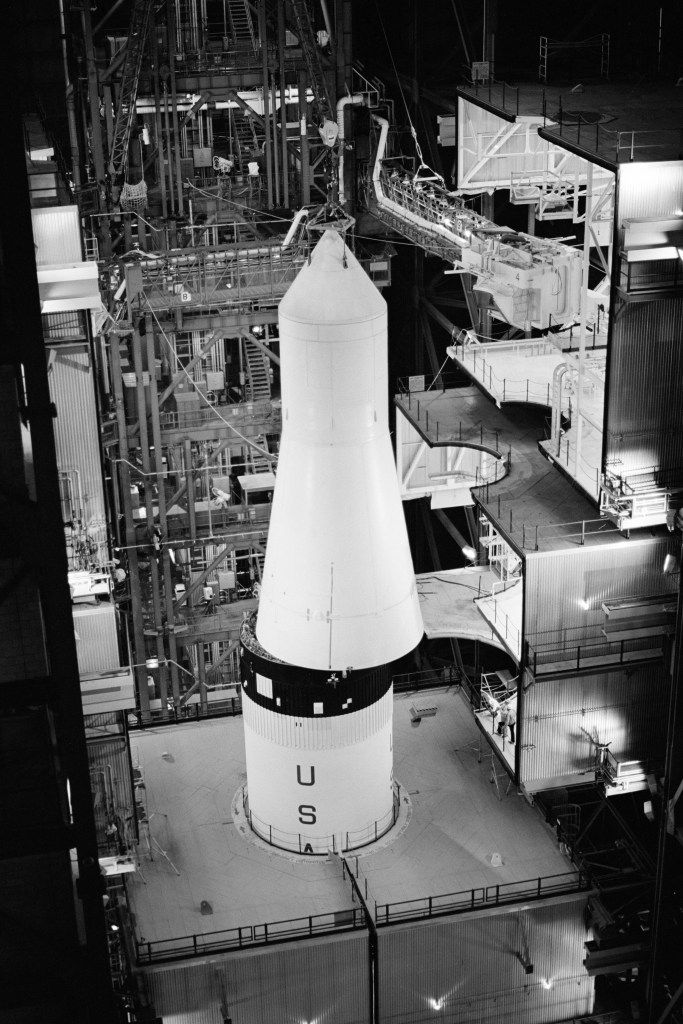
The Saturn IB rocket, serial number SA-210, used for ASTP had a lengthy history. Contractors originally built its two stages in 1967, at a time when NASA planned many more Saturn IB flights to test Apollo spacecraft components in Earth orbit in preparation for the Moon landing. By 1968, however, after four uncrewed Saturn IB launches, only one launched a crew, Apollo 7. Four more Saturn IBs remained on reserve to launch crews as part of the Apollo Applications Program, renamed Skylab in 1970. Without an immediate mission, the two stages of SA-210 entered long-term storage in 1967. Workers later modified and refurbished the stages for ASTP before shipping them to KSC. The first stage arrived in April 1974 and the second stage in November 1972.
On Jan. 13, 1975, inside the cavernous VAB, workers stacked the Saturn IB rocket’s first stage onto Mobile Launcher-1 (ML-1), modified from its use to launch Saturn V rockets during the Apollo program with the addition of the milk stool pedestal. The milk stool, a 128-foot tall platform, allowed the Saturn IB to use the same Launch Umbilical Tower as the much larger Saturn V rocket at Launch Complex 39. The next day, workers lowered the second stage onto the first, followed by the Instrument Unit two days later. Finally, on Jan. 17 workers topped off the rocket with a boilerplate Apollo spacecraft while engineers continued testing the flight article in the MSOB.
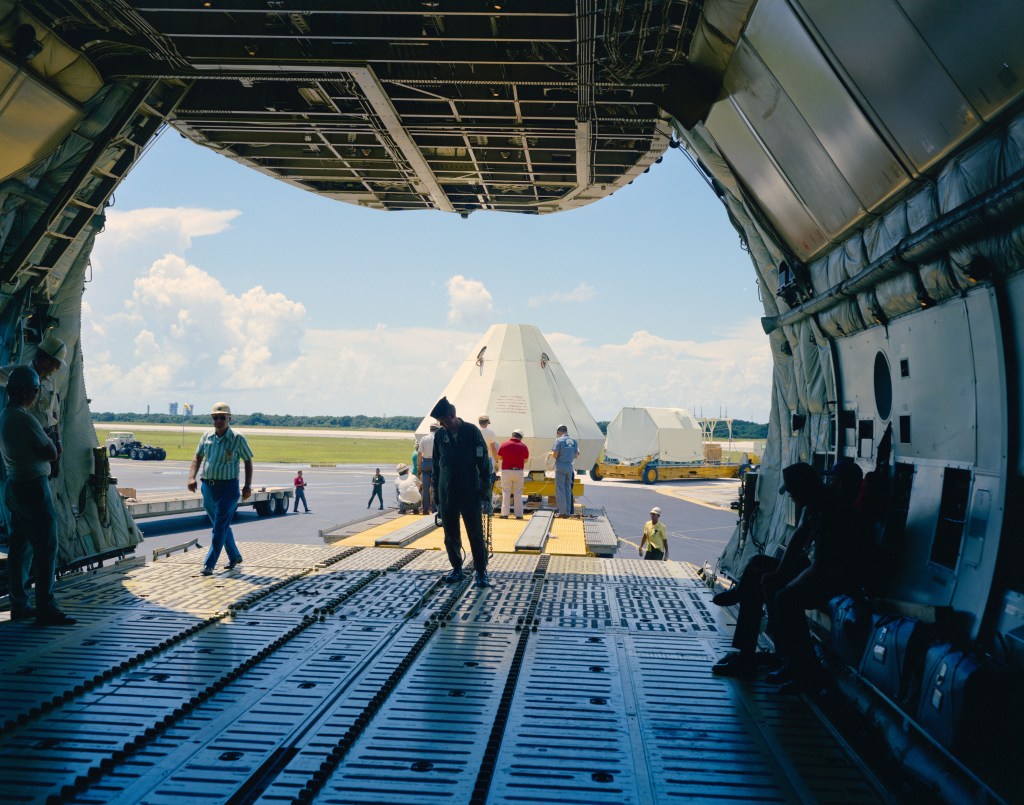

The Command and Service Modules – CSM-111 – arrived at KSC from the Rockwell International plant in Downey, California, on Sept. 8, 1974, by C-5A Galaxy cargo plane. Rockwell had finished building the spacecraft in March 1970 and placed it in storage until July 1972. Modifications for ASTP took place between August 1972 and August 1974, following which Rockwell shipped the spacecraft to KSC. The sign on the shipping container bore the legend “From A to Soyuz – Apollo/Soyuz – Last and the Best.” Workers at KSC towed the modules to the MSOB for inspection and checkout, joined the two modules, and placed the combined spacecraft into a vacuum chamber.
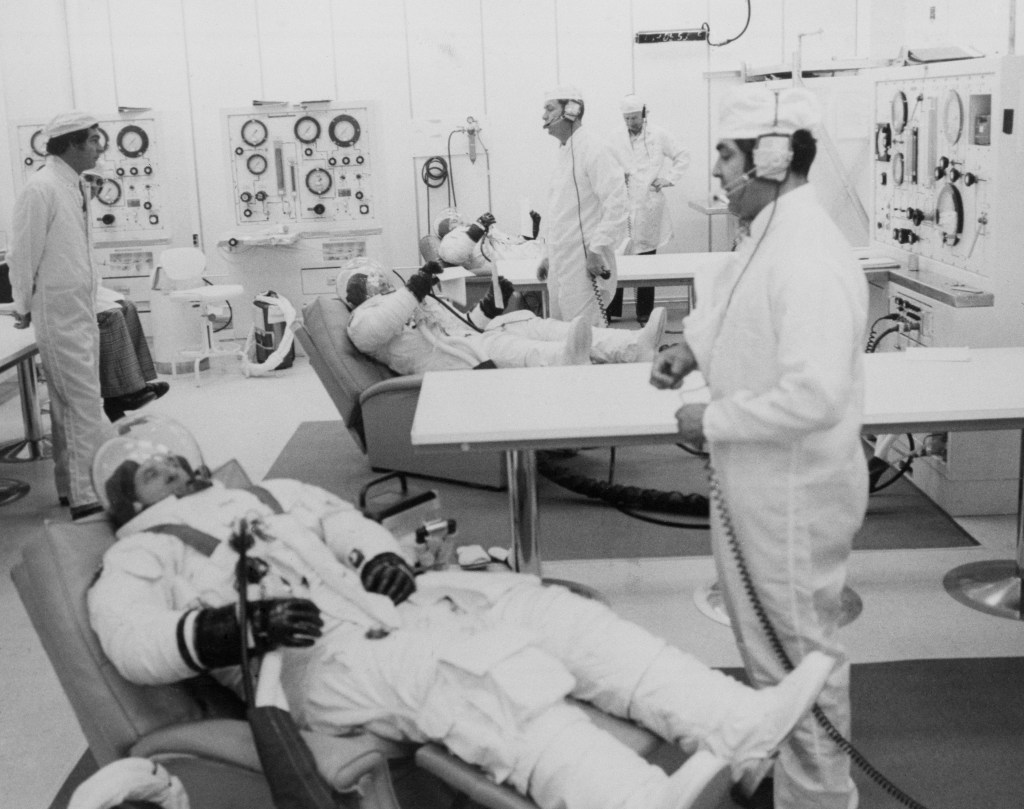

In the MSOB, the prime and backup ASTP crews conducted tests of their spacecraft in an altitude chamber. After both crews completed simulated runs in December 1974, the prime crew of Stafford, Brand, and Slayton suited up, entered the CM inside the chamber, closed the hatch, and conducted an actual test on Jan. 14, with the chamber simulating altitudes of up to 220,000 feet. Two days later, the backup crew of Bean, Evans, and Lousma completed a similar test.
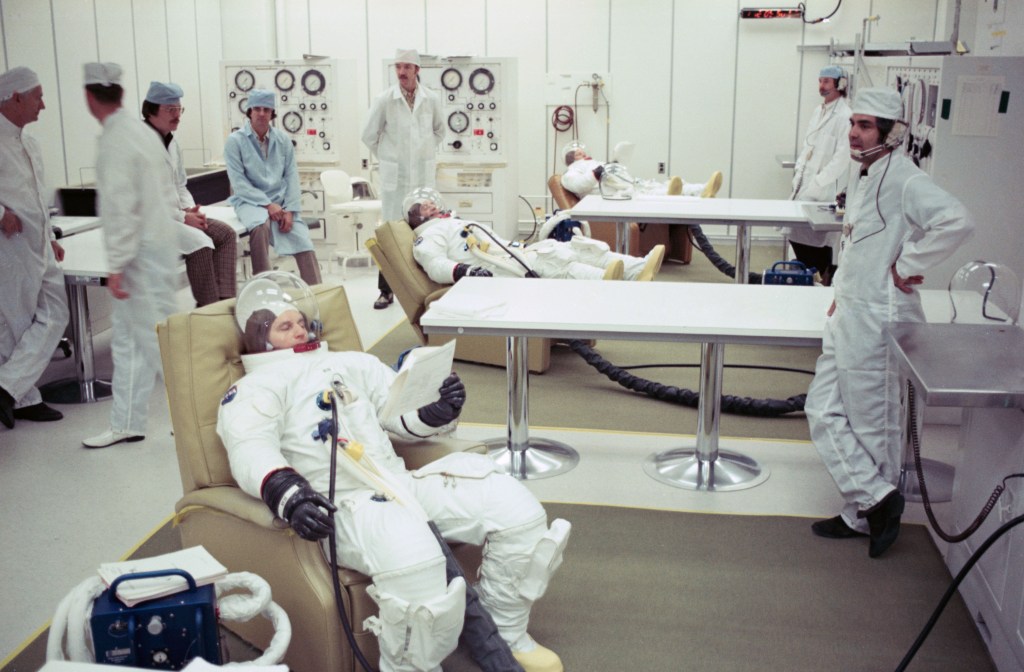
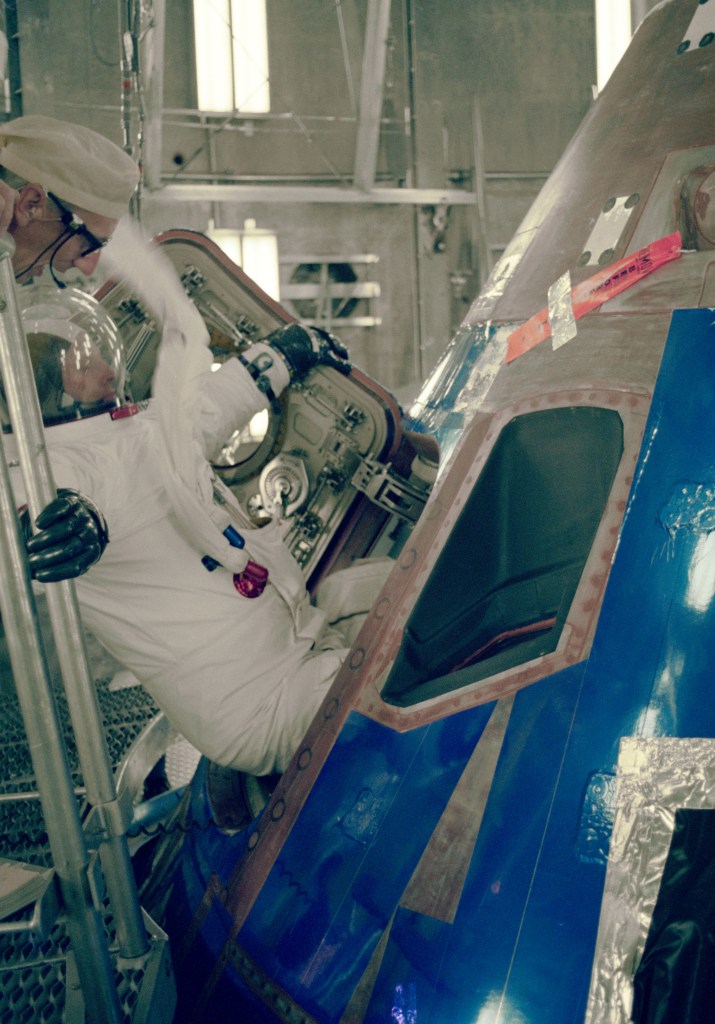
To solve the problem of the Apollo and Soyuz spacecraft operating at different atmospheric pressures and compositions and using incompatible docking mechanisms, engineers designed a Docking Module (DM) that acted as both an airlock and a transfer tunnel and a Docking System (DS) that allowed the two nations’ spacecraft to physically join in space. NASA contracted with Rockwell International to build the DM. Engineers equipped one end of the DM with the standard Apollo probe-and-drogue docking mechanism and the other end with the androgynous system that linked up with its opposite half installed on the modified Soyuz spacecraft. During launch, the DM rested inside the Spacecraft Lunar Module (LM) Adaptor (SLA) atop the rocket’s upper stage, much like the LM during Apollo flights. Once in orbit, the astronauts separated the CSM from the upper stage, turned the spacecraft around, docked with the DM and pulled it free.
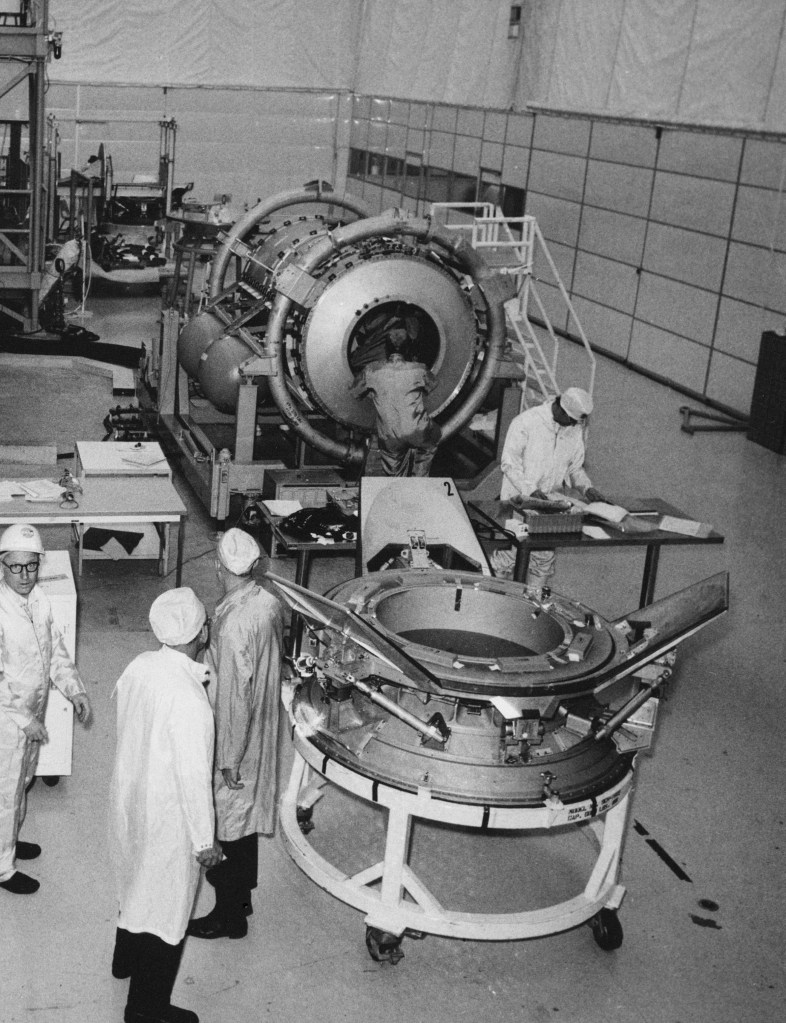
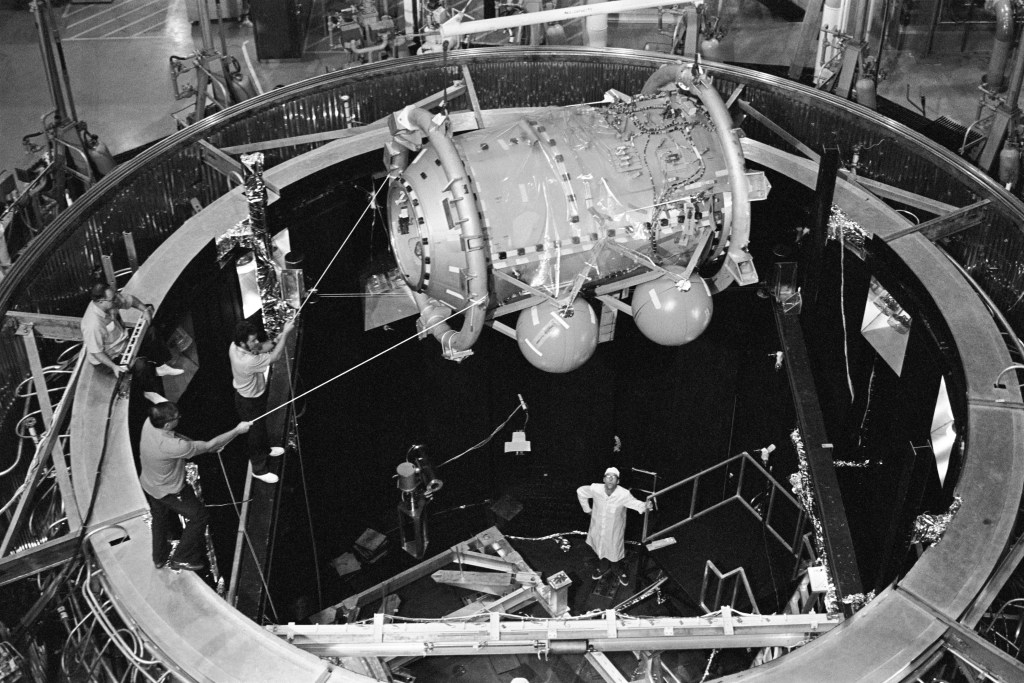
After extensive vacuum testing in Chamber B of the Space Environment Simulation Laboratory at NASA’s Johnson Space Center in Houston, the flight DM arrived at KSC on Oct. 29, 1974, and workers prepared it for more testing in a vacuum chamber in the MSOB. The flight DS arrived at KSC on Jan. 3, 1975, and two weeks later workers installed it on the DM. On Jan. 27, engineers lowered the DM onto the CM in the altitude chamber to conduct a mechanical docking test. Engineers conducted 10 days of joint tests of television and audio equipment to ensure systems compatibility.
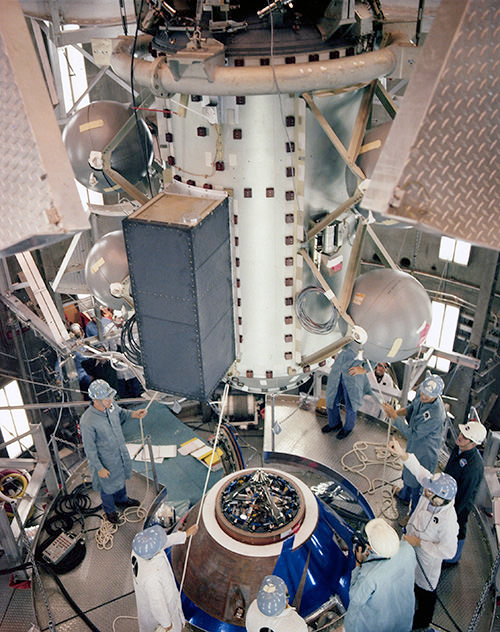
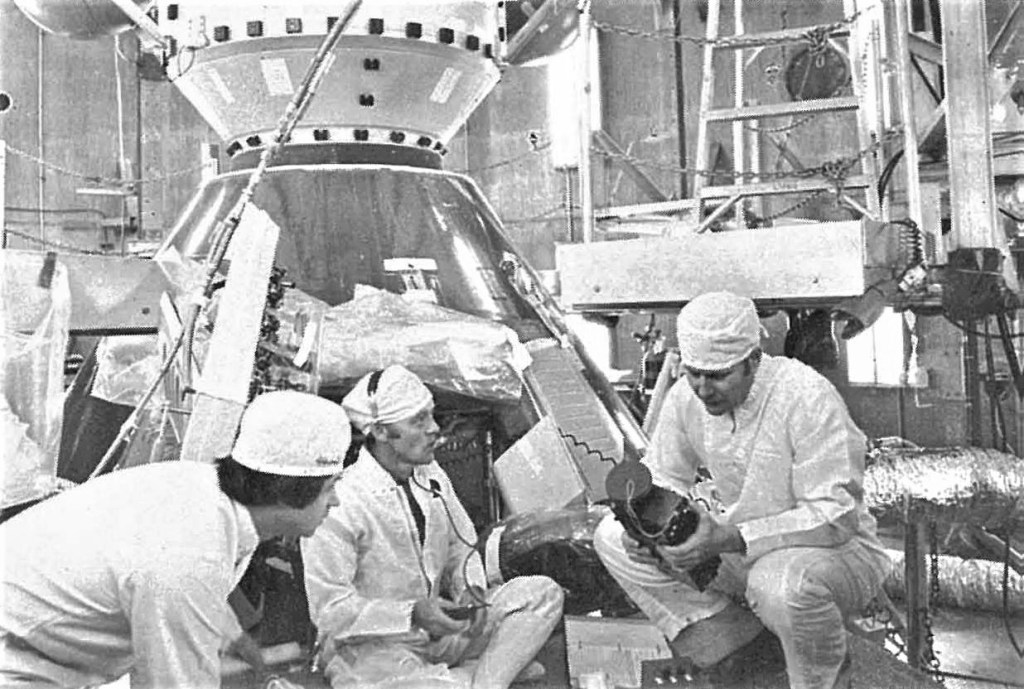
To be continued…
Major events around the world in January 1975:
January 5 – Musical The Wiz opens on Broadway, runs for 1,672 performances.
January 6 – The game show Wheel of Fortune debuts on NBC.
January 8 – Ella Grasso of Connecticut becomes the first elected female governor in the U.S.
January 11 – The S-II second stage of the Saturn V rocket that launched Skylab reenters the Earth’s atmosphere over the Indian Ocean.
January 12 – The Pittsburg Steelers beat the Minnesota Vikings in Super Bowl IX, played in Tulane Stadium in New Orleans.
January 15 – Space Mountain opens at Disney World in Orlando.
January 18 – The Jeffersons premieres on CBS.
January 22 – Launch of the Landsat-2 Earth resources monitoring satellite.
January 30 – Ernő Rubik applies for a patent in Hungary for his Magic Cube, later known as Rubik’s Cube.
Explore More
Discover More Topics From NASA
55 Years Ago: Apollo 13 Prepares for Third Moon Landing
Following the historic year of 1969 that saw two successful Moon landings, 1970 opened on a more sober note. Ever-tightening federal budgets forced NASA to rescope its future lunar landing plans. The need for a Saturn V to launch an experimental space station in 1972 forced the cancellation of the final Moon landing mission and an overall stretching out of the Moon landing flights. Apollo 13 slipped to April, but the crew of James Lovell, Thomas “Ken” Mattingly, and Fred W. Haise and their backups John Young, John “Jack” Swigert, and Charles Duke continued intensive training for the landing at Fra Mauro. Training included practicing their surface excursions and water egress, along with time in spacecraft simulators. The three stages of the Apollo 14 Saturn V arrived at the launch site and workers began the stacking process for that mission now planned for October 1970. Scientists met in Houston to review the preliminary findings from their studies of the lunar samples returned by Apollo 11.
Apollo Program Changes

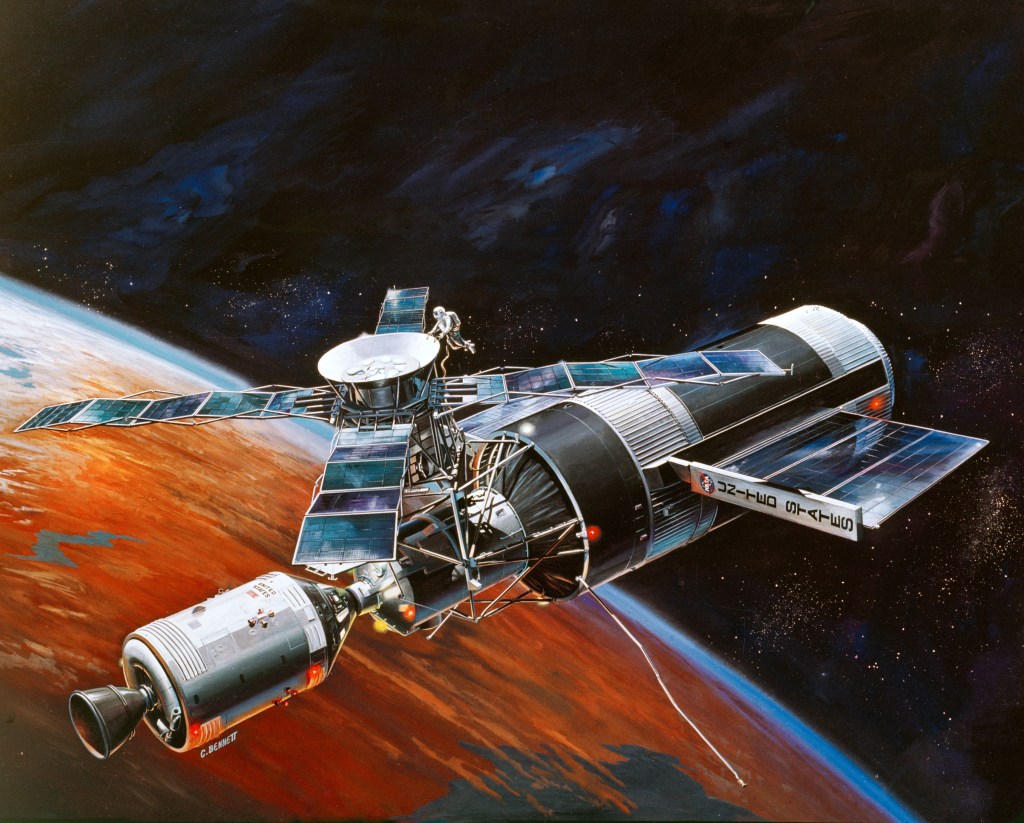
On Jan. 4, 1970, NASA Deputy Administrator George Low announced the cancellation of Apollo 20, the final planned Apollo Moon landing mission. The agency needed the Saturn V rocket that would have launched Apollo 20 to launch the Apollo Applications Program (AAP) experimental space station, renamed Skylab in February 1970. Since previous NASA Administrator James Webb had precluded the building of any additional Saturn V rockets in 1968, this proved the only viable yet difficult solution.
In other program changes, on Jan. 13 NASA Administrator Thomas Paine addressed how NASA planned to deal with ongoing budgetary challenges. Lunar landing missions would now occur every six months instead of every four, and with the slip of Apollo 13 to April, Apollo 14 would now fly in October instead of July. Apollo 15 and 16 would fly in 1971, then AAP would launch in 1972, and three successive crews would spend, 28, 56, and 56 days aboard the station. Lunar landing missions would resume in 1973, with Apollo 17, 18, and 19 closing out the program by the following year.
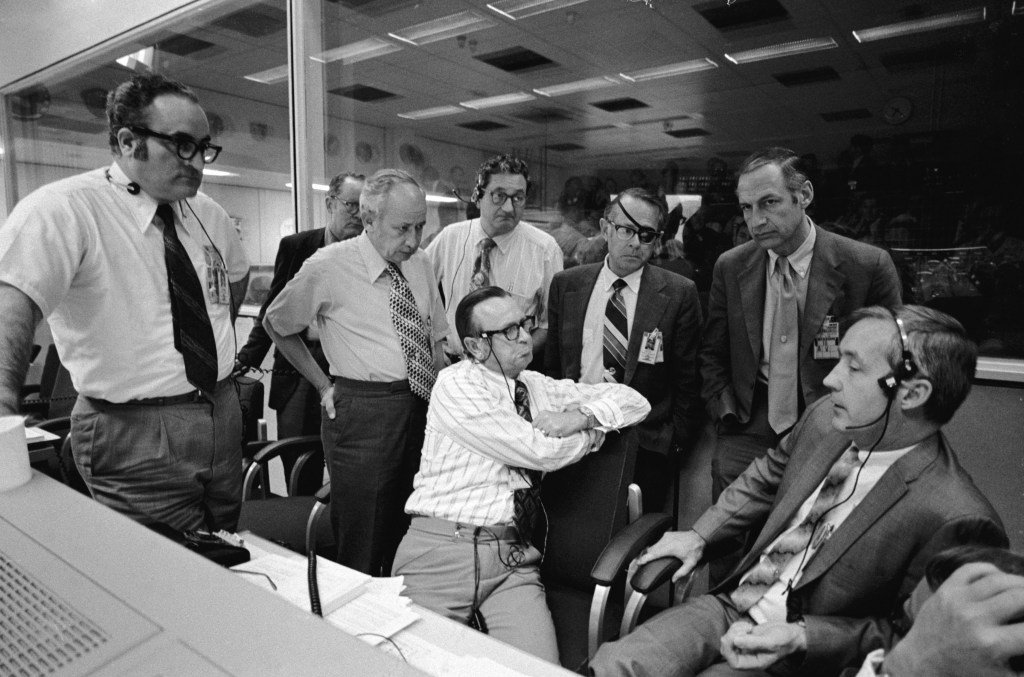
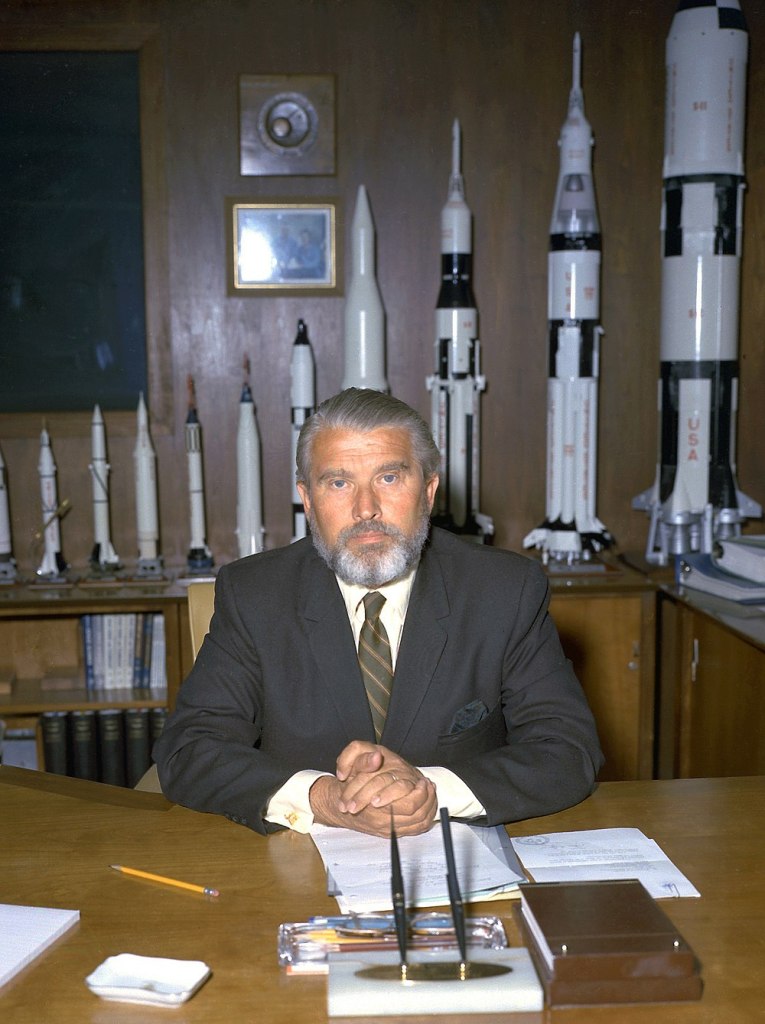
In addition to programmatic changes, several key management changes took place at NASA in January 1970. On Nov. 26, 1969, Christopher Kraft , the director of flight operations at the Manned Spacecraft Center (MSC), now NASA’s Johnson Space Center in Houston, assumed the position of MSC deputy director. On Dec. 28, MSC Director Robert Gilruth named Sigurd “Sig” Sjoberg, deputy director of flight operations since 1963, to succeed Kraft. At NASA Headquarters in Washington, D.C., Associate Administrator for Manned Space Flight George Mueller resigned his position effective Dec. 10, 1969. To replace Mueller, on Jan. 8, NASA Administrator Paine named Dale Myers, vice president and general manager of the space shuttle program at North American Rockwell Corporation. On Jan. 27, Paine announced that Wernher von Braun, designer of the Saturn family of rockets and director of the Marshall Space Flight Center in Huntsville, Alabama, since its establishment in 1960, would move to NASA Headquarters and assume the position of deputy associate administrator for planning.
Apollo 11 Lunar Science Symposium
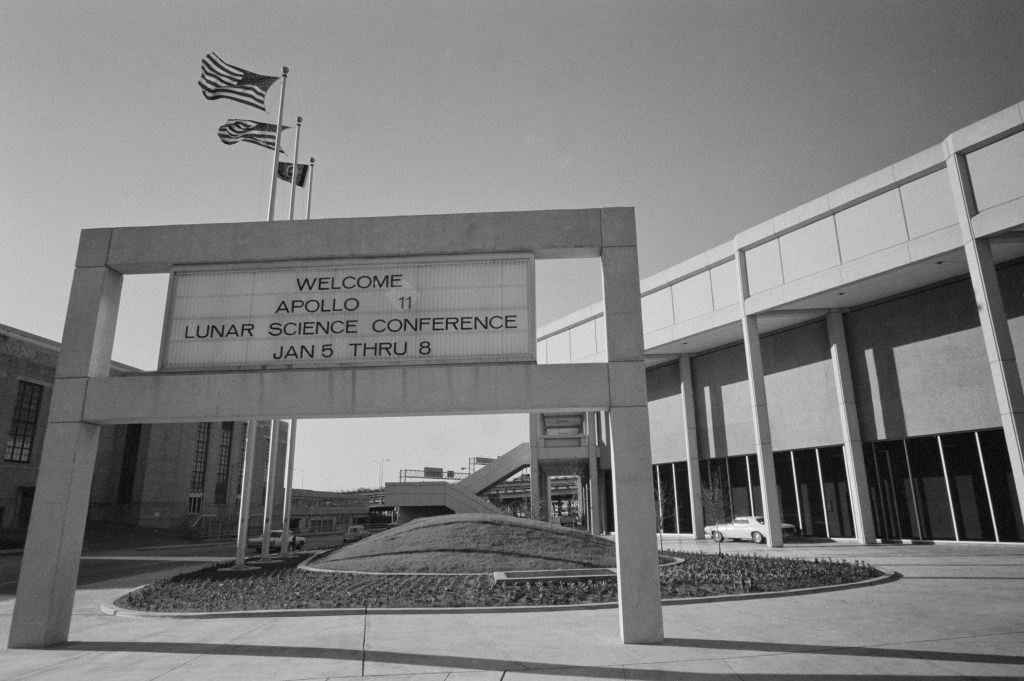
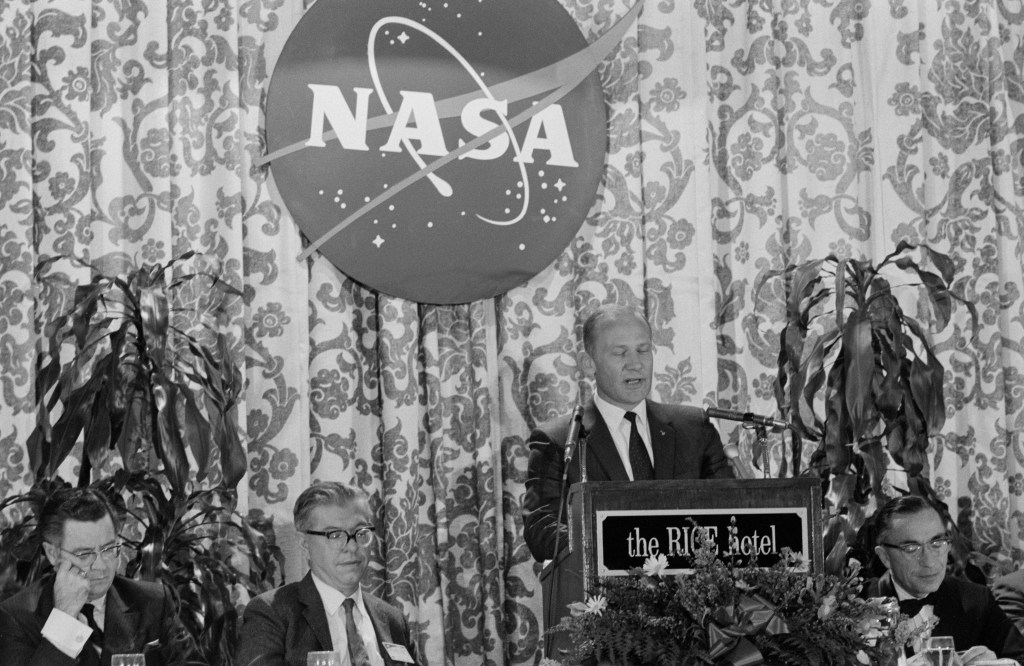
Between Jan. 5 and 8, 1970, several hundred scientists, including all 142 U.S. and international principal investigators provided with Apollo 11 samples, gathered in downtown Houston’s Albert Thomas Exhibit and Convention Center for the Apollo 11 Lunar Science Conference. During the conference, the scientists discussed the chemistry, mineralogy, and petrology of the lunar samples, the search for carbon compounds and any evidence of organic material, the results of dating of the samples, and the results returned by the Early Apollo Surface Experiments Package (EASEP). Senior NASA managers including Administrator Paine, Deputy Administrator Low, and Apollo Program Director Rocco Petrone attended the conference, and Apollo 11 astronaut Edwin “Buzz” Aldrin gave a keynote speech at a dinner reception. The prestigious journal Science dedicated its Jan. 30, 1970, edition to the papers presented at the conference, dubbing it “The Moon Issue”. The Lunar Science Conference evolved into an annual event, renamed the Lunar and Planetary Science Conference in 1978, and continues to attract scientists from around the world to discuss the latest developments in lunar and planetary exploration.
Apollo 12
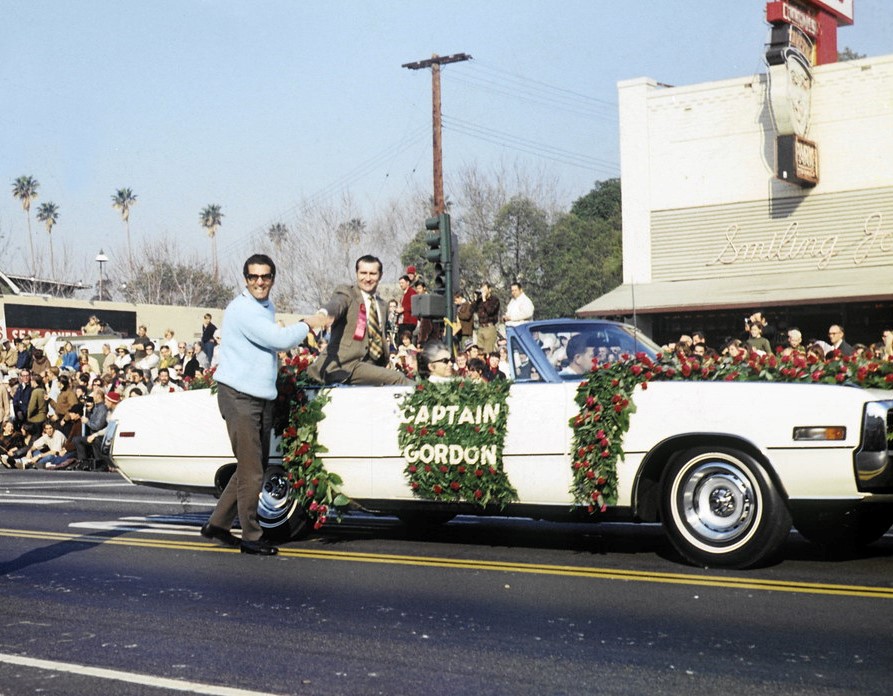
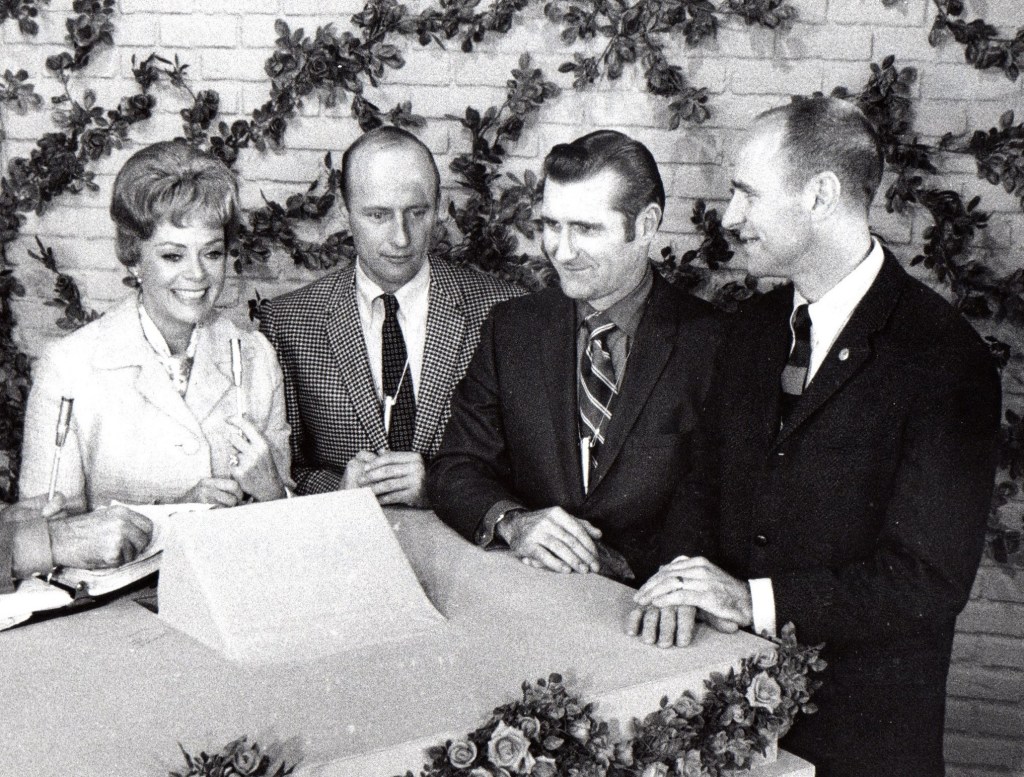
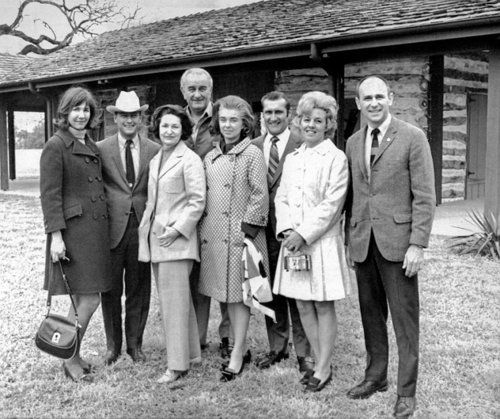
On New Year’s Day 1970, Apollo 12 astronauts Charles “Pete” Conrad, Richard Gordon, and Alan Bean led the 81st annual Tournament of Roses Parade in Pasadena, California, as Grand Marshals. Actress June Lockhart, an avid space enthusiast, interviewed them during the TV broadcast of the event. As President Richard Nixon had earlier requested, Conrad, Gordon, and Bean and their wives paid a visit to former President Lyndon B. Johnson and First Lady Lady Bird Johnson at their ranch near Fredericksburg, Texas, on Jan. 14, 1970. The astronauts described their mission to the former President and Mrs. Johnson.
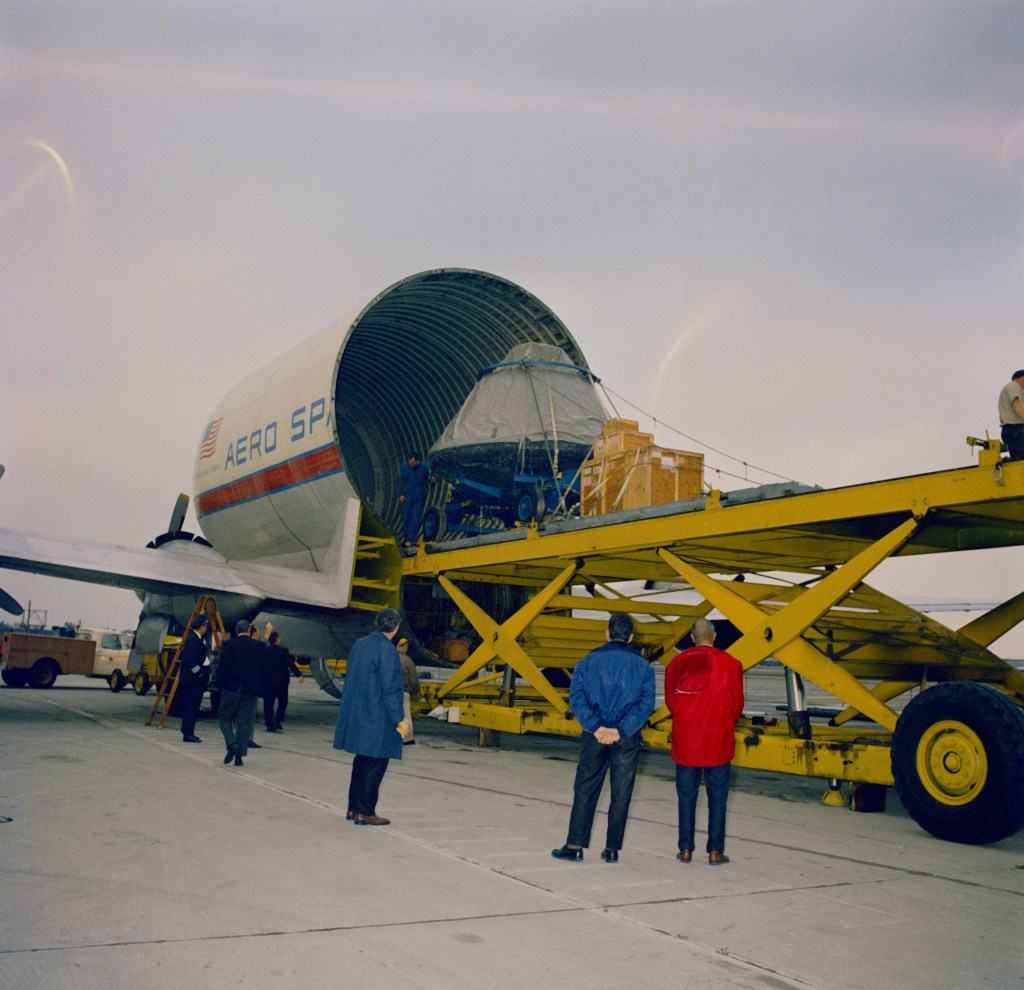
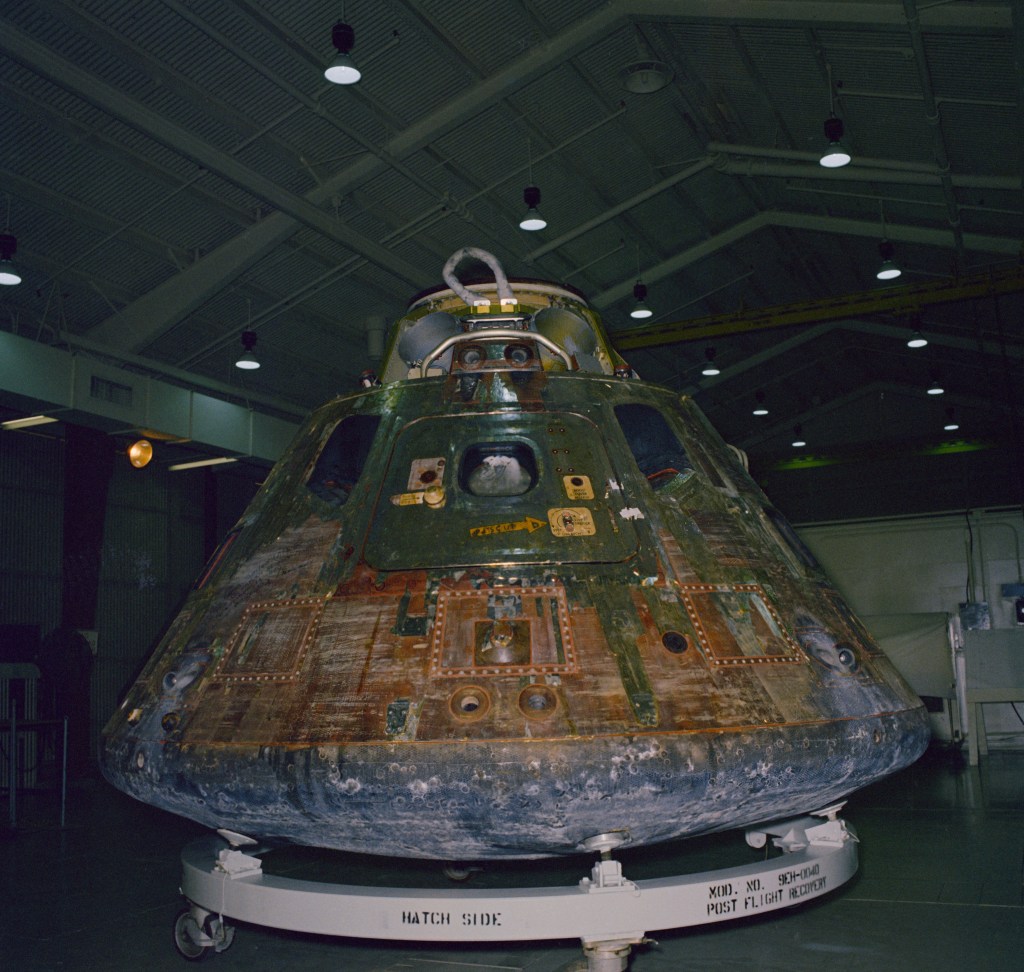
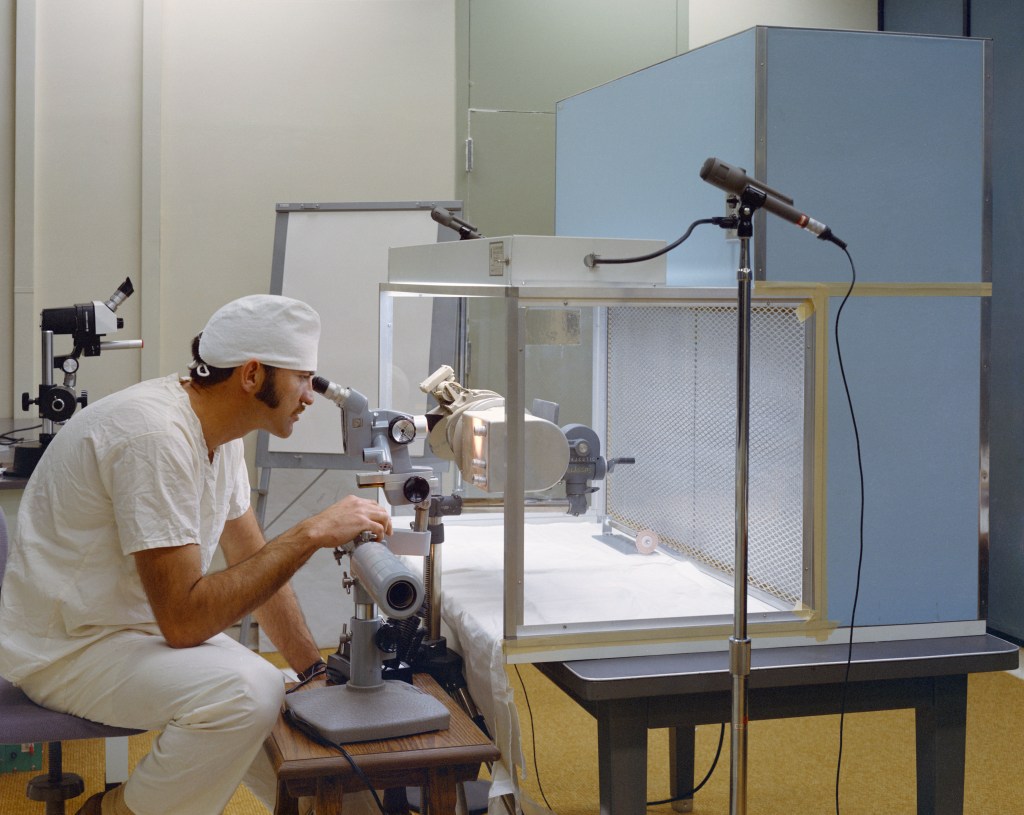
Managers released the Apollo 12 Command Module (CM) Yankee Clipper from quarantine and shipped it back to its manufacturer, the North American Rockwell plant in Downey, California, on Jan. 12. Engineers there completed a thorough inspection of the spacecraft and eventually prepared it for public display. NASA transferred Yankee Clipper to the Smithsonian Institution in 1973, and today the capsule resides at the Virginia Air & Space Center in Hampton, Virginia. NASA also released from quarantine the lunar samples and the parts of the Surveyor 3 spacecraft returned by the Apollo 12 astronauts. The scientists received their allocated samples in mid-February, while after initial examination in the Lunar Receiving Laboratory (LRL) the Surveyor parts arrived at NASA’s Jet Propulsion Laboratory in Pasadena, California, for detailed analysis.
Apollo 13
As the first step in the programmatic rescheduling of all Moon landings, on Jan. 7, NASA announced the delay of the Apollo 13 launch from March 12 to April 11. The Saturn V rocket topped with the Apollo spacecraft had rolled out the previous December to Launch Pad 39A where workers began tests on the vehicle. The prime crew of Lovell, Mattingly, and Haise, and their backups Young, Swigert, and Duke, continued to train for the 10-day mission to land in the Fra Mauro region of the Moon.
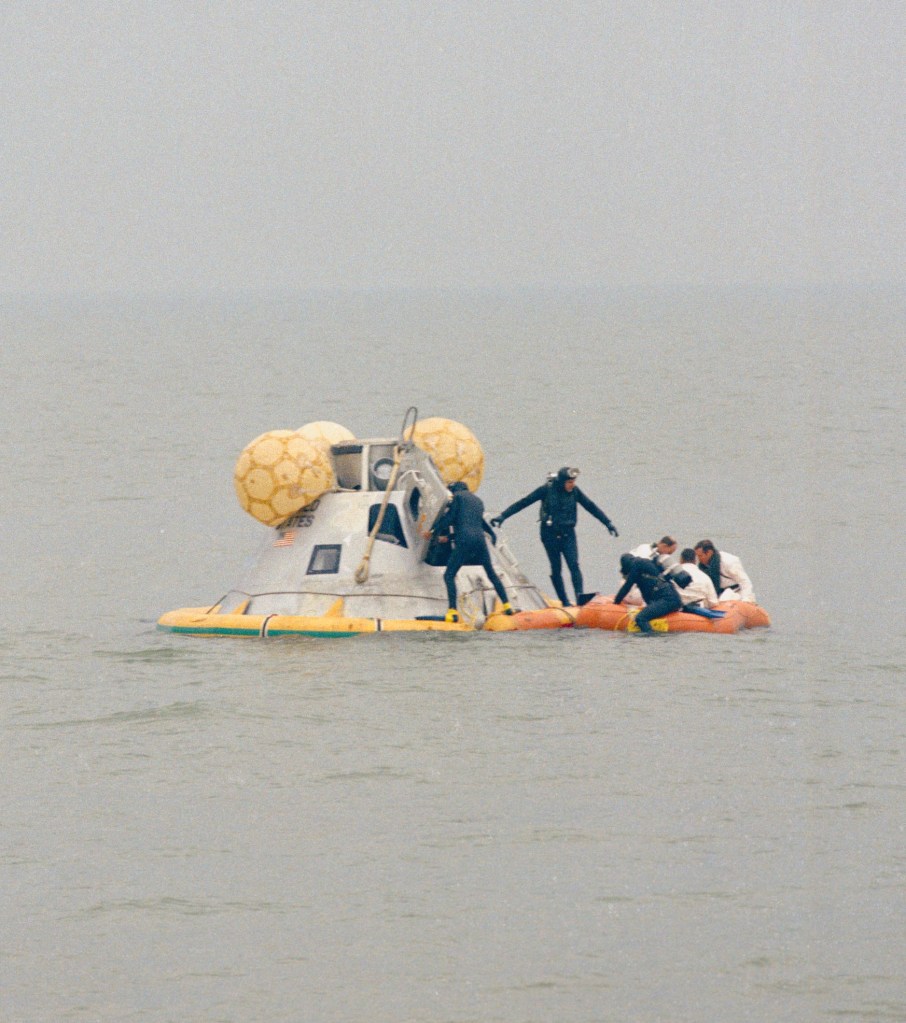
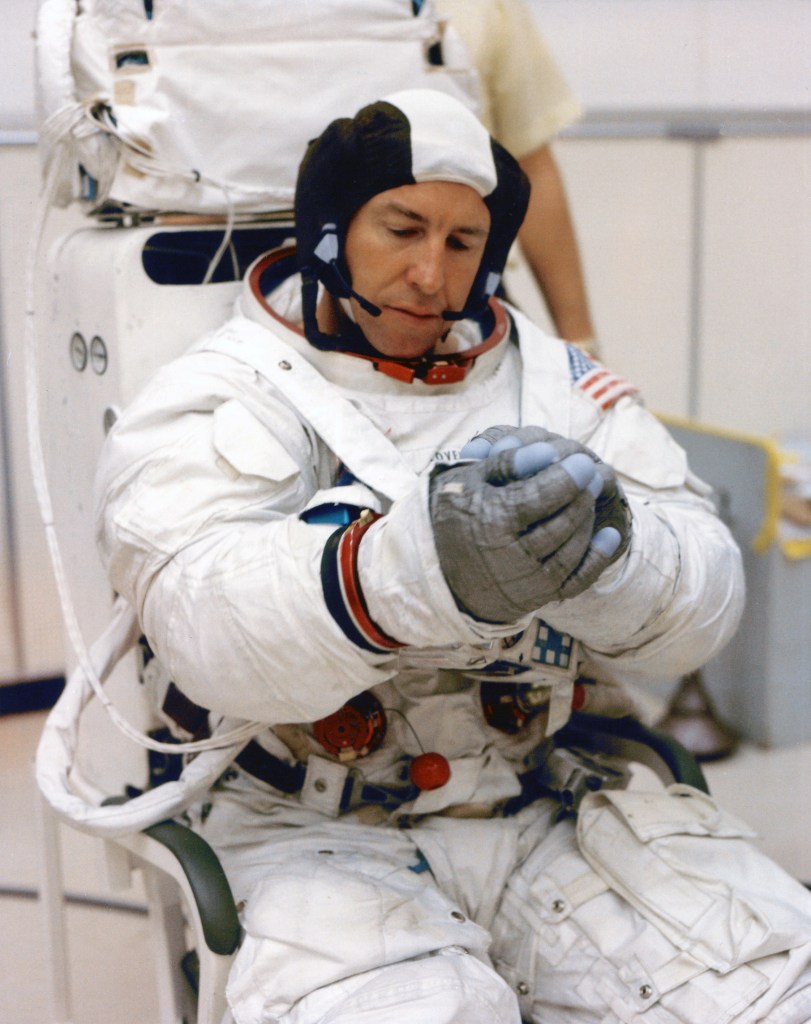
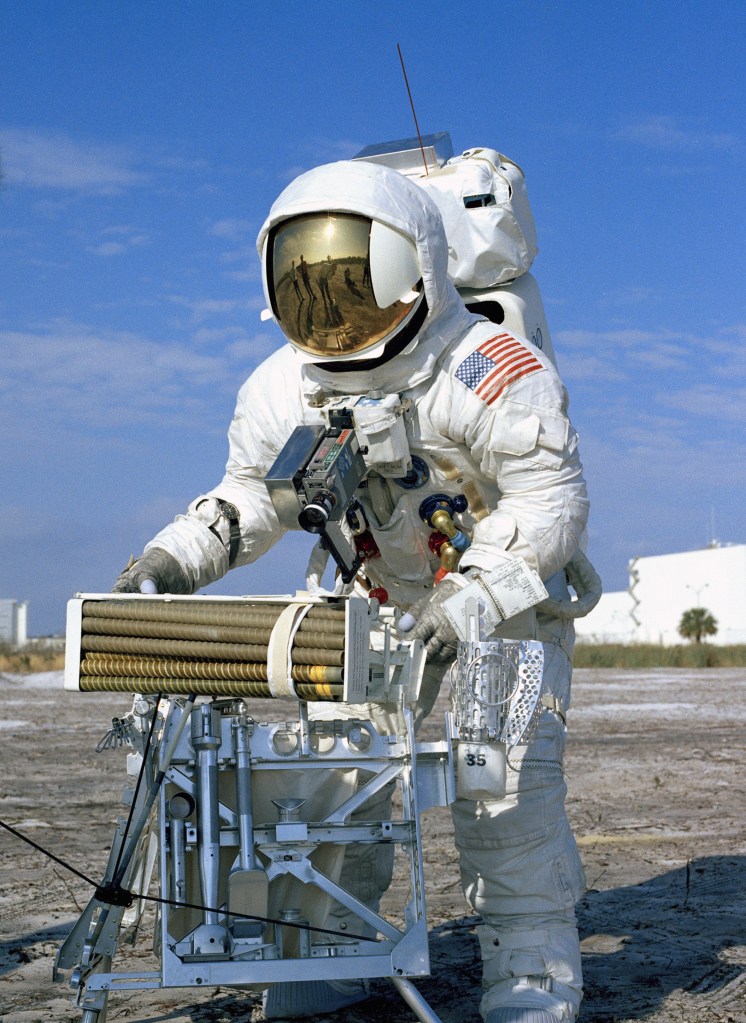
Apollo 13 prime crew members Lovell, Mattingly, and Haise completed their water egress training in the Gulf of Mexico near the coast of Galveston, Texas, on Jan. 24. With support from the Motorized Vessel Retriever, the three astronauts entered a boilerplate Apollo CM. Sailors lowered the capsule into the water, first in the Stable 2 or apex down position. Three self-inflating balloons righted the spacecraft into the Stable 1 apex up position within a few minutes. With assistance from the recovery team, Lovell, Mattingly, and Haise exited the spacecraft onto a life raft. A helicopter lifted them out of the life rafts using Billy Pugh nets and returned them to Retriever. Later that day, the astronauts returned to the MSC to examine Moon rocks in the LRL that the Apollo 12 astronauts had returned the previous November.
During their 33.5 hours on the Moon’s surface, Lovell and Haise planned to conduct two four-hour spacewalks to set up the Apollo Lunar Surface Experiment Package (ALSEP), a suite of five investigations designed to collect data about the lunar environment after the astronauts’ departure, and to conduct geologic explorations of the landing site. Mattingly planned to remain in the Command and Service Module (CSM), conducting geologic observations from lunar orbit including photographing potential future landing sites. Lovell and Haise conducted several simulations of the spacewalk timelines, including setting up the ALSEP equipment, practicing taking core samples, and photographing their activities for documentation purposes. They and their backups conducted practice sessions with the partial gravity simulator, also known as POGO, an arrangement of harnesses and servos that simulated walking in the lunar one-sixth gravity. Lovell and Young completed several flights in the Lunar Landing Training Vehicle (LLTV) that simulated the flying characteristics of the Lunar Module (LM) for the final several hundred feet of the descent to the surface.
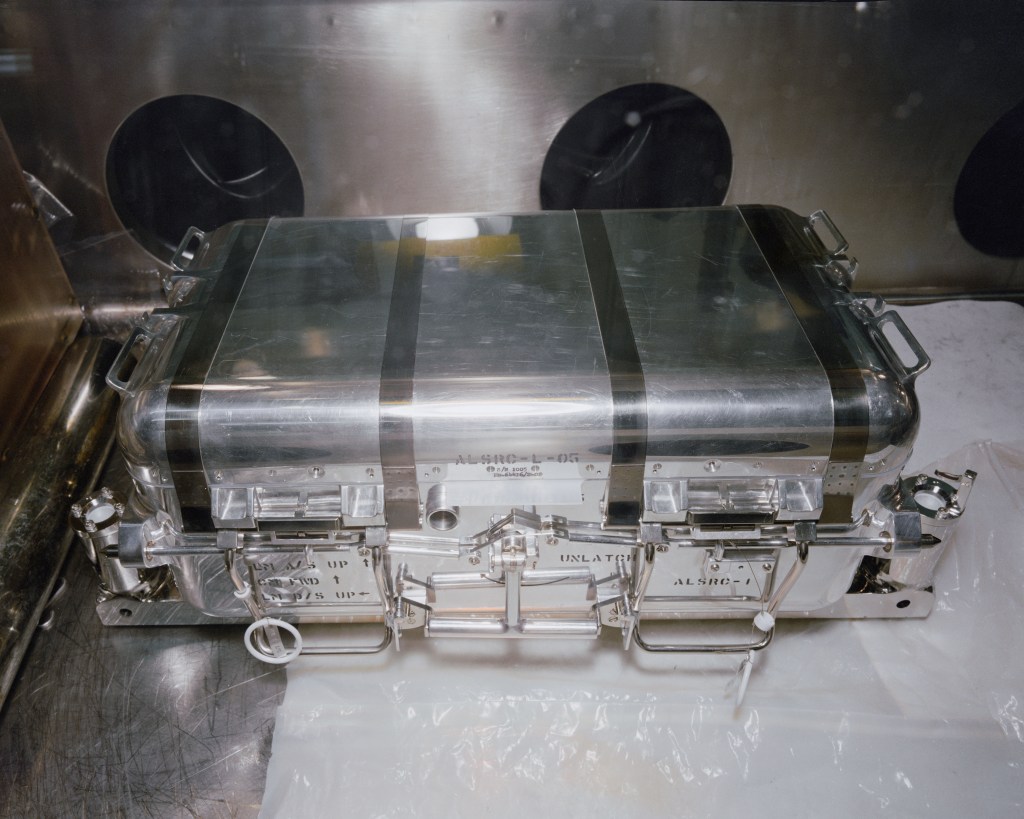
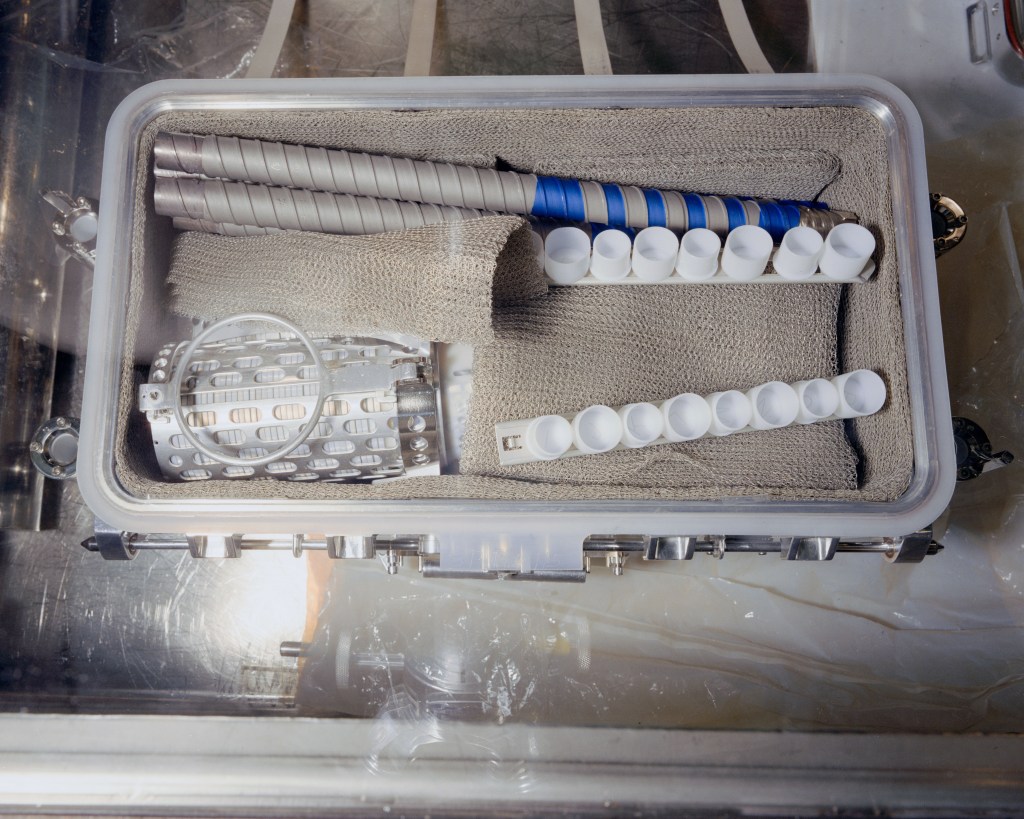
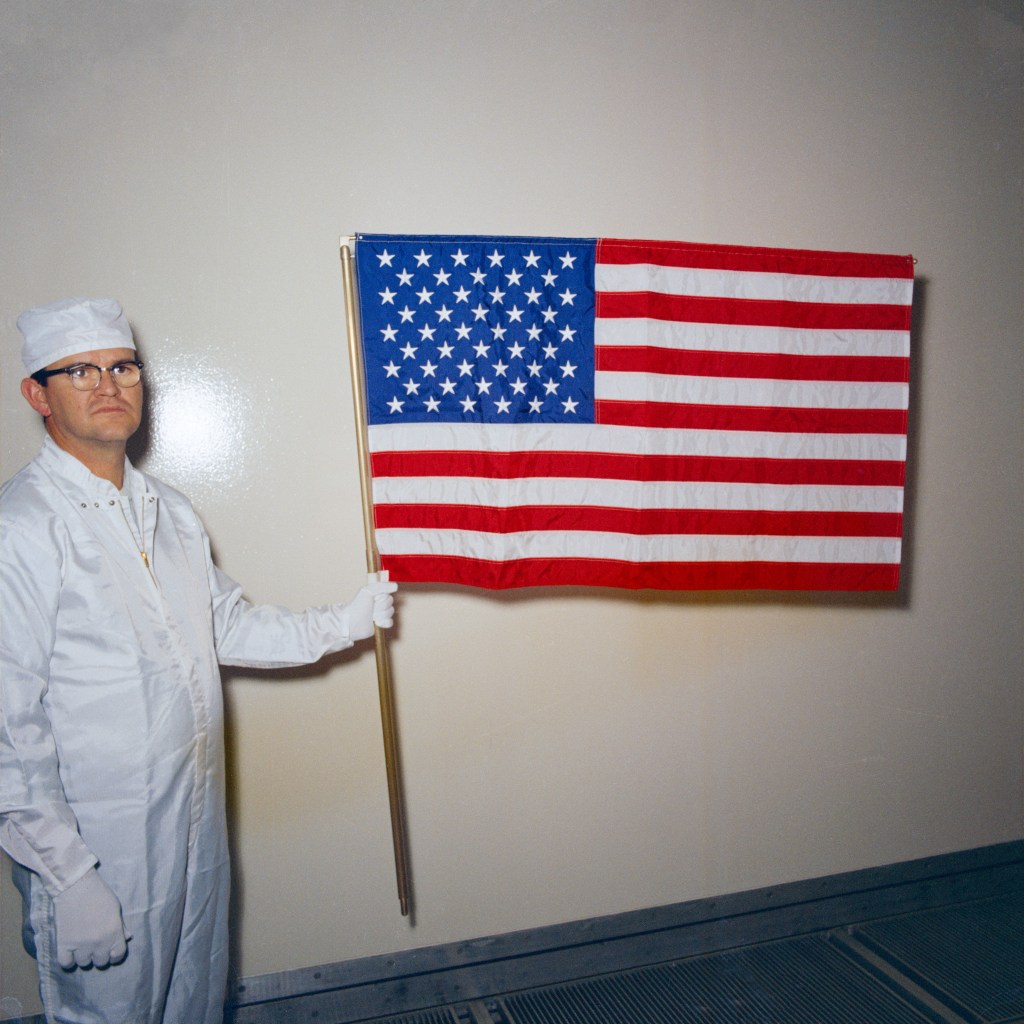
In the LRL, technicians prepared the Apollo Lunar Sample Return Containers (ALSRC), or rock boxes, for Apollo 13. Like all missions, Apollo 13 carried two ALSRCs, with each box and lid manufactured from a single block of aluminum. Workers placed sample containers and bags and two 2-cm core sample tubes inside the two ALSRCs. Once loaded, technicians sealed the boxes under vacuum conditions so that they would not contain pressure greater than lunar ambient conditions. Engineers at MSC prepared the American flag that Lovell and Haise planned to plant on the Moon for stowage on the LM’s forward landing strut.
Apollo 14
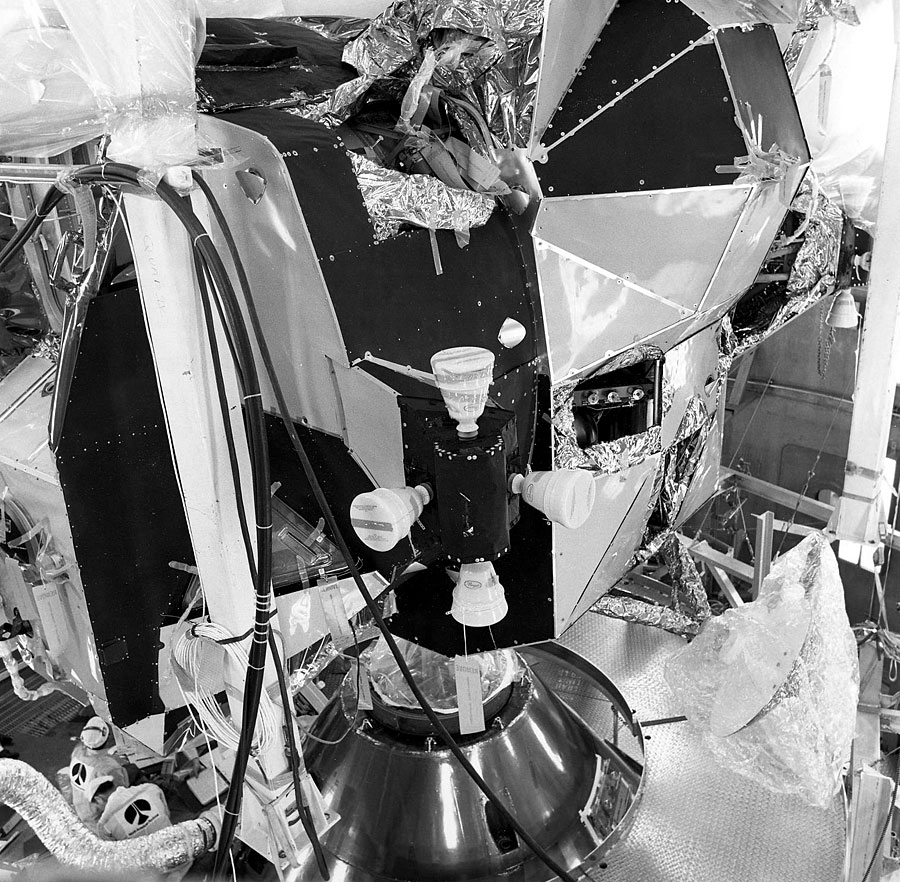
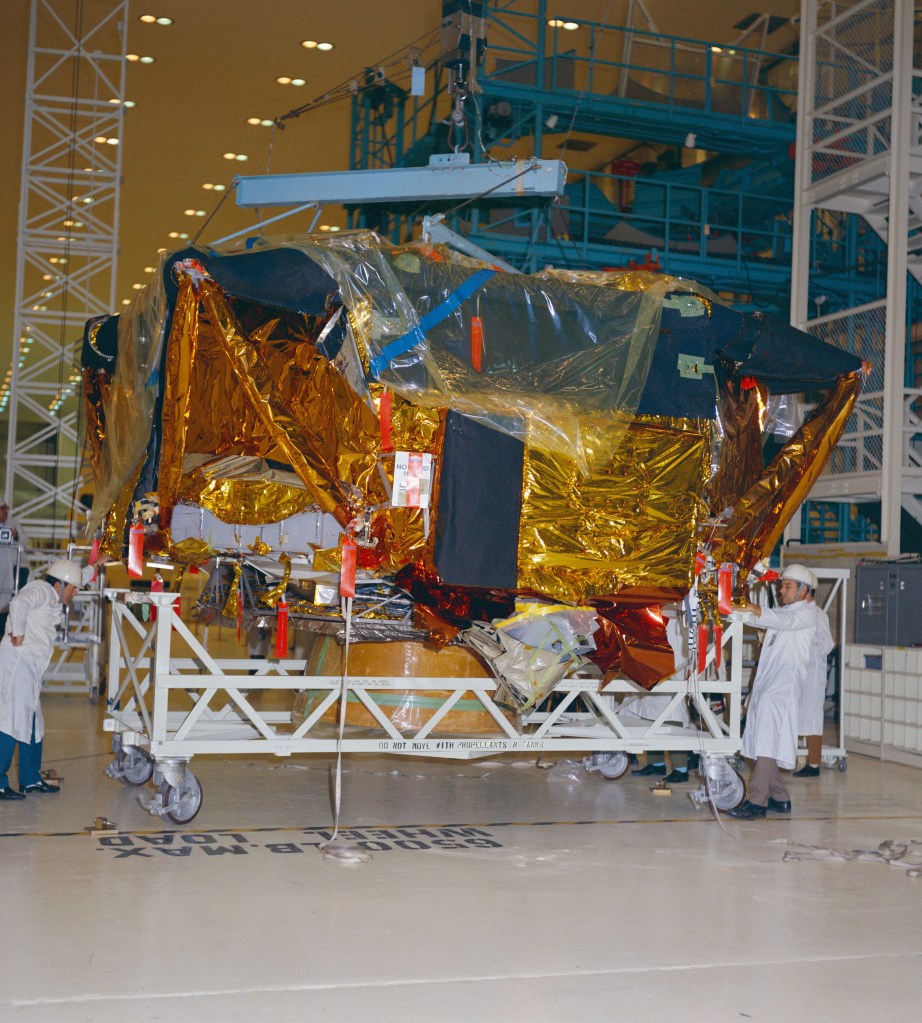
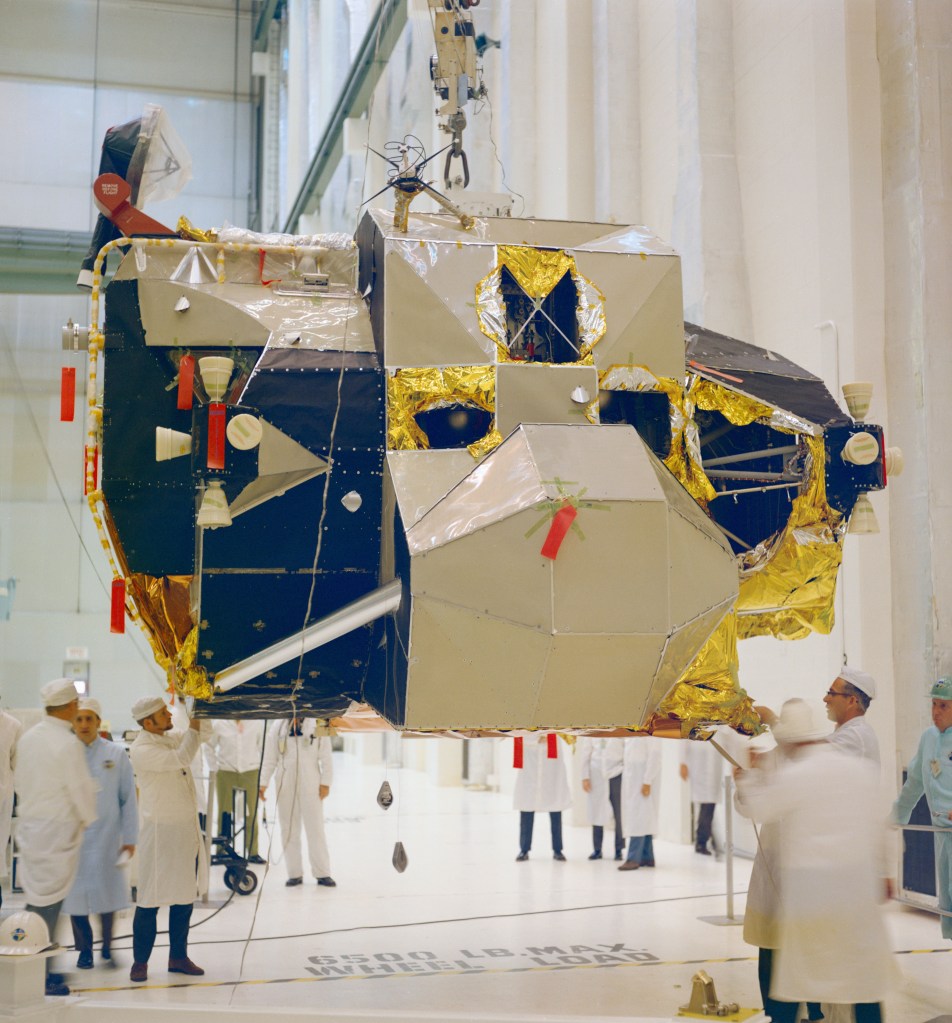
As part of the rescheduling of Moon missions, NASA delayed the launch of the next flight, Apollo 14, from July to October 1970. The CSM and the LM had arrived at NASA’s Kennedy Space Center (KSC) in Florida late in 1969 and technicians conducted tests on the vehicles in the Manned Spacecraft Operations Building (MSOB). On Jan. 12, workers lowered the ascent stage of the LM onto the CSM to perform a docking test – the next time the two vehicles docked they would be on the way to the Moon and the test verified their compatibility. Workers mated the two stages of the LM on Jan. 20.
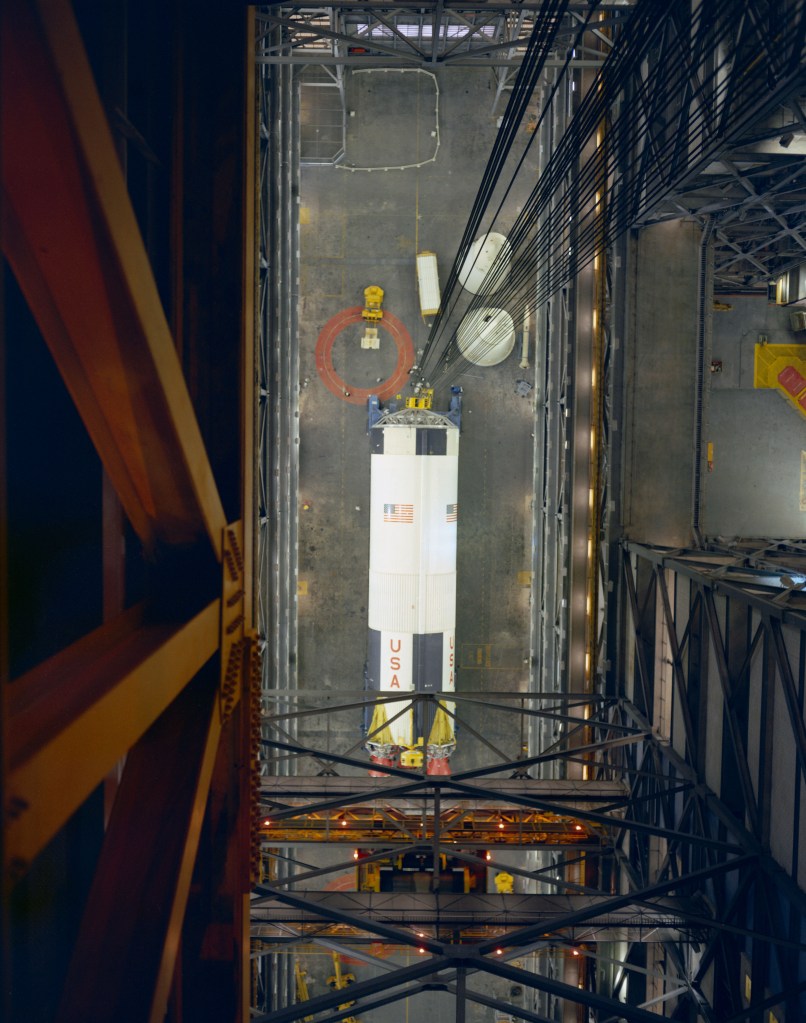
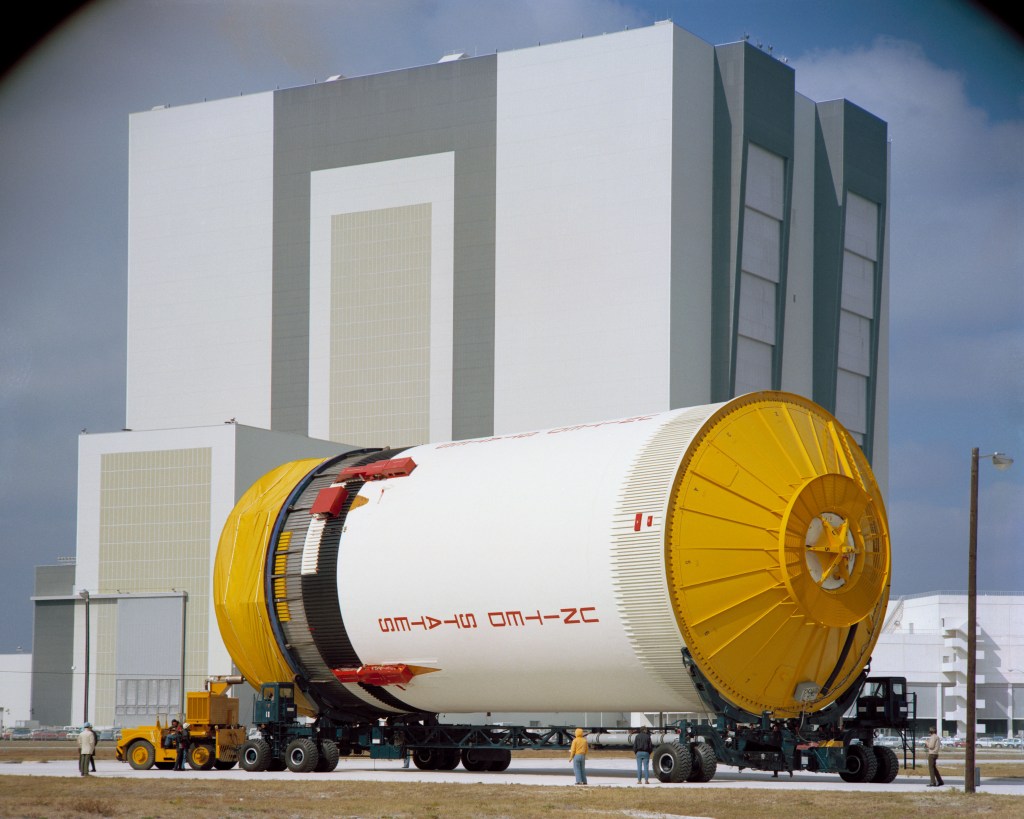
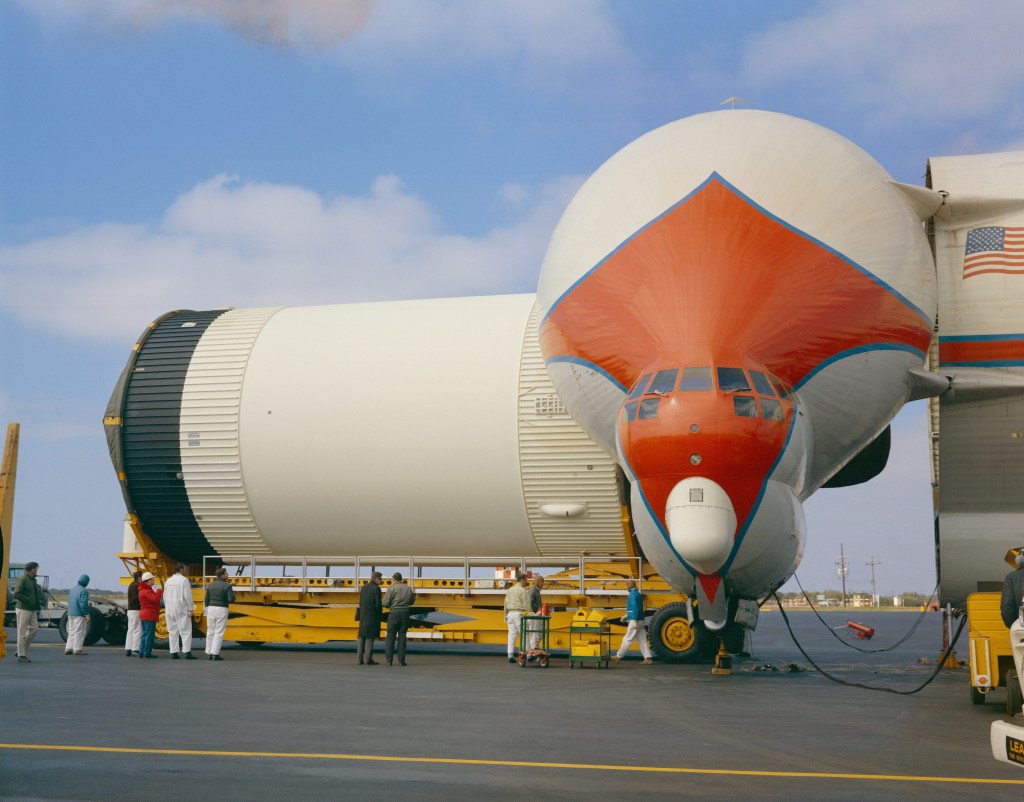
The three stages of the Apollo 14 Saturn V arrived in KSC’s cavernous Vehicle Assembly Building (VAB) in mid-January and while workers stacked the first stage on its Mobile Launch Platform on Jan. 14, they delayed stacking the remainder of the rocket stages until May 1970. That decision proved fortunate, since engineers needed to modify the second stage engines following the pogo oscillations experienced during the Apollo 13 launch.
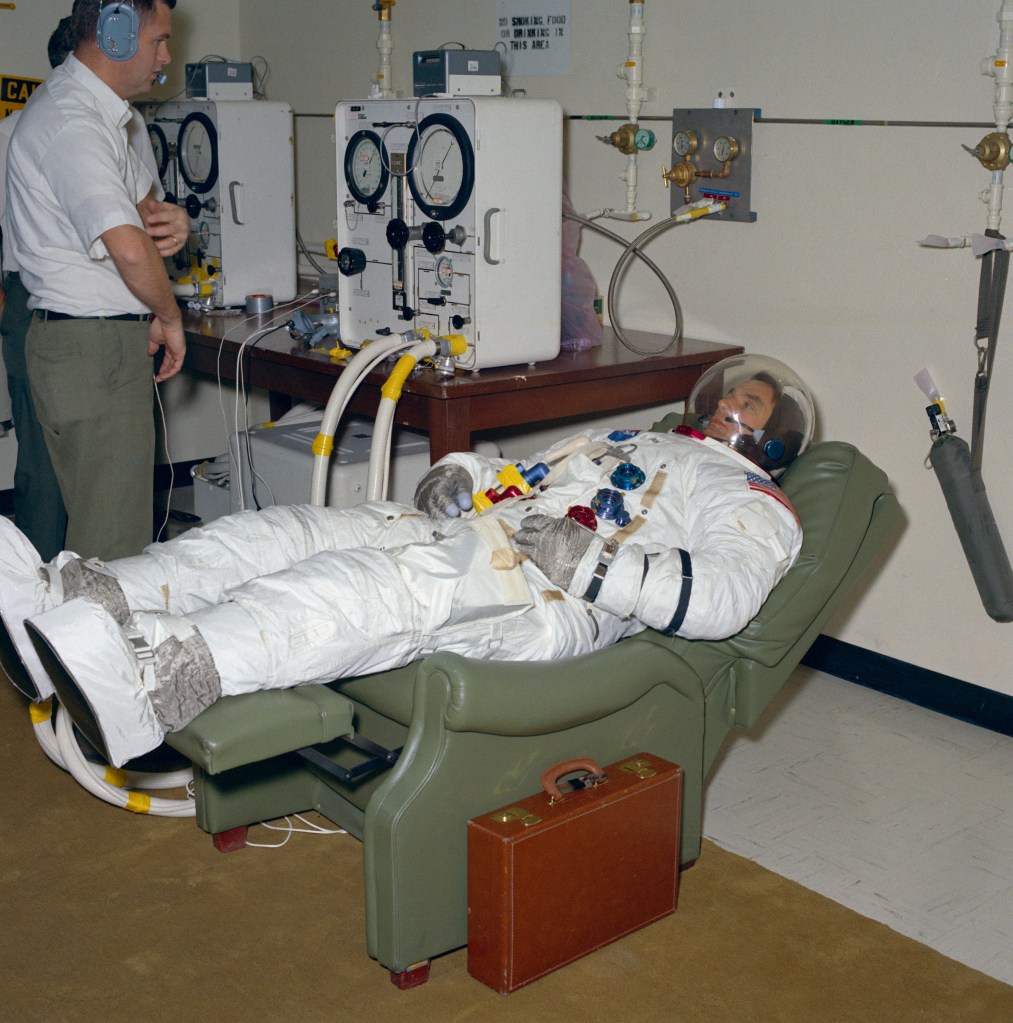

Apollo 14 astronauts Alan Shepard, Stuart Roosa, and Edgar Mitchell and their backups Eugene Cernan, Ronald Evans, and Joe Engle continued training for their mission. In addition to working in spacecraft simulators, Shepard, Mitchell, Cernan, and Engle conducted suited vacuum chamber runs in MSC’s Space Environmental Simulation Laboratory (SESL) and completed their first familiarization with deploying their suite of ALSEP investigations.
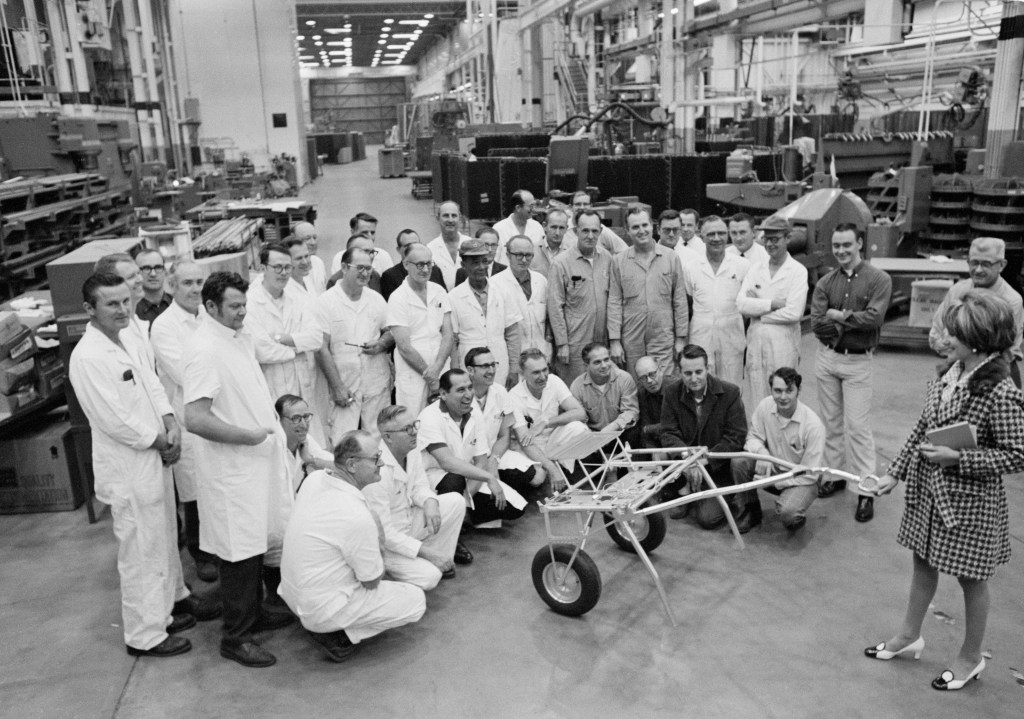
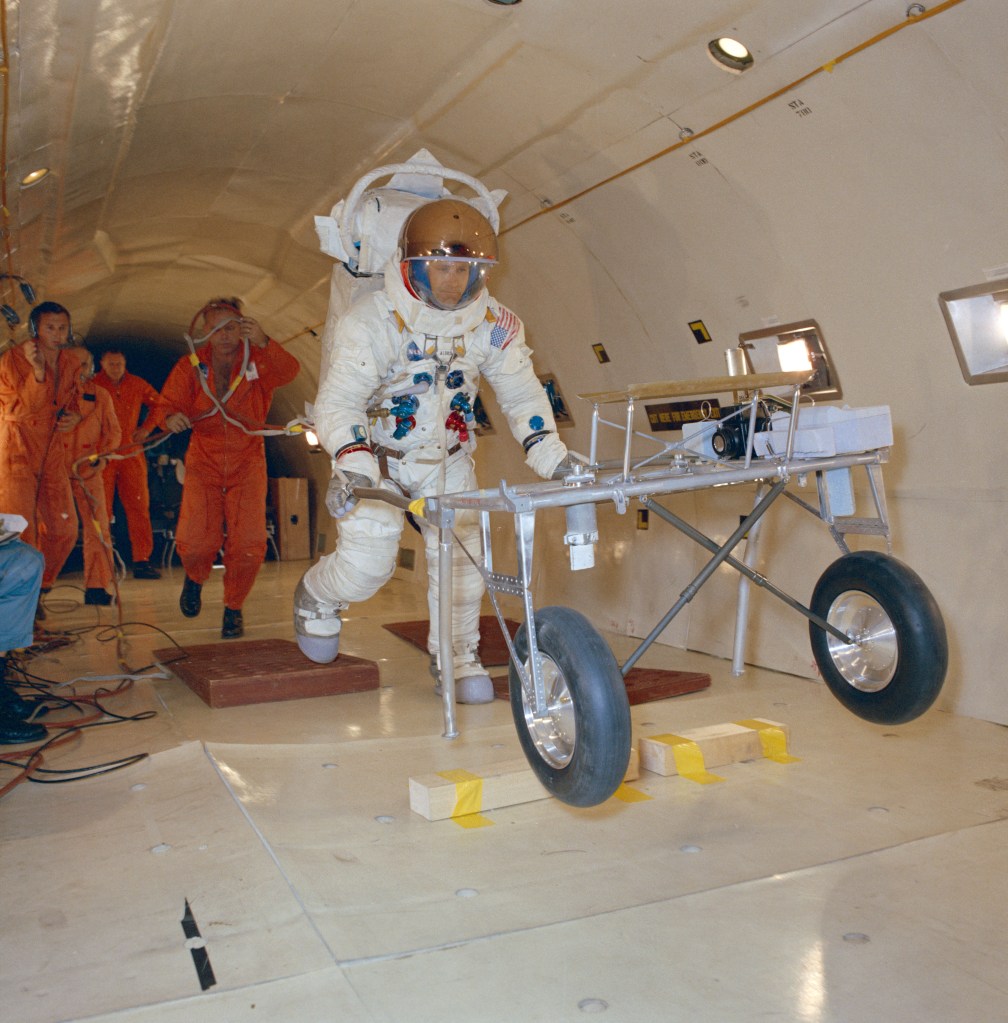
The Apollo 14 astronauts made the first use of the Modular Equipment Transporter (MET), a golf-cart like wheeled conveyance to transport their tools and lunar samples. A team led by project design engineer William Creasy developed the MET based on recommendations from the first two Moon landing crews on how to improve efficiency on the lunar surface. Creasy and his team demonstrated the MET to Sally LaMere, editor of The Roundup, MSC’s employee newsletter. Three support astronauts, William Pogue, Anthony “Tony” England, and Gordon Fullerton tested the MET prototype in simulated one-sixth lunar gravity during parabolic aircraft flights.
To be continued …
News from around the world in January 1970:
January 1 – President Richard Nixon signs the National Environmental Protection Act into law.
January 4 – The Beatles hold their final recording session at Abbey Road Studios in London.
January 5 – Daytime soap opera All My Children premieres.
January 11 – The Kansas City Chiefs beat the Minnesota Vikings 23-7 in Super Bowl IV, played in Tulane Stadium in New Orleans.
January 22 – Pan American Airlines flies the first scheduled commercial Boeing-747 flight from New York to London.
January 14 – Diana Ross and the Supremes perform their final concert in Las Vegas.
January 25 – The film M*A*S*H, directed by Robert Altman, premieres.
January 26 – Simon & Garfunkel release Bridge Over Troubled Water, their fifth and final album.
Jimmy Carter ‘killer rabbit attack’ story highlighted his struggles as president
After the passing of 100-year-old former President Jimmy Carter, many are recalling the "killer rabbit" incident in which Carter had to fight off a berserk swamp creature while fishing in his hometown of Plains, Georgia.
The bizarre incident occurred in April 1979 but was not known to the public until months later when, according to an account by then White House Press Secretary Jody Powell, the press official shared the story with reporter Brooks Jackson. After the story broke, it captured the American imagination and came to be seen as emblematic of the Carter presidency, which many perceived as ineffective and flailing.
Sensationalized headlines ran across the country such as the Washington Post’s "Bunny Goes Bugs. Rabbit Attacks President" and the New York Times’s "A Tale of Carter and the ‘Killer Rabbit.’"
TRIBUTES POUR IN FROM CONGRESSIONAL LAWMAKERS AFTER JIMMY CARTER'S DEATH: 'A GREAT HUMANITARIAN'
The story, which is backed by a photograph taken by a White House staffer, goes that Carter, while fishing near Plains, suddenly noticed a large swamp rabbit swimming quickly toward him. Powell said that "this large, wet animal, making strange hissing noises and gnashing its teeth, was intent upon climbing into the Presidential boat." Carter used a paddle to splash water at the creature, causing it to change course and swim away.
The New York Times reported in August 1979 that the rabbit had "penetrated Secret Service security and attacked President Carter," forcing him to "beat back the animal with a canoe paddle." The outlet reported one White House staffer saying, "the President was swinging for his life."
The picture, which was not released by the White House until after Carter lost his re-election effort to Ronald Reagan in 1980, shows the now-deceased president splashing water as a large rabbit, its ears poking out of the water, swims away.
JIMMY CARTER, FORMER US PRESIDENT, REMEMBERED IN SPORTS WORLD AFTER DEATH
Carter’s account of the incident is somewhat less dramatic. The deceased president said: "A rabbit was being chased by hounds and he jumped in the water and swam toward my boat. When he got almost there, I splashed some water with a paddle and the rabbit turned and went on and crawled out on the other side."
However, that did not stop national and local media outlets from running the story about the "killer rabbit" far and wide.
In 1979, Carter was in the middle of his one-term presidency. He was facing several difficulties both at home and abroad, including an energy crisis and economic issues and the Iran hostage crisis. Amid these troubles, Carter’s approval ratings took a dramatic dip, and he reached some of the highest disapproval numbers of his entire presidency.
While newspaper accounts of the "banzai bunny" and cartoons of giant, bucktoothed rabbits were clearly fanciful, many came to see the whole story as a sort of metaphor for Carter’s struggling presidency.
Powell, who originally thought of the incident as an innocent, comical story, later said he had come to regret his decision to share it with the press because of the way it was used to portray the president as so weak and inept that he was even afraid of a bunny.
Powell described the events as a "nightmare" in his 1985 memoir "The Other Side of the Story."
"It still makes my flesh crawl to think I could have been so foolish, I thought it was funny," he wrote. "Had I been doing my job, I would have stopped the President at that moment, pointed out the dangers to him and his administration if such a story ever got out. . . . Sadly, I did nothing of the kind."
Carter, a Democrat, served as the nation’s 39th president from 1977 to 1981. He was the longest-living president in U.S. history, passing away at the age of 100 in his home in Plains on Dec. 29 at 3:45 p.m. An outspoken Christian, Carter was known for his significant humanitarian efforts after his presidency and was awarded a Nobel Peace Prize in 2002.
Why President Jimmy Carter was famous for peanuts
Jimmy Carter, the 39th president of the United States, was long associated with peanuts — an enduring symbol of his humble beginnings and a testament to the values of hard work that he embraced during his lifetime.
Before entering the political arena, Carter, who passed away at age 100 on Sunday, Dec. 29, 2024, managed his family's peanut farm in Plains, Georgia, according to the National Park Service (NPS).
"The key to peanut harvest was the threshing machine, which we called a ‘picker’ because it picked the nuts from the vines," said Carter, the NPS noted.
JIMMY CARTER SPENT NEARLY 2 YEARS IN HOSPICE CARE BEFORE HIS DEATH
"It was most often driven by a flat belt from the rear axle or wheel of a truck, and the dried stacks were hauled to it on wooden sleds, each pulled by a mule," Carter also said, the same source reported.
He added, "This was a big and important operation and involved all the men on the place."
After his father passed, Carter resigned from the U.S. Navy in 1953.
He saw fortune in expanding the three acres of peanuts on the farm.
For more Lifestyle articles, visit www.foxnews.com/lifestyle
Carter began growing peanut seeds himself, opening "Carter’s Warehouse," which sold seeds and shelling.
The agri-business also supplied corn, ginned cotton, liquid nitrogen, bulk fertilizer and lime.
Carter’s connection to peanuts became a defining feature of his public image.
CLICK HERE TO SIGN UP FOR OUR LIFESTYLE NEWSLETTER
It became a symbol for his White House bid, reflecting his dedication to representing everyday Americans.
The Jimmy Carter Presidential Campaign Committee even handed out bags of peanuts with "Jimmy Carter for President" during his run against Republican Gerald Ford.
In Oct. 1977, President Carter and first lady Rosalynn Carter hosted a Peanut Brigade Party.
The First Family hosted 500 Georgian supporters on the South Lawn for a barbecue and boiled peanuts, according to the White House Historical Association (WHAA).
